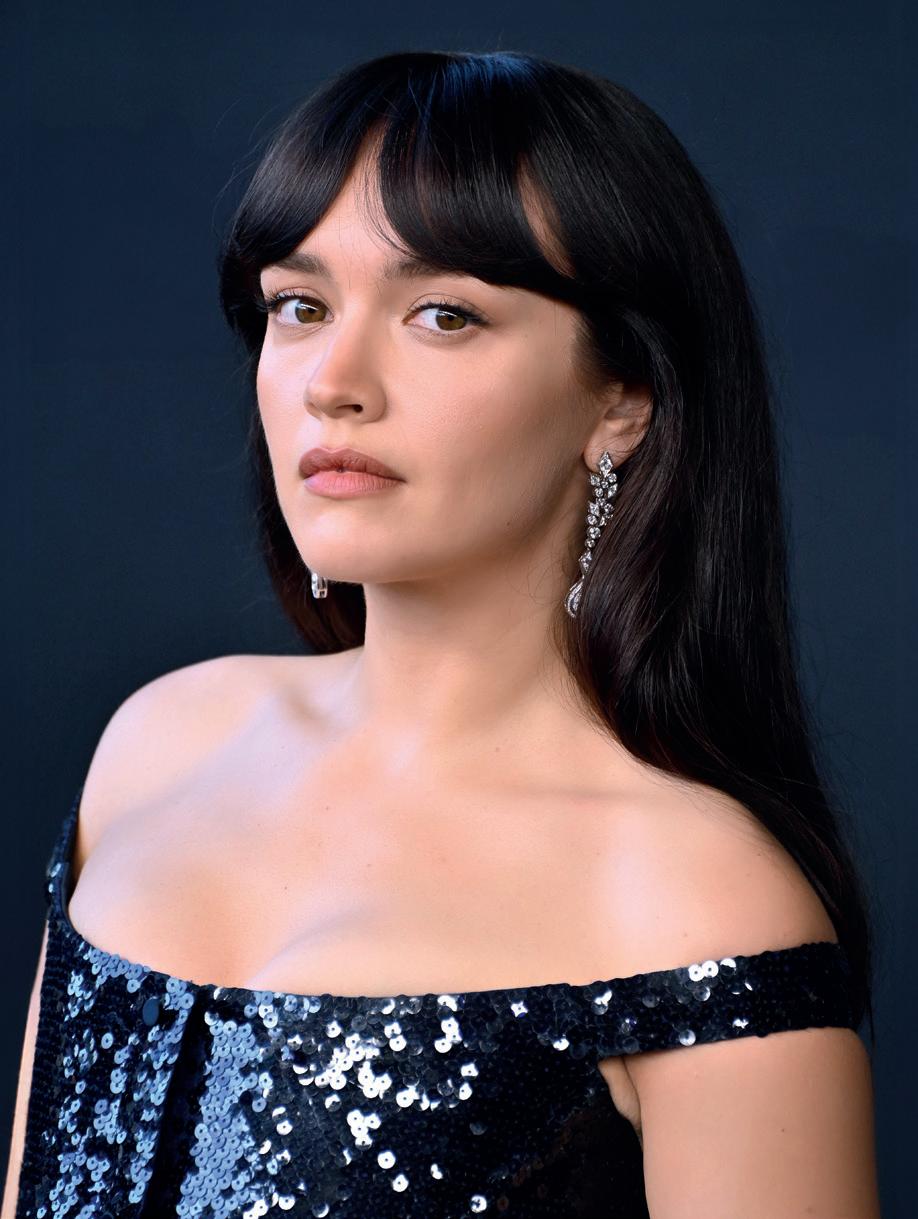

Sign@ e
The Next Chapter of Livi n g

The Tallest Expression of Sobha’s Vision
Rising 70 floors into the skyline, The S is more than the tallest tower in Sobha Hartland II- it is the purest expression of Sobha’s design philosophy, representing the peak of architectural distinction and timeless elegance.
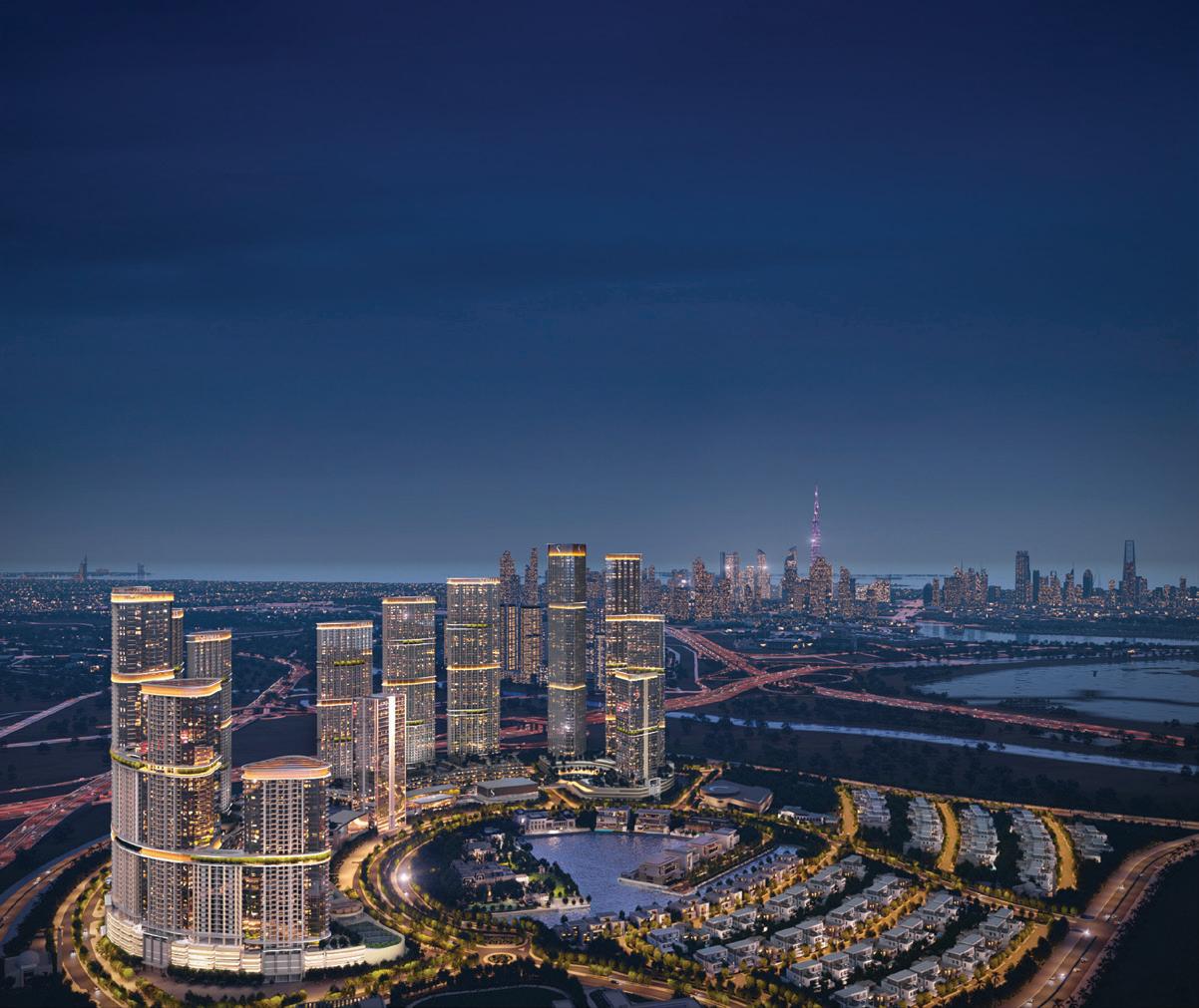

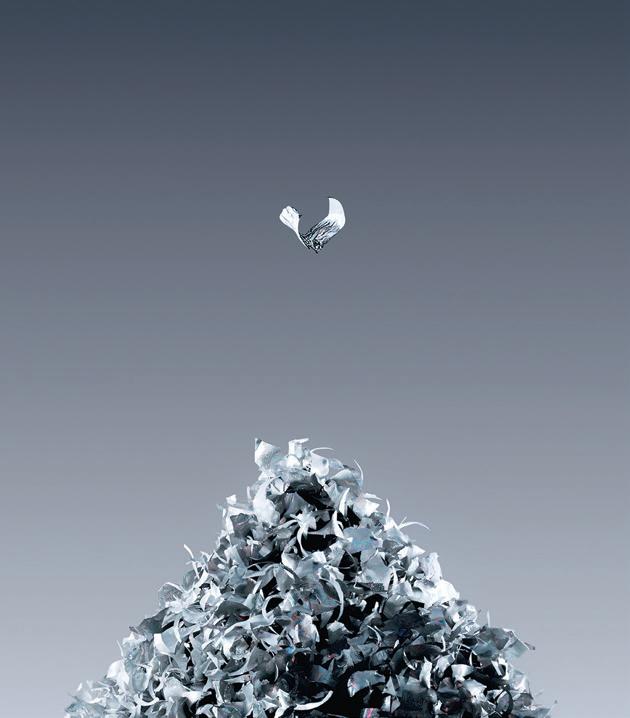
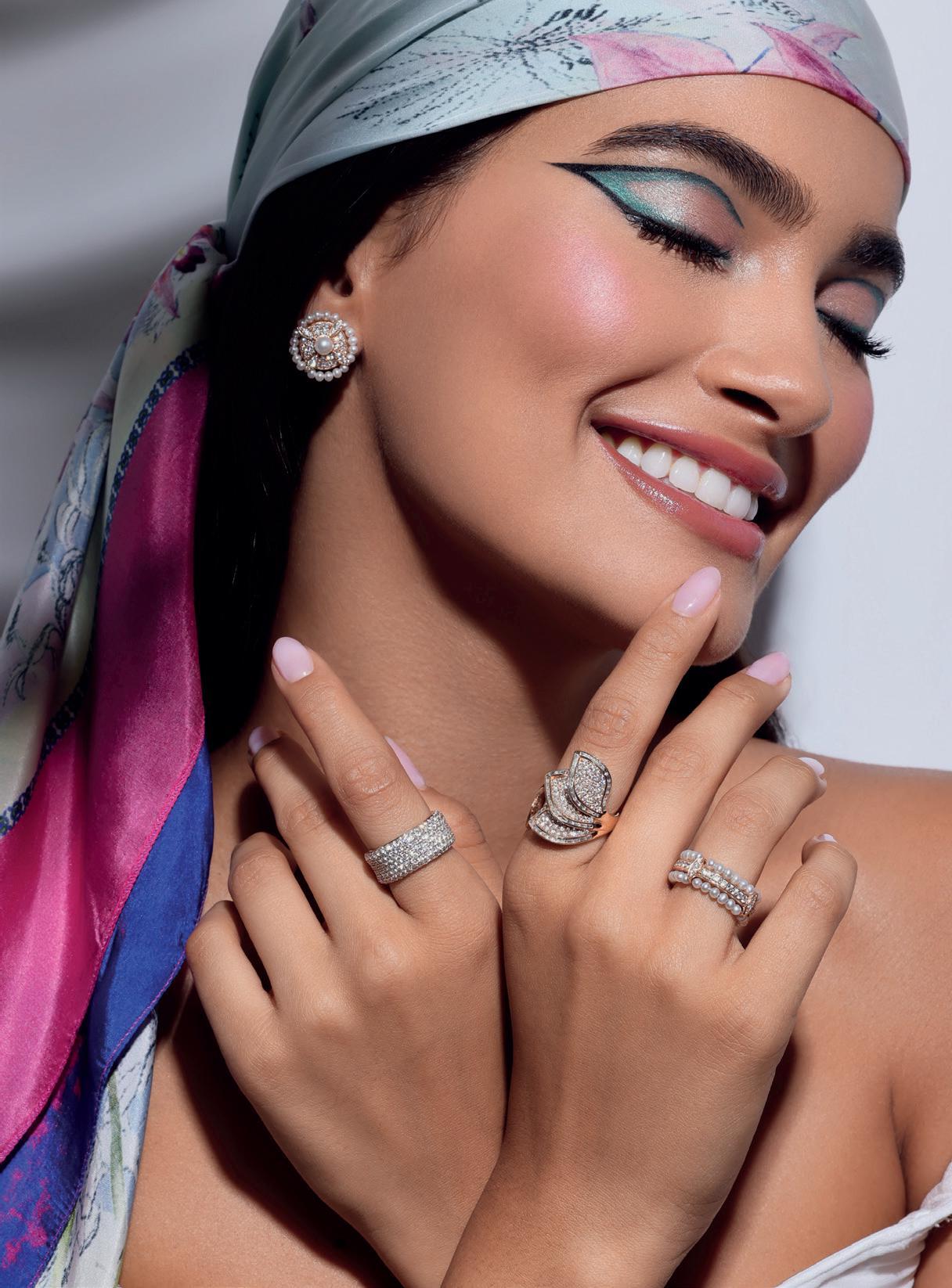


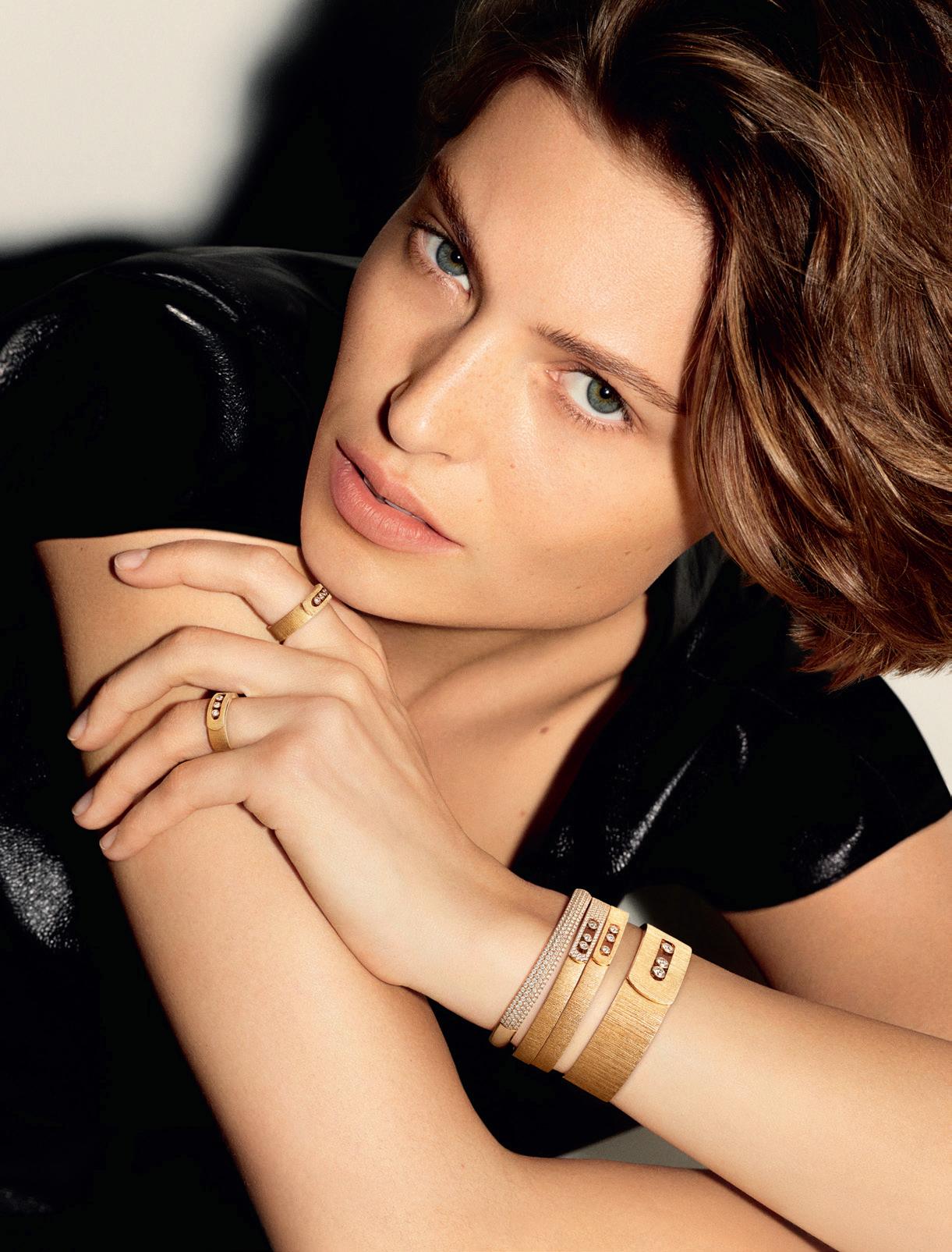
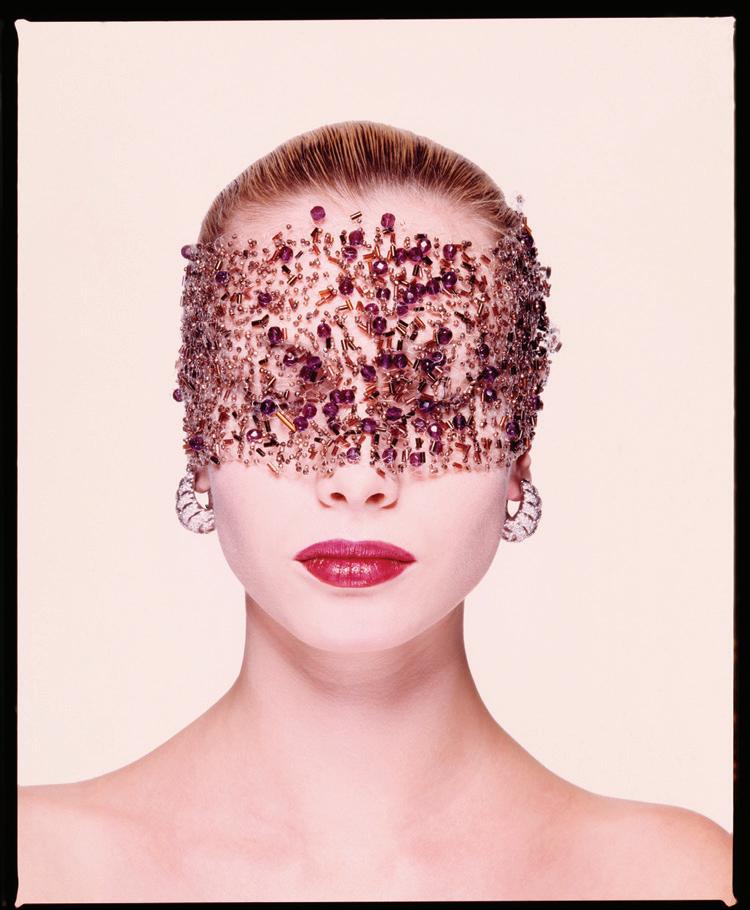
FEATURES
Thirty Four You Do You
House of the Dragon star Olivia Cooke on her new role, staying true to herself, the problem with dating and imposter syndrome.
Thirty Eight Picture This
For over sixty years, Gian Paolo Barbieri was one of the most influential photographers in fashion. A new exhibition considers his eternal appeal.
Forty Six Endless Love
Two years on from debuting her namesake label in Paris, Tamara Ralph talks lessons learnt, the joy of motherhood, and crafting couture.
Credit: Jewel mask, Milan, 2000 © Gian Paolo Barnieri

REGULARS
Sixteen Radar
Eighteen Objects of Desire
Twenty Art & Design
Twenty Six Jewellery
Thirty Timepieces
Fifty Two Motoring
Fifty Six Gastronomy
Sixty Eight What I Know Now
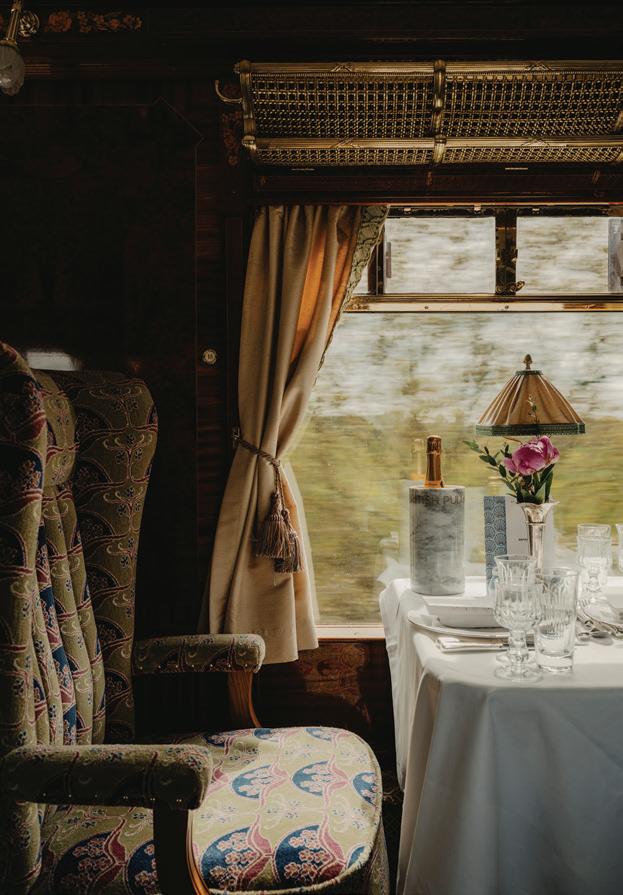
Sixty Travel
Why a daytrip to the beautiful city of Bath onboard the iconic British Pullman train is the kind of experience that makes Britain great.
EDITORIAL
Editor-in-Chief & Co-owner
John Thatcher john@hotmedia.me
COMMERCIAL
Managing Director & Co-owner
Victoria Thatcher victoria@hotmedia.me
PRODUCTION
Digital Media Manager Muthu Kumar muthu@hotmedia.me
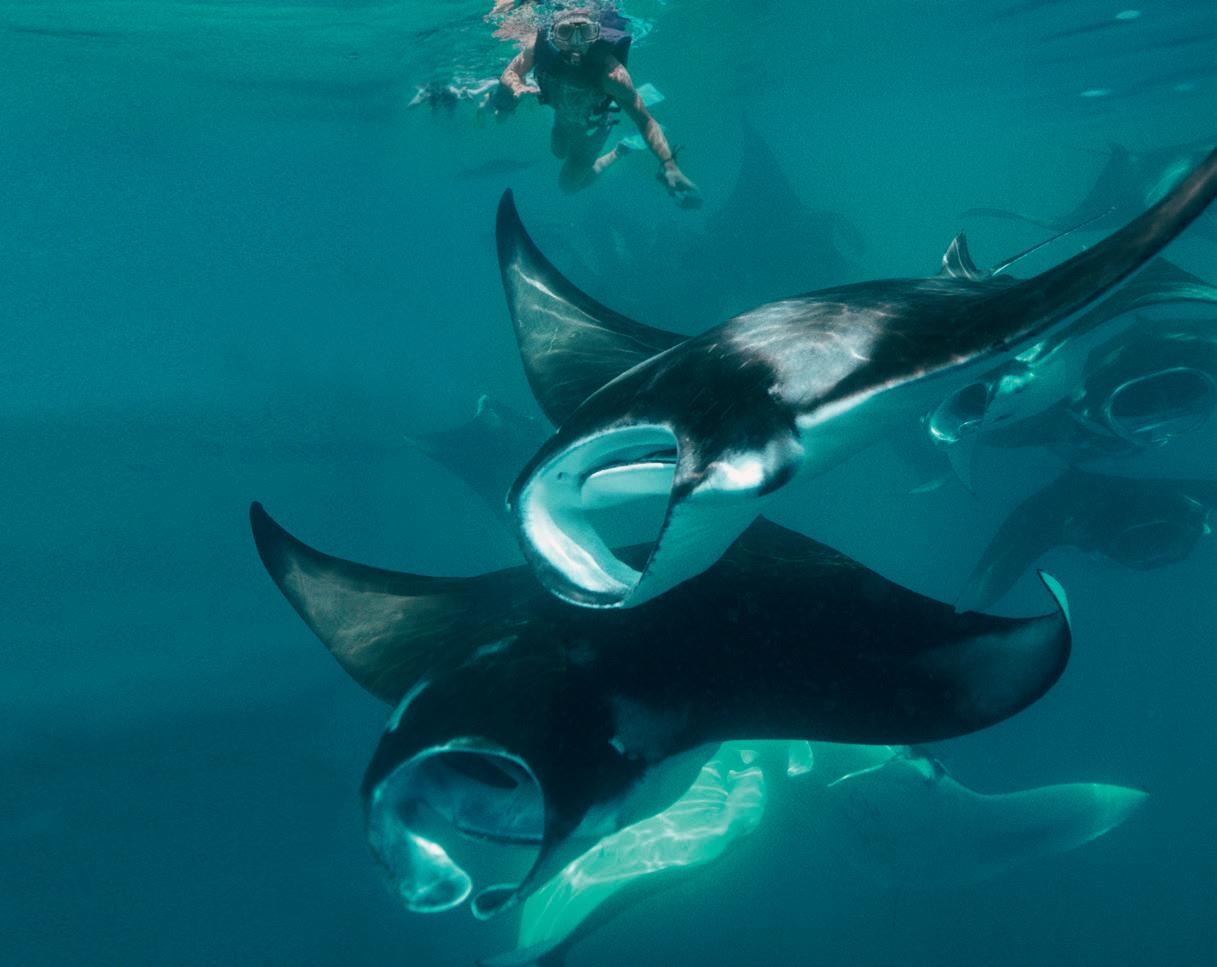


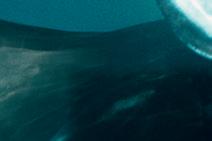












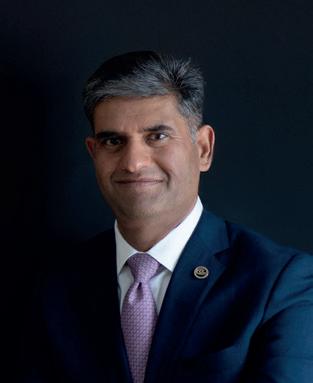
Welcome Onboard
OCTOBER 2025
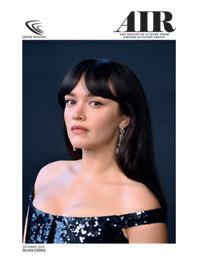
Welcome to this issue of AIR – our monthly lifestyle magazine for those who share our passion for private aviation and the finest travel experiences. If you’re reading this onboard an Empire operated flight, we wish you a comfortable and relaxing journey in the capable hands of our expert team.
Talking about our expert team, we were delighted to welcome a Bombardier Global 5000 business jet to our managed fleet recently. It’s not very unusual for us to induct a new aircraft to the fleet but this particular acquisition for the owner highlights very clearly the steps involved in the quite complex process of moving from purchase through to preparing the aircraft for its first flight.
It’s a (rightly) demanding process and requires the skills and experience of a team of experts with the technical knowledge to complete an aircraft technical evaluation before moving to induction and delivery. Following this, there are the equally demanding requirements to register and obtain operational certification for the aircraft before recruiting and training the appropriate crew members, and the positioning of the business jet at its operating base with the appropriate customer and technical support services available.
It’s a challenge and it takes a strong team to complete it, efficiently. Fortunately, we are in a position to do this and have successfully been through a similar process with many types of aircraft over the last 20 years or so. However, every process is a little different, depending on the aircraft involved and the owner’s preferences.
The Global 5000 is a fantastic airplane and is registered in San Marino through our AOC (Air Operator Certificate) and based in the Middle East. We will manage the aircraft on behalf of the owner and it will also be available to charter – it’s very versatile, comfortable and very well equipped with efficient and economical performance making it a great choice for longer range missions. We believe it will attract a lot of interest. You can read more the Global 5000 in this issue. You can also read about a personal industry recognition that I was accorded by Aviation Business Middle East, which is very satisfying and a recognition of the quality of the team that I have the privilege to lead. It’s humbling to be cited alongside the giants of the regional aviation industry and my thanks to ABME.
Enjoy the read.
Paras P. Dhamecha Founder and Managing Director
About Empire Aviation Group
Since launching in Dubai UAE in 2007, Empire Aviation has developed into a global private aviation business integrating a comprehensive range of services, based on a distinctive aircraft management approach and personalised service, ensuring aircraft owners and charter clients enjoy all the privacy, safety, comfort and convenience of private aviation. Empire Aviation operates one of the Middle East’s largest managed fleets of business jets, with aircraft based in global locations. The company operates in the key regions for private aviation, covering the USA, Europe, India, Africa and Indonesia, in addition to the Middle East. Empire Aviation Group is the authorised International Sales Representative (ISR) for Gulfstream business aircraft sales activities in India, responsible for promoting and supporting Gulfstream with customers and prospects throughout India. The multi award-winning Empire Aviation team comprises 130 aviation specialists across the globe. Empire Aviation holds AOCs (Air Operator Certificates) in the UAE and San Marino.
Contact Details: info@empire.aero • empireaviation.com
Cover : Olivia Cooke Alamy
Empire Aviation Group
Meet The Bombardier Global 5000 Business Jet
The team at Empire Aviation had the privilege of welcoming a Bombardier Global 5000 to the managed fleet and will operate the aircraft on behalf of the owner, as well as offer it for charter

The Bombardier Global 5000 is a long-range, large-cabin business jet designed to balance speed, comfort, and intercontinental performance. Introduced in 2005 as part of Bombardier’s Global Express family, the aircraft was developed to serve corporate, government, and VIP travellers who require nonstop connections between major international cities while enjoying a high level of cabin luxury.
The Global 5000 shares its heritage with the larger Global 6000, offering slightly reduced range in exchange for a more economical operating profile. It is powered by two Rolls-Royce turbofan engines, each producing over 14,000 pounds of thrust, enabling the aircraft to cruise at Mach 0.85 (1,049 km/h) with a top speed of Mach 0.89 (1,098 km/h). With a maximum range
of approximately 5,200 nautical miles (9,630 km), the jet can comfortably connect cities such as New York to Moscow, London to Los Angeles, or Dubai to Tokyo without refuelling. One of the aircraft’s most notable strengths is its cabin. Measuring nearly seven feet wide and over six feet tall, the interior provides ample space for up to 16 passengers in a variety of customisable layouts. The cabin is divided into distinct zones – typically a forward seating or conference area, a mid-cabin dining or lounge space, and an aft private stateroom or relaxation area. The aircraft is equipped with a full galley, crew rest options, and a bathroom with optional shower, ensuring comfort on long-haul missions. Advanced noise-reduction technologies and Bombardier’s cabin management system enhance the onboard
experience, while high-speed Ka-band internet enables productivity in flight. From a cockpit perspective, the Global 5000 employs the Bombardier Vision flight deck based on the Rockwell Collins Pro Line Fusion avionics suite. This system includes four large LCD displays, synthetic vision, head-up guidance, and advanced navigation capabilities that increase pilot situational awareness and operational safety. Positioned between super-midsize jets and ultra-long-range flagships, the Global 5000 has proven to be attractive to corporations, governments, and highnet-worth individuals worldwide. Its blend of range, speed, and luxury makes it a versatile choice for those who value global reach and productivity without compromising cabin comfort, and an attractive choice for charter clients.
Bombardier Global 5000

Empire Aviation Founder Makes Aviation A Team
With a fleet expansion, global awards, and a new headquarters on the horizon, Paras Dhamecha is redefining the future of private aviation from Dubai

Paras P. Dhamecha, Founder and Managing Director of Empire Aviation Group, has been hailed among Aviation Business Middle East’s A-Listers Power List 2025 in recognition of building one of the region’s most respected names in private aviation. Combining entrepreneurial vision with a lifelong passion for flying, Paras’ journey began at just 10 years old when he first learned to fly in Dubai, later pursuing finance and economics at Purdue University in the United States and completing the Owner President Management Program at Harvard Business School.
In 2007, Paras founded Empire Aviation Group with a distinctive asset management approach to private aviation, building on earlier ventures he had launched in the sector since 2003. His philosophy is rooted in the belief that aviation is fundamentally a people business, where transparency, service, and trust underpin long-term relationships with aircraft owners and clients. Under his leadership, the company has expanded globally, integrating aircraft sales,
management, CAMO, and charter services, while innovating through initiatives such as the Luxury Partner programme and advanced aviation management platforms.
Over the past year, Empire Aviation has significantly strengthened its managed fleet with the induction of seven aircraft, including the Gulfstream G700, G600, and G280, as well as Dassault and Bombardier models.
The company’s achievements have been recognised with prestigious accolades such as the MEA Business Achievement Awards for Outstanding Leadership and the Aviation Achievement Award for Aircraft Management Service Provider of the Year. Looking ahead, Paras is leading the development of a new multi-purpose corporate facility adjacent to Dubai’s VIP Terminal at MBRAH (Mohammed bin Rashid Aviation Hub). Set to open in 2026, it will serve as Empire Aviation’s global headquarters and a hub for business aviation, further cementing Dubai’s position as an international aviation capital.
Paras P. Dhamecha, Founder and Managing Director
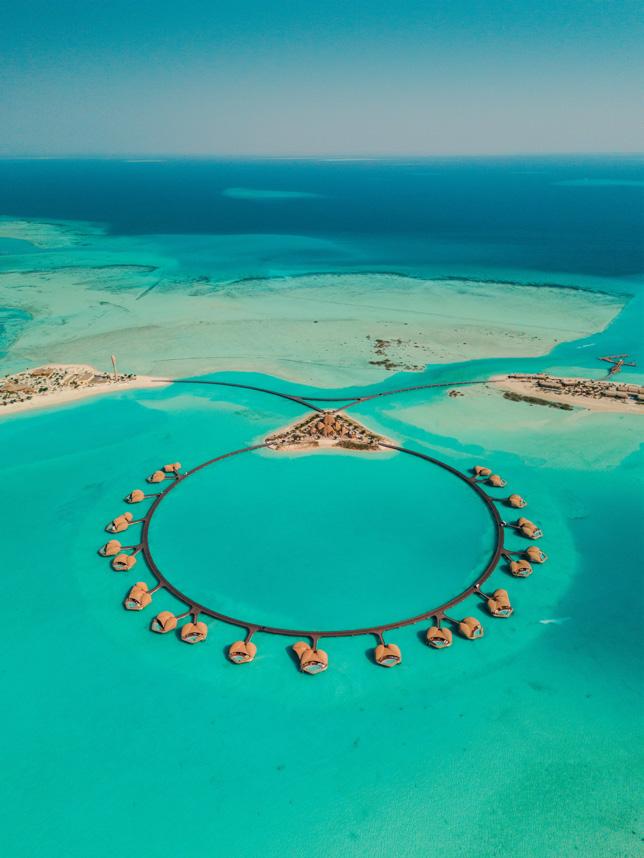
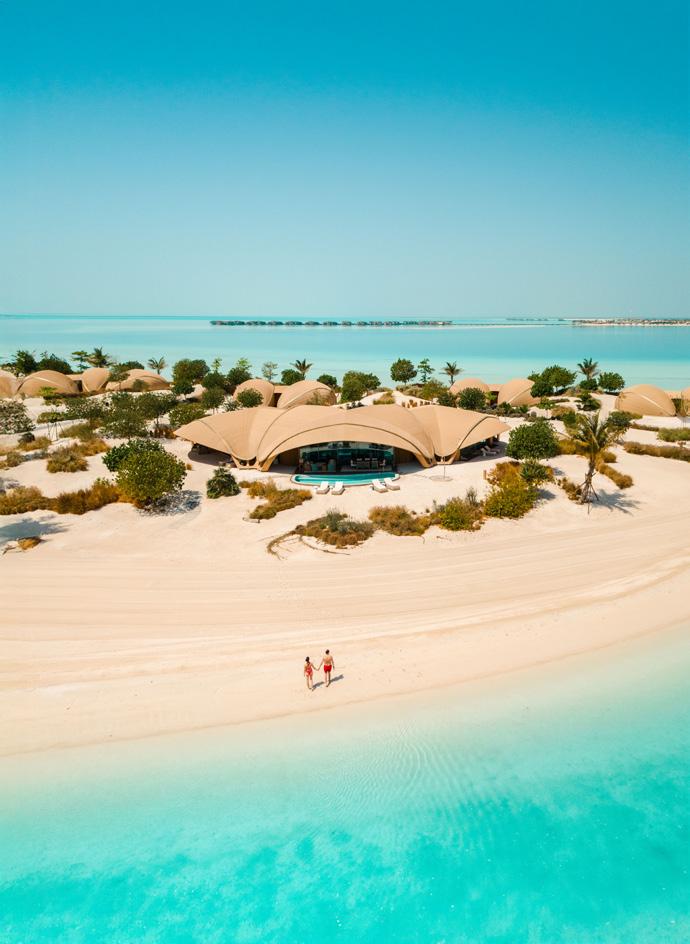
Chanel’s storied history of haute couture is told through the gaze of Sofia Coppola for a new book that’s a captivating – and visually rich –mix of previously unseen sketches, behind-the-scenes and archival material, and the exceptional photography that is a hallmark of the house. A story that began with Gabrielle Chanel making haute couture garments more than a century ago unfolds over 450 pages, each one selected to fit the masterful vision of Coppola, whose own history with Chanel dates to a period of work experience she undertook with its renowned Creative Studio in Paris when aged only 15.
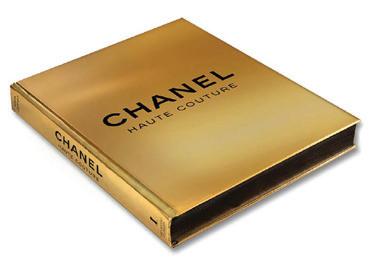
Chanel Haute Couture is co-published by Éditions 7L and Important Flowers and is out now
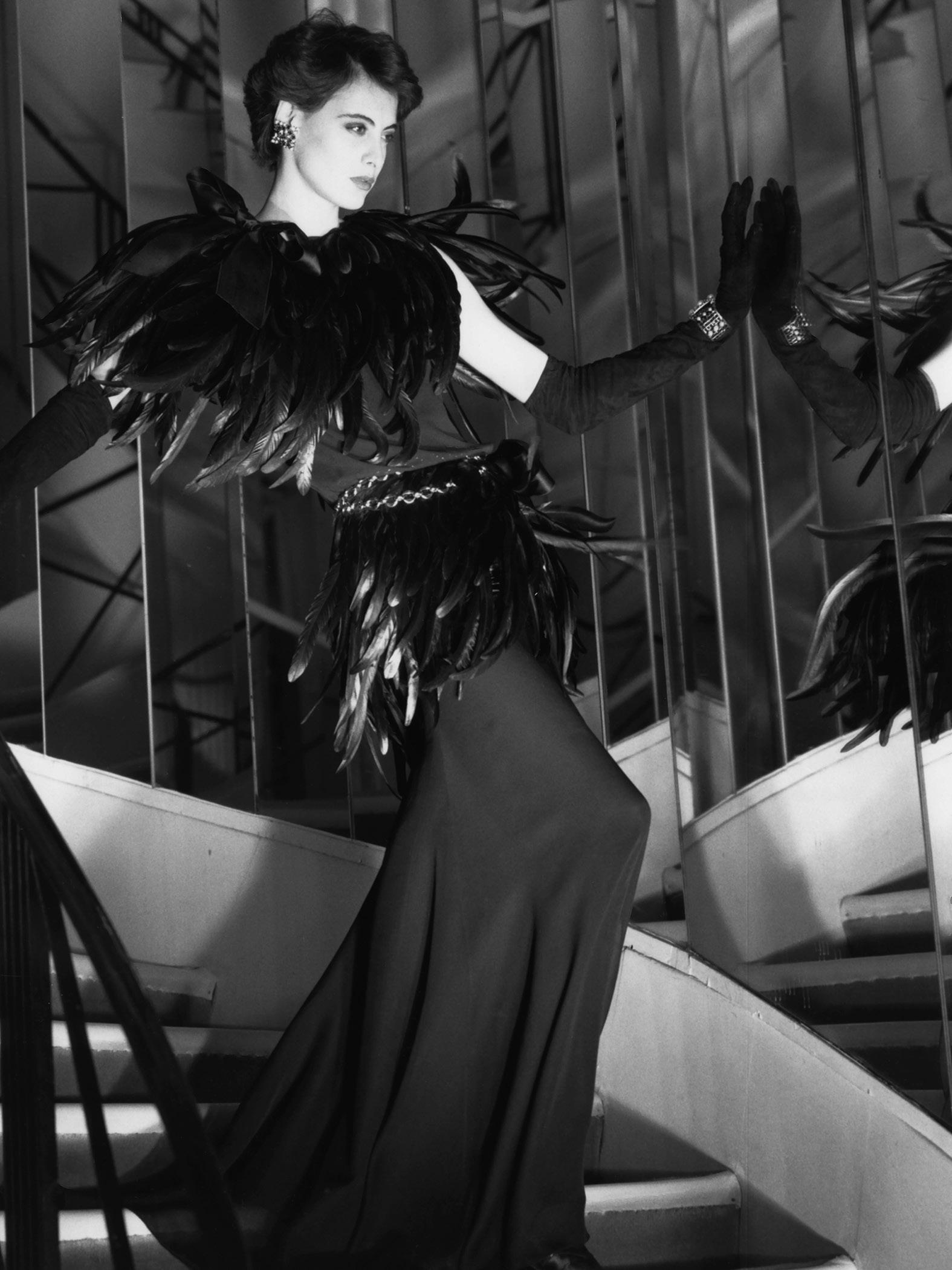
OBJECTS OF DESIRE
Master craftsmanship, effortless style and timeless appeal; this month’s must-haves and collectibles
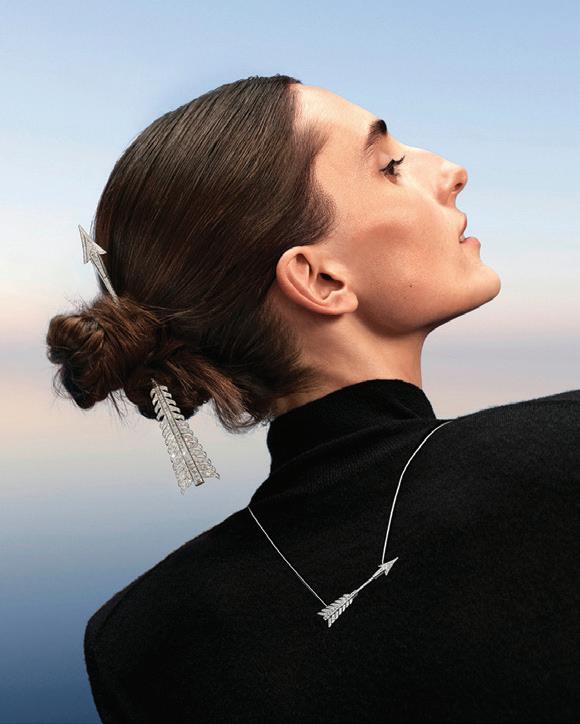
BOUCHERON FLÈCHE
As far back as the 1860s Boucheron had an arrow in its sights, the maison’s creative vision playing on the arrow’s dual symbolism – that of love and war –to create a long-running series of richly decorated pieces influenced by the overarching design trend of the time, from
modern orientalism to Art Deco. Drawing the arrow once again, Boucheron’s current creative director, Claire Choisne, has created eight diamond-laced original designs, including this pendant and extralarge brooch which, as shown, can be worn in multiple ways.
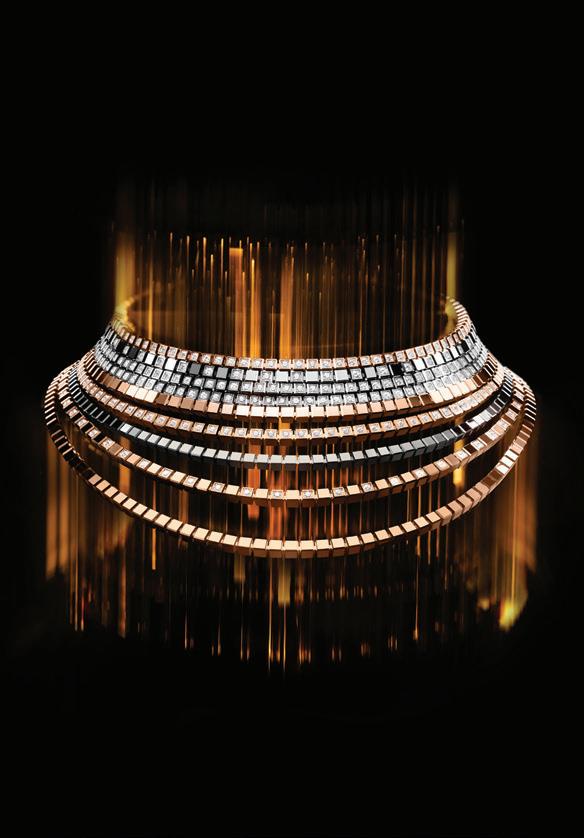
“Ice Cube has always represented purity and precision,” said Caroline Scheufele, Co-President and Artistic Director of Chopard, when asked about the newest additions to the daring high jewellery line.
“But here, we pushed its language even further – into volume, movement, and
expression. I wanted the pieces to feel wearable yet unexpected, like modern art for the body.” The highlight is this oneof-a-kind modular necklace, composed of nine rows of articulated cubes in two sizes crafted from a mix of ethical rose and white gold and diamonds.
CHOPARD ICE CUBE
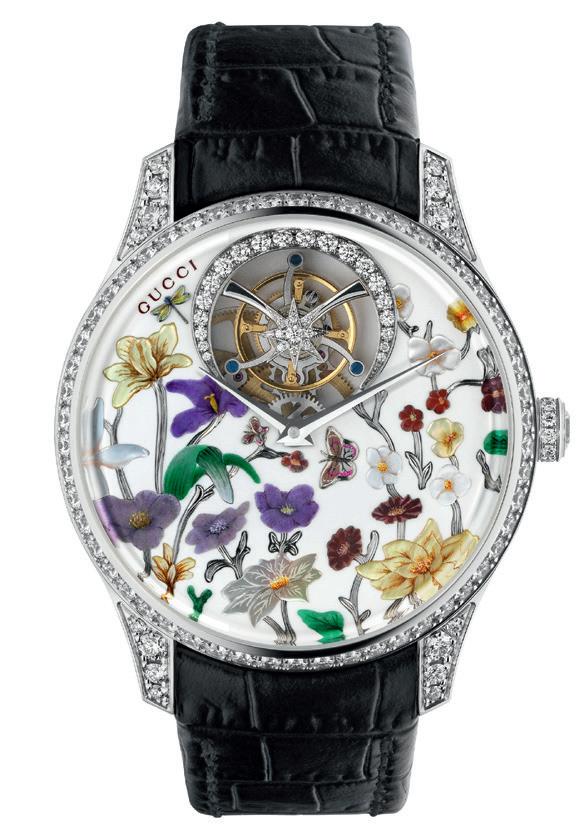
Gucci’s fifth high watchmaking collection is a blissful marriage of skill and craft, with a quintet of G-Timeless pieces the undoubted highlights. Inspired by the colourful scenes that were painted onto the brand’s archival silk scarves, it’s Vittorio Accornero’s
emblematic Flora print that takes centre stage here, the dial decorated in handpainted miniature flowers and handengraved inlays. Further featuring white gold, diamonds, and white grand feu enamelling, it is powered by a diamondset tourbillon.
GUCCI G-TIMELESS

As the first of the Neue Klasse models, all eyes were on the iX3 when it debuted at last month’s Munich Motor Show. And once the wraps came off it, all of those eyes were smiling. “The Neue Klasse is our biggest futurefocused project and marks a huge
leap forward in terms of technologies, driving experience and design,” said Oliver Zipse, Chairman of the Board of Management of BMW AG. It’s the explicitly modern interior design that drew our applause; a look created solely for electric models.

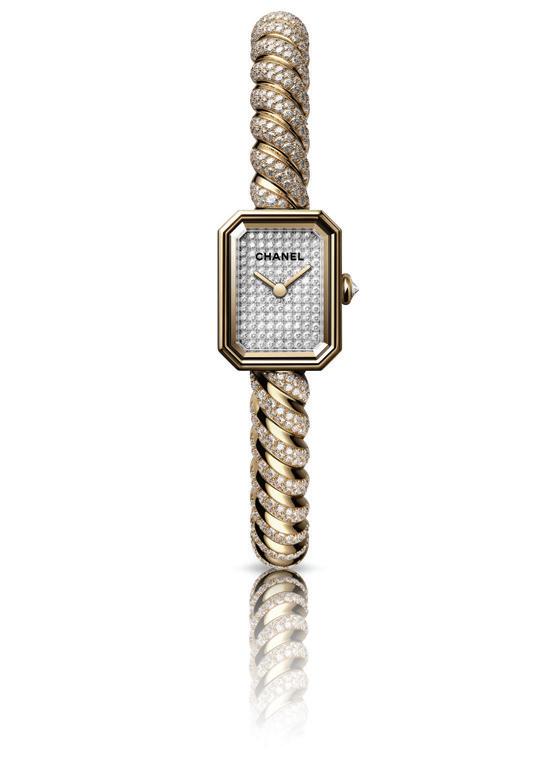
It was back in 1987 that Chanel launched its first timepiece – the therefore titled Première – an elegant piece that reinterpreted design codes from the house: its octagonal shape mirroring that of the N°5 perfume bottle stopper and its leather
bracelet adapted from the leather chain on the signature quilted bag. For this latest iteration of the watch, the Chanel braid is the source of design inspiration, effecting a twisted 18-carat yellow gold bracelet set with 573 brilliant-cut diamonds.
CHANEL PREMIÈRE GALON DIAMONDS
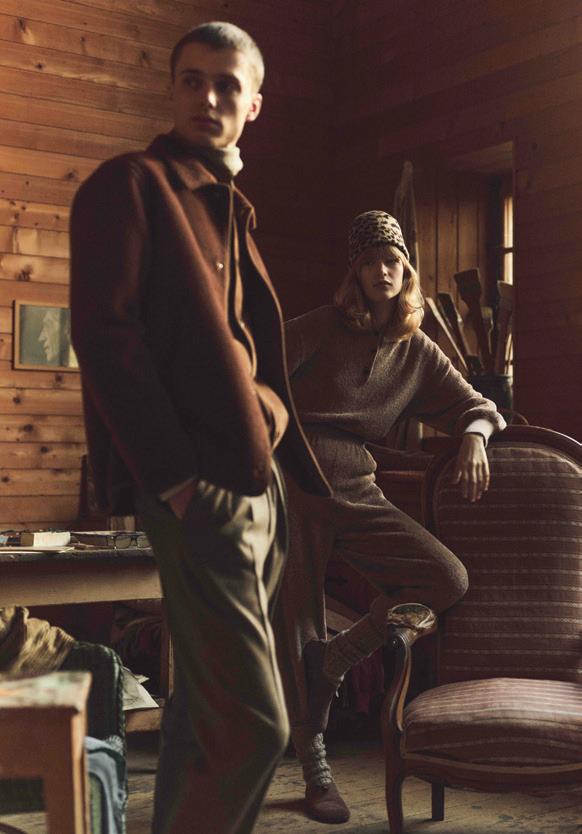
LORO PIANA X BERGDORF GOODMAN
New York plays a central role in the story of Loro Piana. As frequent visitors to the city, Sergio and Pier Luigi drew inspiration from its rich, vibrant culture, choosing to open the brand’s first office –and then a concept store – in Manhattan. Honouring that heritage, Loro Piana
has partnered with New York’s storied department store, Bergdorf Goodman, to offer the store’s customers an edit of exclusive products (including the garments pictured here) as part of a storewide celebration that runs from October 17-November 3.
LORO PIANA
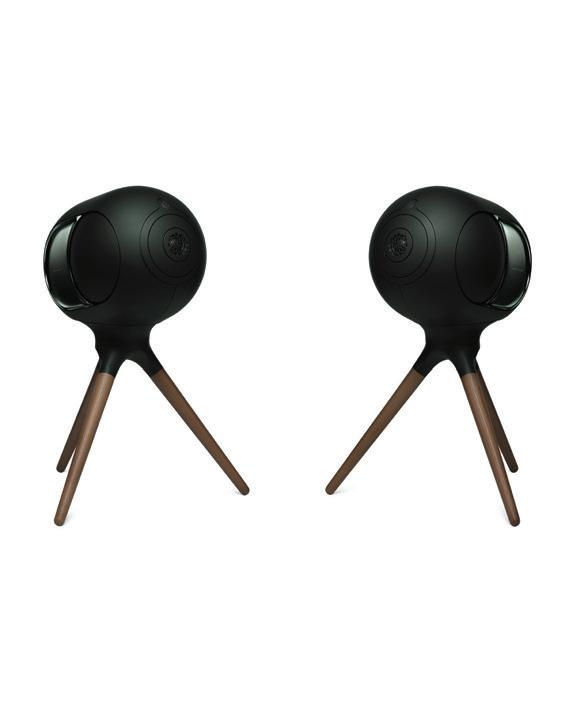
It has taken three years of research and development and the registration of 88 patents for Devialet’s engineers and designers to create a worthy successor to its award-winning Phantom line of high-end speakers. It was time well spent, elevating the pleasure of listening
to music to an art form. “This new era invites listeners to experience sound with unprecedented intensity, clarity, and depth. Behind this achievement lies engineering excellence – a true testament to our savoir-faire and expertise,” says the brand’s CEO, Jacques Demont.
DEVIALET
DEVIALET PHANTOM ULTIMATE
OBJECTS OF DESIRE
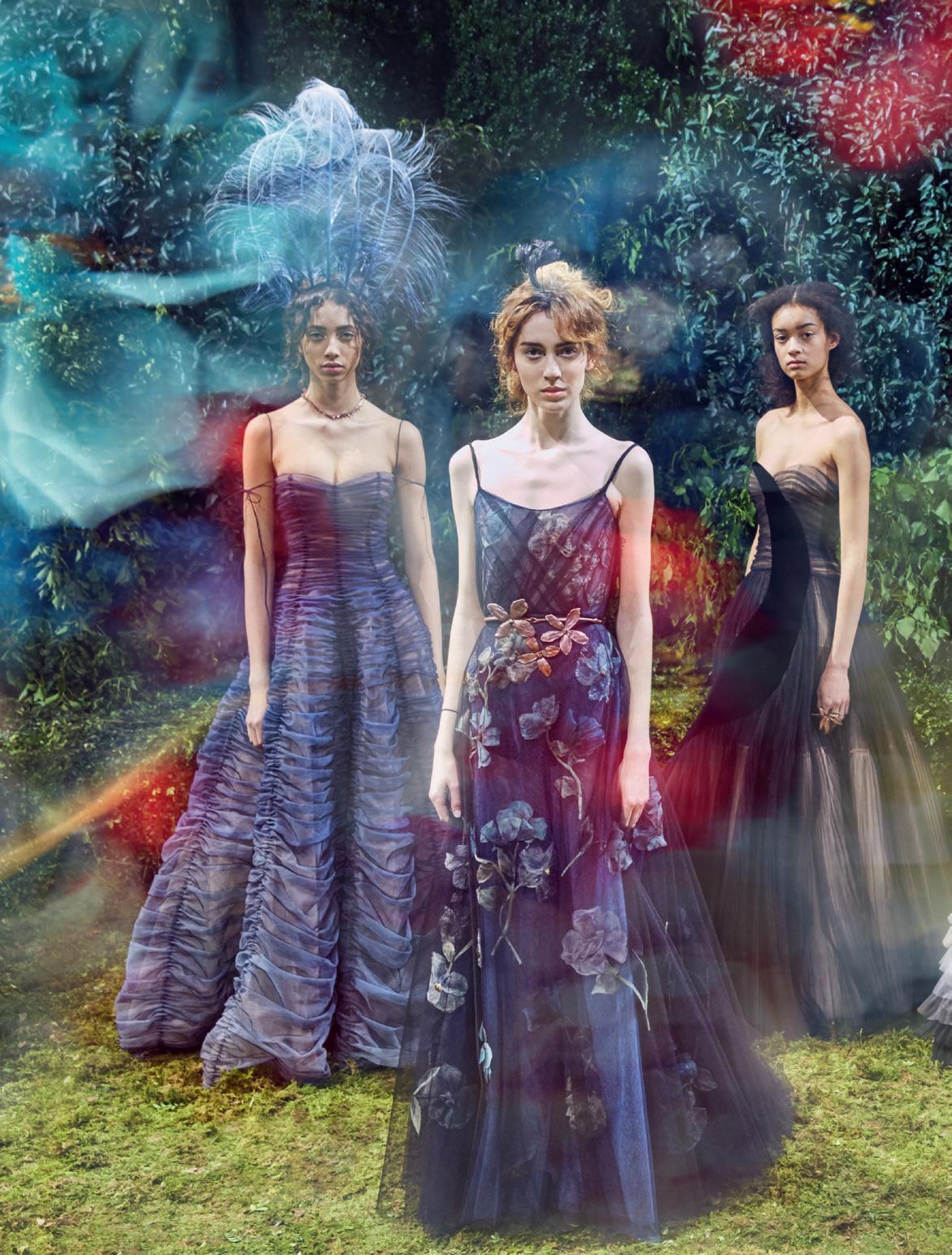

Grass Roots
A new exhibition and book explore Christian Dior’s beloved Normandy garden and its enduring impact on the brand’s designs
WORDS: FIONA MCCARTHY
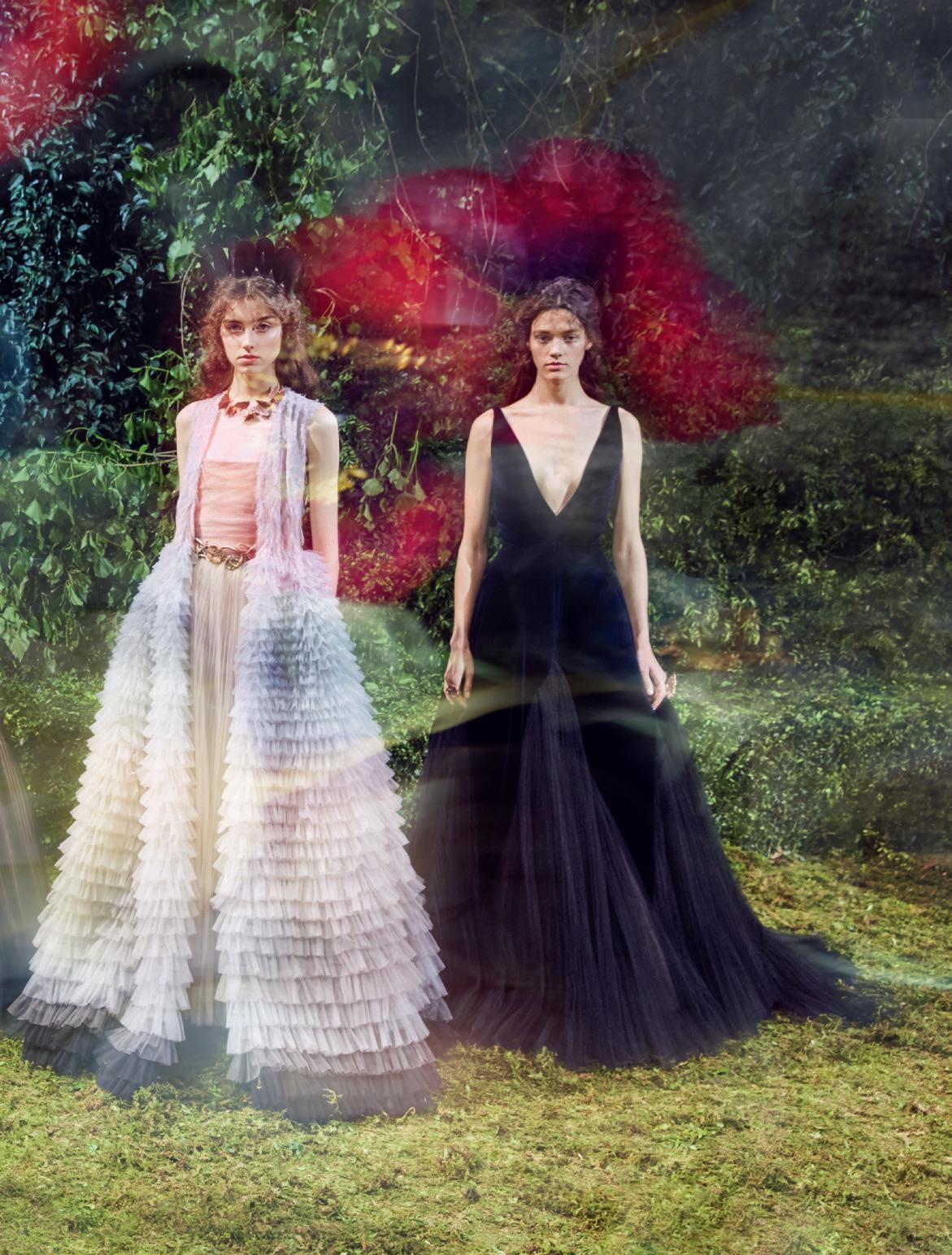
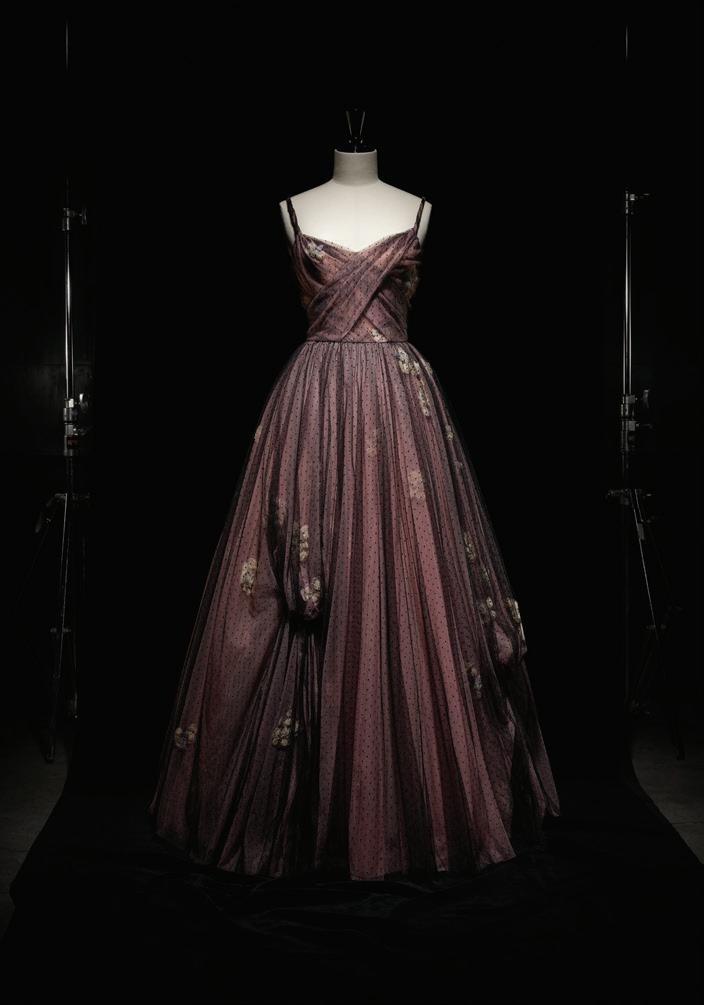
Acentury after the couturier Christian Dior spent his childhood in a house set high on the cliffs overlooking the Normandy seaside resort of Granville, the influence of these formative years remains deeply ingrained in the decorative spirit of the fashion house he founded.
“Thankfully, there are flowers,” Dior once enthused, a sentiment imbued throughout a new exhibition, Dior, Enchanting Gardens (with an accompanying book, published by Rizzoli). The exhibition is on show at the Museé Christian Dior, located on the site of his former seaside home Les Rhumbs (so named for the nautical measurement of lines extending from a compass rose, seen depicted as a mosaic in the villa’s hallway).
Dior caused a sensation in 1947 with his
New Look, a couture collection entitled ‘Corolle’ (the French for corolla, the ring of petals on a flower) featuring dresses cut to suggest upturned flowers in full bloom, but with lifted busts, softly sloped shoulders and cinched-in waists. The museum’s curator Brigitte Richart firmly believes that Dior threaded Granville through every stitch and seam of his designs.
From a duo of 1952 haute couture summer dresses intricately embellished with daisies and buttercups which Dior named ‘Vilmorin’ and ‘Andrieux’ – after the French seed catalogues from which he took great delight in the names and descriptions of flowers – to contemporary creations by former Dior creative directors including John Galliano, Marc Bohan and Maria Grazia Chiuri, the exhibition not
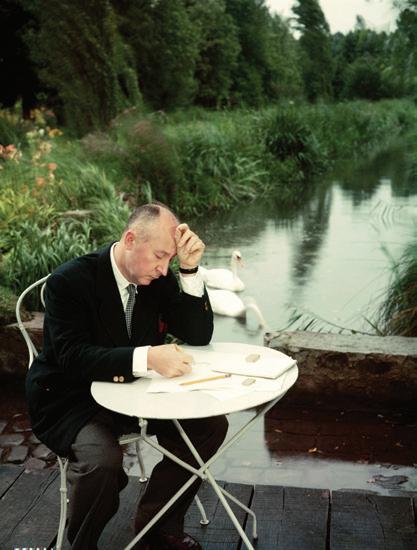
‘ Dior threaded Granville through every stitch and seam of his designs ’
only explores the brand’s associations with flora and foliage, but reveals the impact the Granville house and garden had on Dior and those following after him.
The Dior family moved into Les Rhumbs in 1906, at a time when it sat isolated high on cliffs overlooking the Chausey archipelago, surrounded by very little planting. “There was almost nothing here – no trees, no flowers,” says Richart. Dior’s mother, Madeleine, immediately set out to create “an oasis of greenery”, creating lush areas of lawn lined with flowerbeds, as well as a kitchen garden and a shielding windbreak of cypresses, pines, oaks and hornbeams – by 1921, the pines and conifers had grown to their full majestic height. She also added a winter garden room onto the front to the house, its vast
Opening pages: © Tierney Gearon
This page, from left to right: Dior Héritage collection, Paris, © Laziz Haman; Eugene Kammerman/Gamma Rapho
Opposite page: © Peter Lindbergh Foundation, Paris
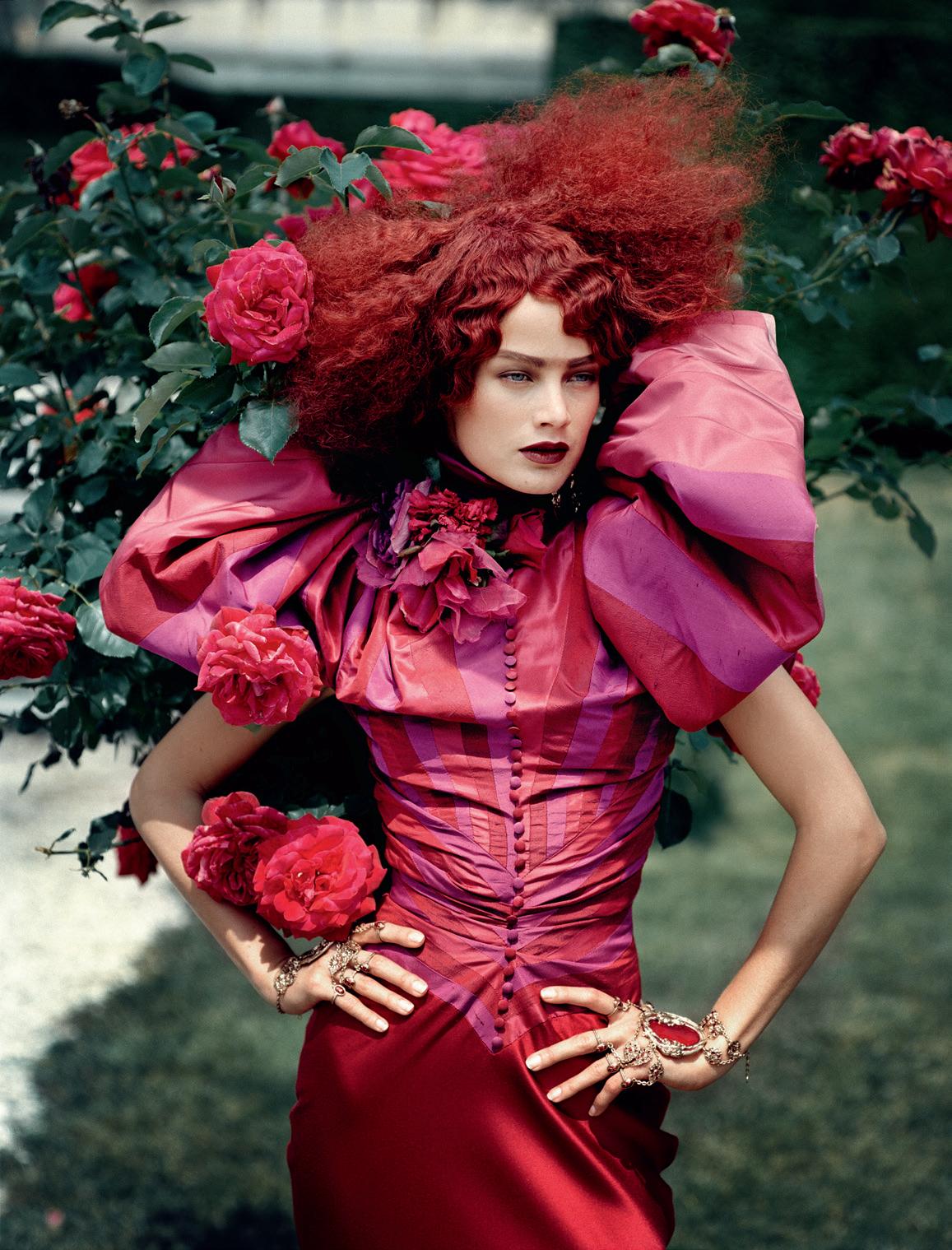
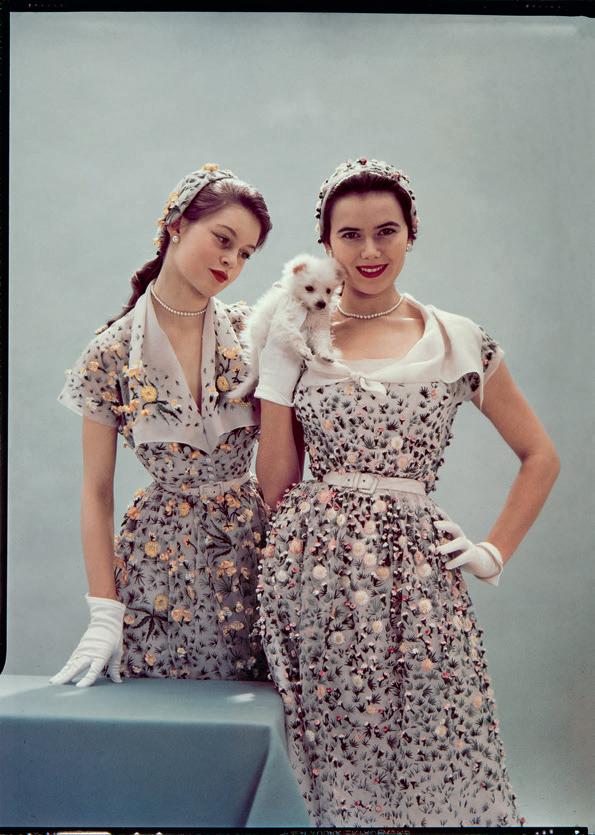
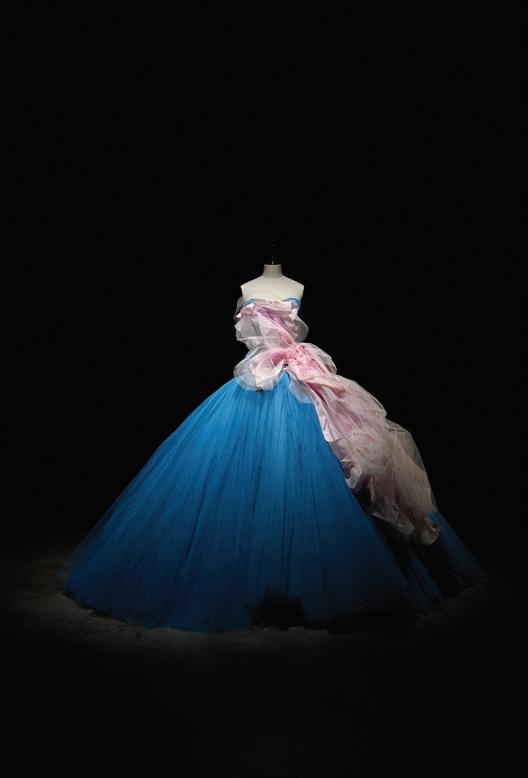
bay window allowing for panoramic views of the garden rather than the nearby sea. In his twenties, the young Dior designed a “suite of outdoor rooms” – featuring a terrace, fishpond, pergola and garden furniture – “inspired by the modernist spirit of the creations he discovered in Paris, in art galleries and at world’s fairs”, says Richart. It also became home to a vibrant scented rose garden which still exists today, adorned by an ornamental blue-and-white mosaic tiled fountain which the designer found on the Rue du Faubourg-Saint-Honoré in Paris in 1946. “A passion for flowers inherited from my mother meant that I was at my happiest among plants and flowerbeds,” he confided in his memoir.
The exhibition illuminates these links between Dior’s garden and his fashion house through pieces old and new, such as a belle époque-inspired choker necklace designed by John Galliano featuring oval frames of pressed flowers; and the gilded bronze lid, handcrafted by Maison Charles as a bouquet of flowers, topping a Baccarat crystal bottle of Diorissimo, first created in 1956. A compass rose motif adorns plates hung on a wall, designed by Cordelia de Castellane, the creative director of Dior Maison since 2017, paying homage to the name of the house; a 1970s Miss Dior jacket embroidered with green clover leaves by Marc Bohan riffs on one of Monsieur Dior’s lucky charms. There are Manolo
Blahnik mules, elaborately embroidered with flower heads and petals by Maison Lemarié during Galliano’s tenure at the house; floral hats and headpieces by the British milliner Stephen Jones (who has worked with the brand since 1996); and swimsuits which Dior designed for Cole of California in 1956. The design of these certainly harks back to the post-First World War days when the young Dior spent summer afternoons with friends such as Serge Heftler-Louiche (who went on to become the first president of Parfums Christian Dior) and Suzanne Luling (who managed his first haute couture salons) at the beach below Les Rhumbs, swimming at high tide.
“Many of Dior’s artistic directors have
These pages, from left to right: © Jean Chevalier/Elle France; Dior Héritage collection, Paris © Laziz Haman; © Jean Chevalier/Elle France; Paolo Roversi/ Art+Commerce

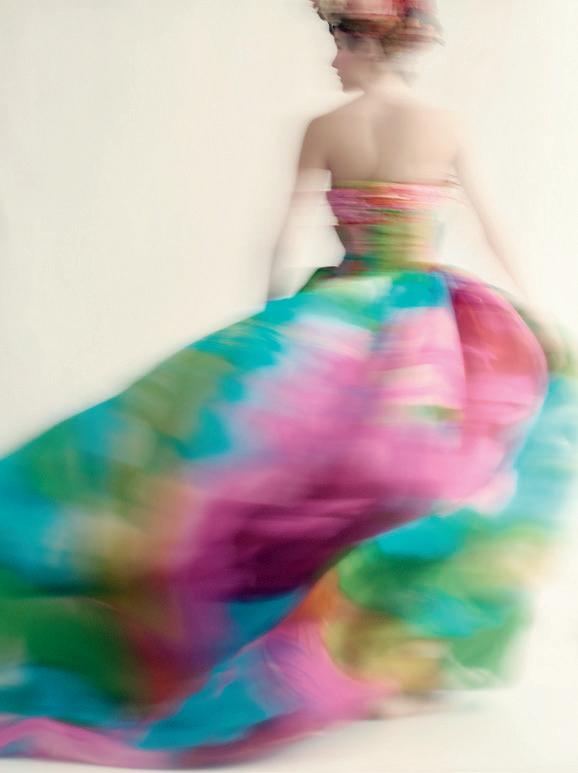
‘ Dior valued feeling protected inside this garden with its high walls of trees ’
visited the museum since it opened in 1997 because they really want to understand and feel these first sources of inspiration that Monsieur Dior brought to each collection during the ten years he was at the head of the company,” says Richart. As a result, the wroughtiron work framing the conservatory’s bay window became a monochromatic print transposed onto jackets and capes for Chiuri’s 2023 cruise collection; as a catwalk backdrop for Kim Jones’s summer menswear show in 2023; and in the perfume creation director Francis Kurkdjian’s reimagining of Gris Dior, a rose-imbued chypre scent, dedicated to Granville’s signature shade of gravel grey. Today, as Richart herself spends time
in the house and garden at Granville, she says, “I can imagine I am seeing and smelling all the same colours and different scents, depending on different moments in the day and in different seasons, as Monsieur Dior. I can imagine how he might have heard the wind blowing in the leaves of the trees, sometimes it blows in off the sea below furiously. I can imagine the colours of the foliage he saw change over the seasons, the flowers and sea air he smelt, and birdsong he heard.”
Richart can even feel how the very physicality of the house inspired the sense of structure in his collections. “For example, you have this house, this building, it is very robust. The pond he
later designed is very simple, very well built. And if you read Monsieur Dior’s memoirs, you know he valued feeling protected inside this garden with its high walls of trees. But at the same time, he was drawn to the fragility of flowers,” she explains. “I think this house, this garden perfectly captures Dior’s ethos, with his emphasis on meticulous construction with the sweetness and femininity of flowers.”
Dior, Enchanting Gardens is open until November 5, 2025. The accompanying book of the same name is out now, published by Rizzoli

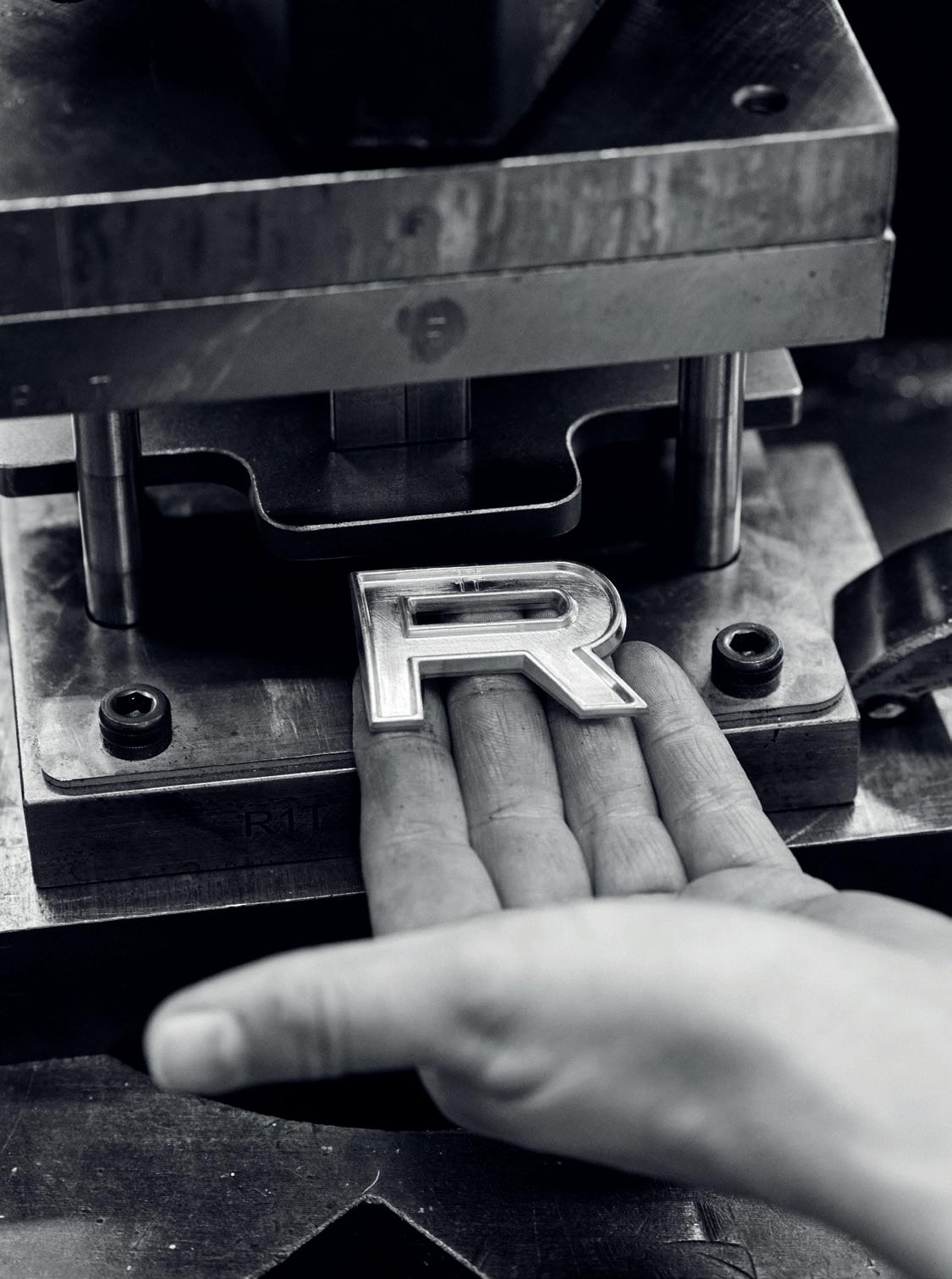
“Our ability to offer discerning clients exactly what they are looking for, from new colours and finishes to truly personal touches inside and out, brings a new level of personalisation and unparalleled attention to detail. We go on the journey with them to curate and create their dream vehicles”
Martin
Limpert, Global Managing Director, Range Rover

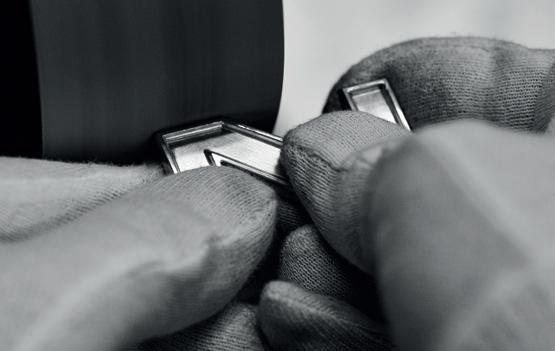

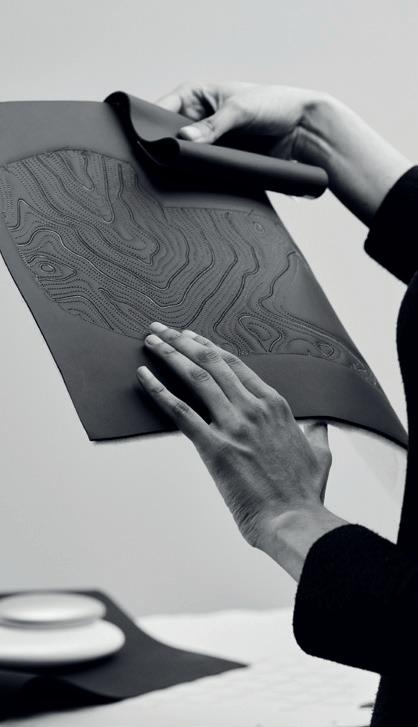
Being able to define your own interpretation of luxury is the ultimate privilege. The ultimate joy. At Range Rover, such privilege is granted by SV Bespoke, the exclusive commissioning service set up in 2023 to empower owners with a near-infinite number of bespoke options to craft the finer details of their vehicles, a unique opportunity to impart their own personality.
“Since we introduced SV Bespoke for Range Rover, we have seen a surge in demand for our personalisation service; our clients are increasingly looking for crafted details and true distinction,” says Martin Limpert, Range Rover’s Global Managing Director.
To spark a client’s imagination, to paint a picture of what is possible, Range Rover’s skilled craftspeople have, in recent years, built a handful of beautiful, one-of-one or ultra-exclusive vehicles that showcase the striking capabilities of their craft.
At the tail end of last year the singular Range Rover SV Candeo debuted at Design Miami, a truly remarkable car that was two years in the making. It drew design inspiration from its colourful, oceanside host city: a unique, hand-applied duo-tone fade paint finish evoking the Miami skyline; a one-of-a-kind embroidery
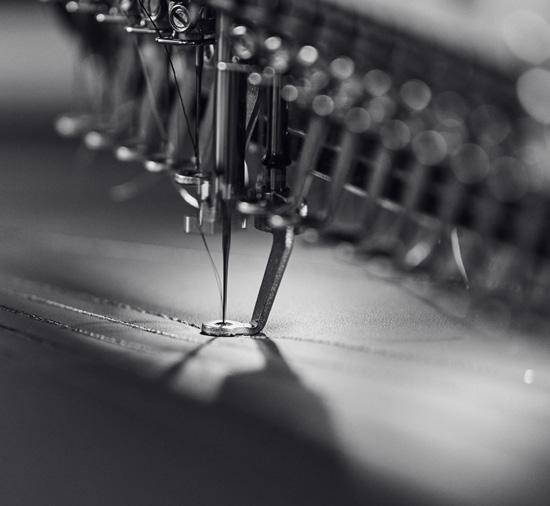
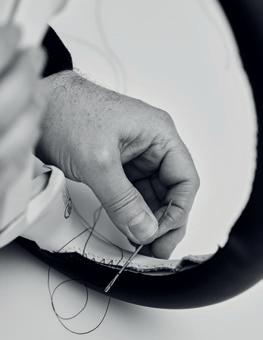

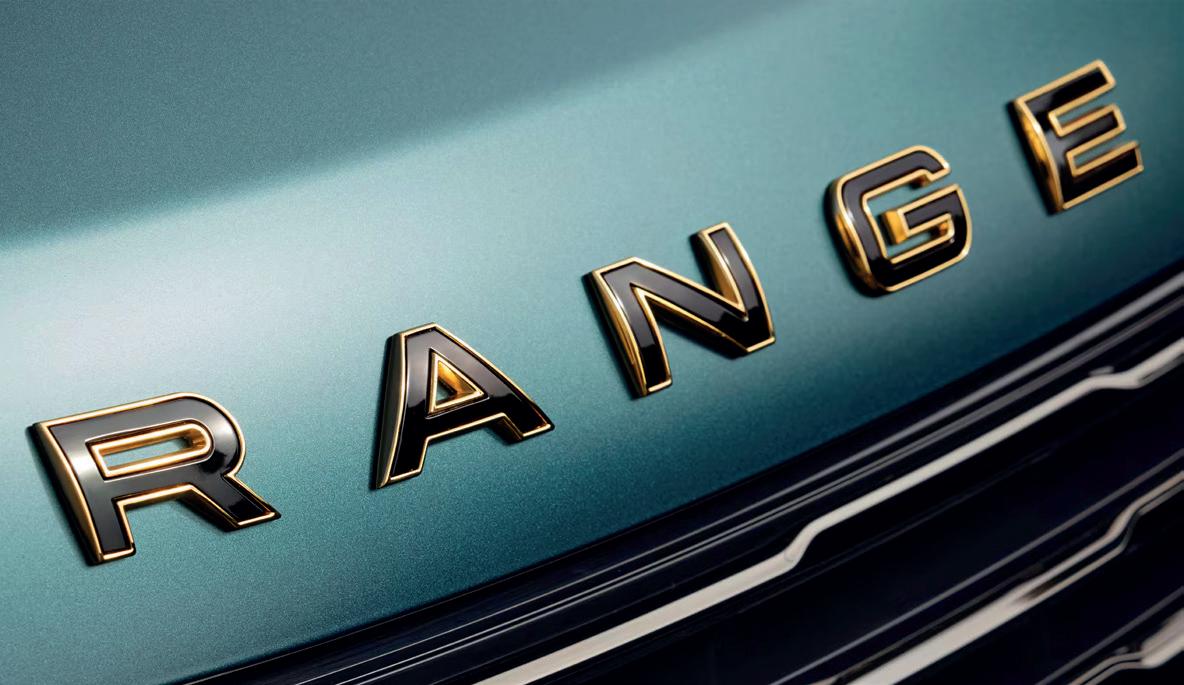

‘There’s a near infinite number of bespoke options to craft a car’s finer details’
design, which features 90,000 stitches, depicting the sunrise; and the iconic Range Rover script badging, handcrafted by British jewellers from 18-carat, responsibly sourced and fully recyclable solid gold. That famous lettering is just as considered on the Range Rover SV Carmel, composed of black metal and accented with a 24-carat gold surround. Limited to just 17 examples, the car’s luxurious interior pairs Sequoia Green and Perlino Aniline leather seating with contrast stitching, while embroidery on the seats and cushions, dark linear wenge veneers and black ceramic dials add depth. Elsewhere, bespoke treadplates are stamped to note the car’s rarity — ‘1 of 17’. These masterpiece vehicles are testament to not only elite-level craftsmanship but to the huge array of colours, materials — including up to 1,500 interior combinations — and finishes that clients can select from to completely personalise their cars. Prior to July 2025, the privilege of this SV Bespoke service was reserved exclusively for Range Rover Sport SV and Autobiography clients. Then came Nocturne, a stunning one-of-a-kind car that marks


the extension of the SV Bespoke service to owners of the Range Rover Sport. Nocturne stands resplendent in a deep indigo exterior paint inspired by the Mediterranean night sky, one of 230 exterior hues in the SV Curated Bespoke Palette – though the SV Bespoke Match to Sample service can match any colour of your choosing. A new Bespoke gloss paint adds a ‘glass-like’ finish, fashioned from a thicker top-coat lacquer and a custom flatting and polishing process. Separately, bespoke paint choices can be made to define the car’s contrast roof, mirror caps and Exposed Carbon Bonnet. Inside, exclusive new colours and bespoke embroidery patterns are offered, alongside custom veneers for the door panels and consoles and personalised treadplates to add a signature twist. As for that iconic two-piece Range Rover script that adorns each car, it can be fashioned from multiple combinations of precious metals and distinctive finishes — you can also match the colour of the inner script to the car’s body or roof for never-seen-before configurations.
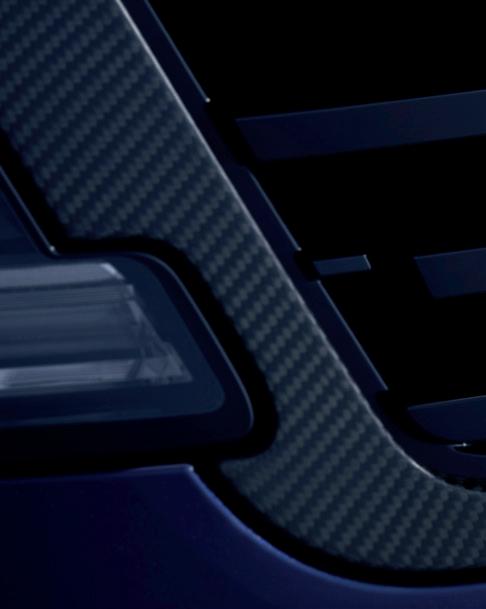
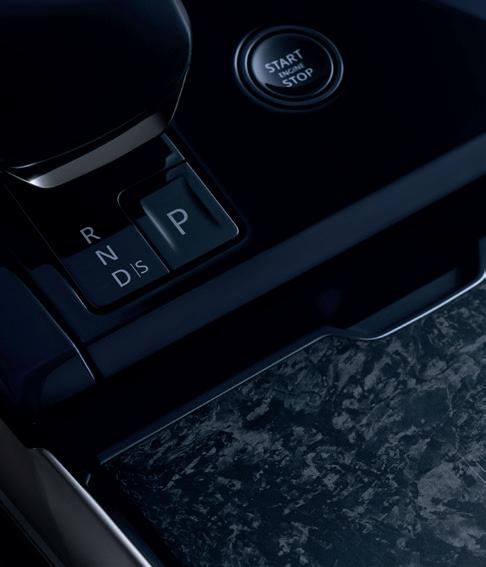
The personalised approach extends beyond the rich detailing of the car: a global collection of luxurious commissioning suites – including one in Dubai, with a planned expansion across the Middle East –welcome clients to the heart of the bespoke process to discuss their ideas in person.
Whatever your personality, the SV Bespoke team has the exquisite materials, the vision and the artistic know-how to express it in the most beguiling manner, creating a car that’s as distinct as you.
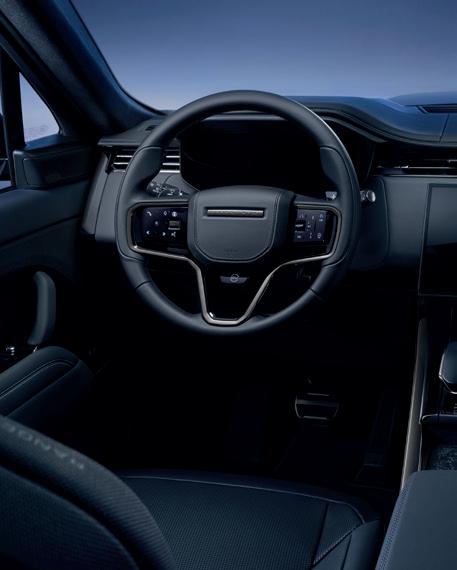

Opposite page: Range Rover SV Candeo This page: Range Rover Sport SV Nocturne

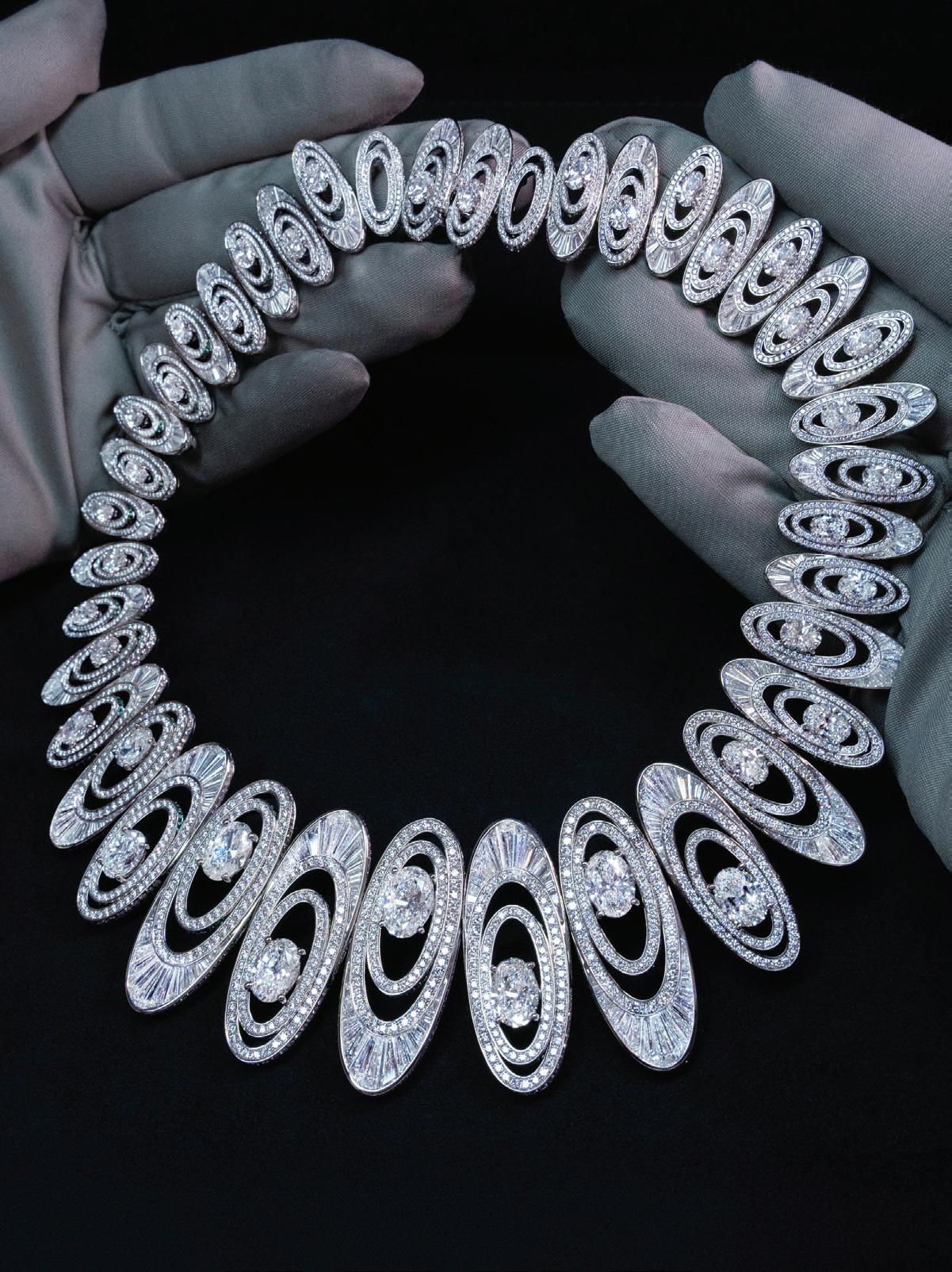
Diamond Geezer
Graff’s new high-jewellery suite celebrates the decade its founder realised his vision
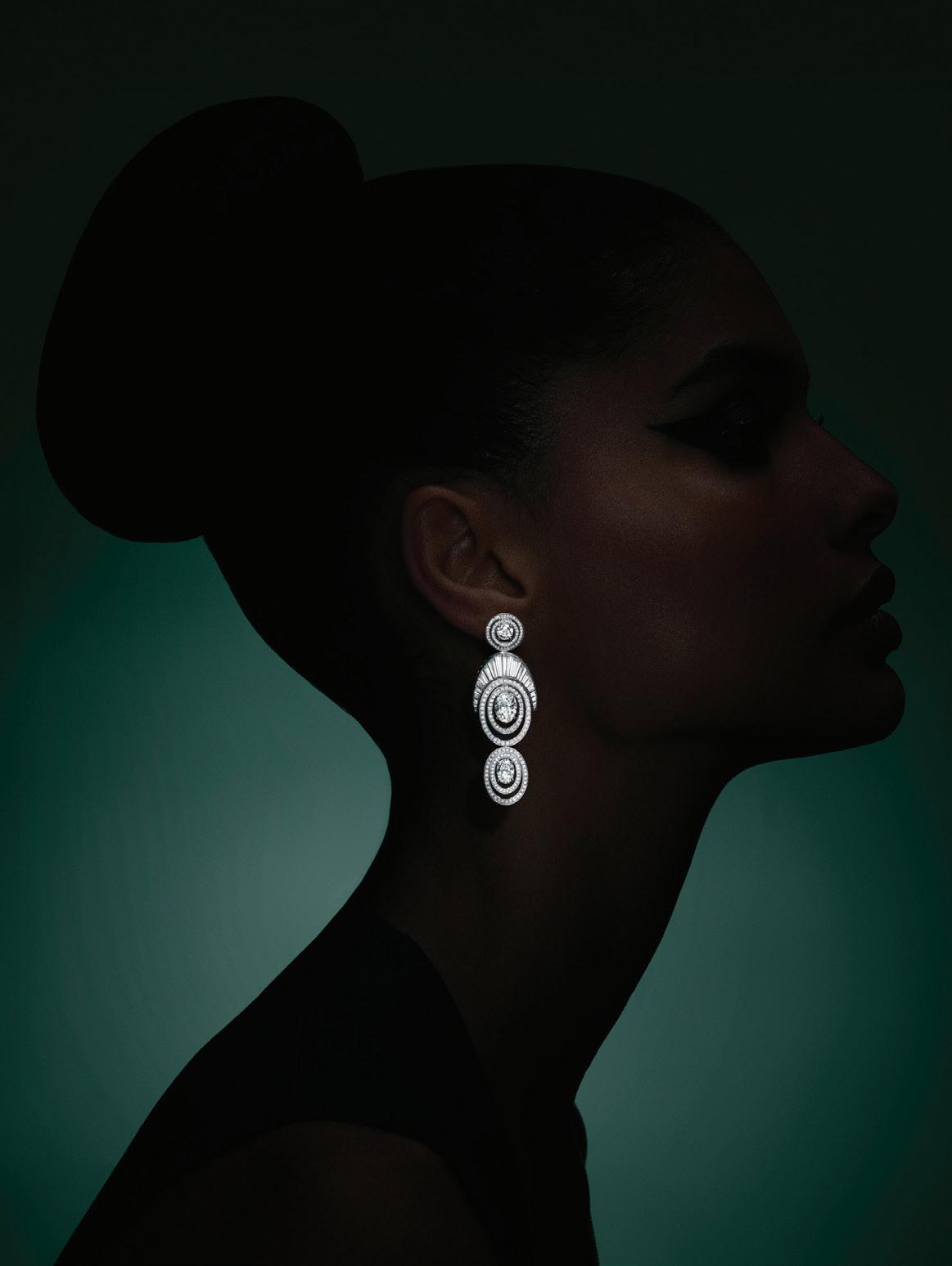
Opposite page: 1963 necklace
This page: 1963 earrings

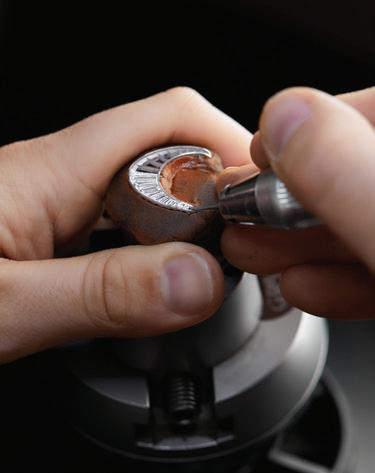
During the 1960s, while London was swinging to the sound of The Beatles and its streets were transformed into fashion runways by a youthful desire for individuality and liberation, a young Laurance Graff, fuelled by the entrepreneurial spirit of the time and an intense passion for diamonds, was busy laying the foundations for a legacy from his base in Hatton Garden, the city’s renowned jewellery quarter.
Establishing Graff Diamonds in 1960, Graff built the brand into a jewellery house of global renown, and it’s to that decade of innovation that the house pays homage with a beautiful
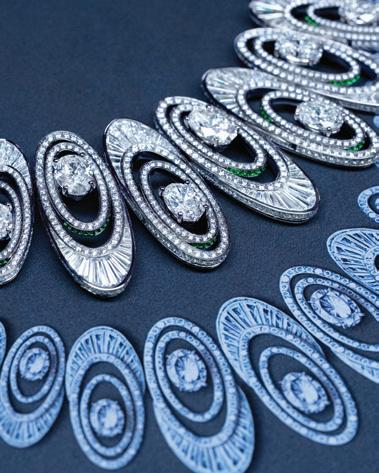
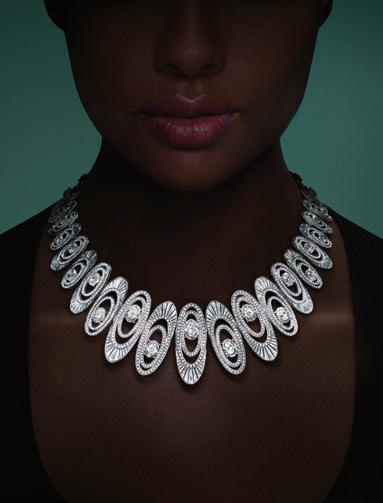
‘This is one of the most intricate, complex and technically challenging high jewellery suites we have ever created ’
new high jewellery suite, 1963. Comprising a spectacular necklace, a matching bracelet and stunning earrings handcrafted from 7,790 oval, baguette and pavé diamonds and round emeralds that total over 129 carats, the sculptural pieces have been meticulously set so that the emeralds – a nod to a colour that’s
been synonymous with the brand across the past fifty years – appear to be partially concealed, a secret flourish to catch an admiring eye.
“This is one of the most intricate, complex and technically challenging high jewellery suites we have ever created,” says Francois Graff, Chief Executive Officer at Graff. “While the design is inspired by the decade in which Graff was founded, each jewel also represents the journey and evolution of our brand, our expertise and our future potential. We pursue absolute beauty and perfection in everything we do, and 1963 is the ultimate representation of these values.”
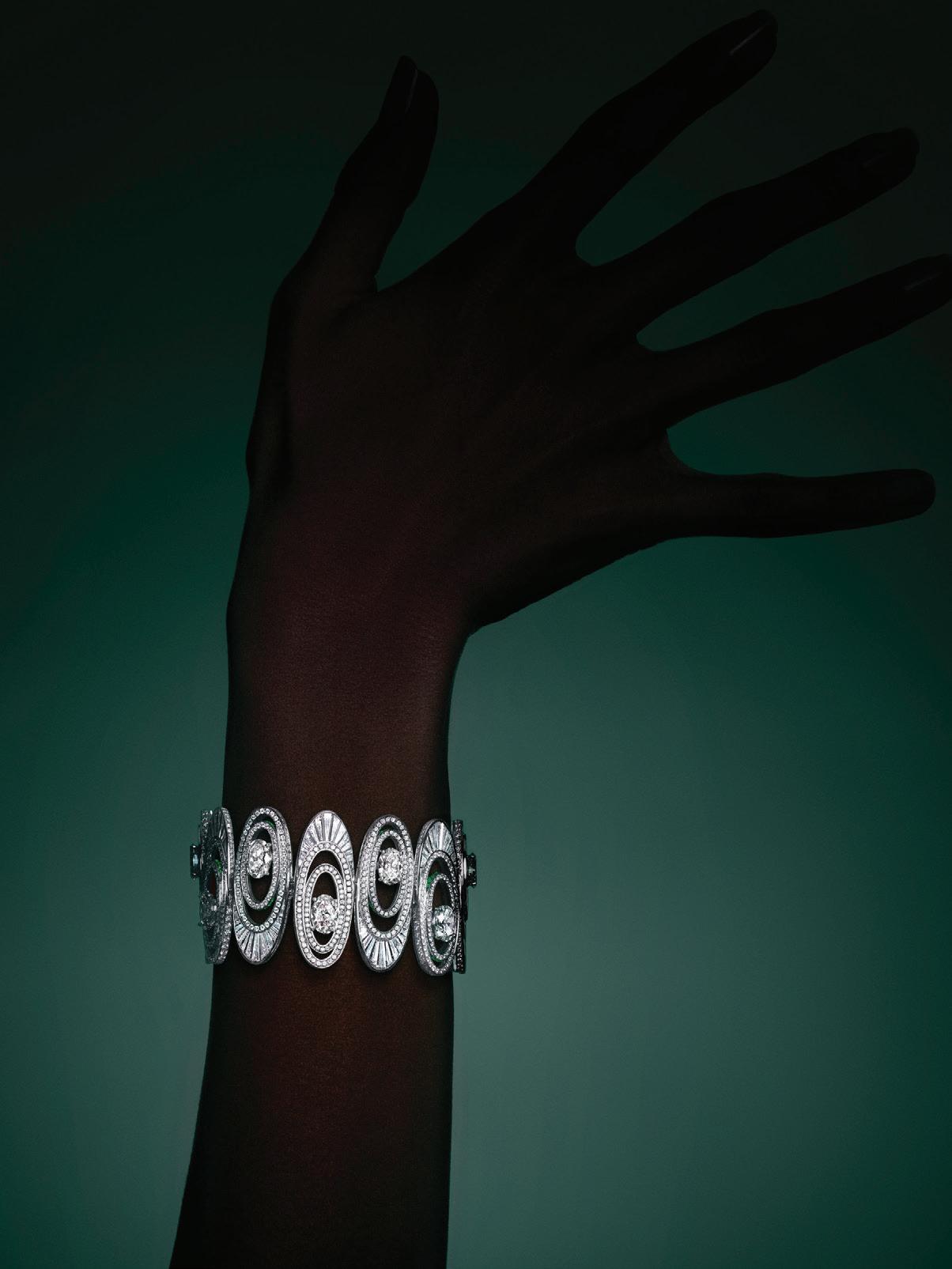
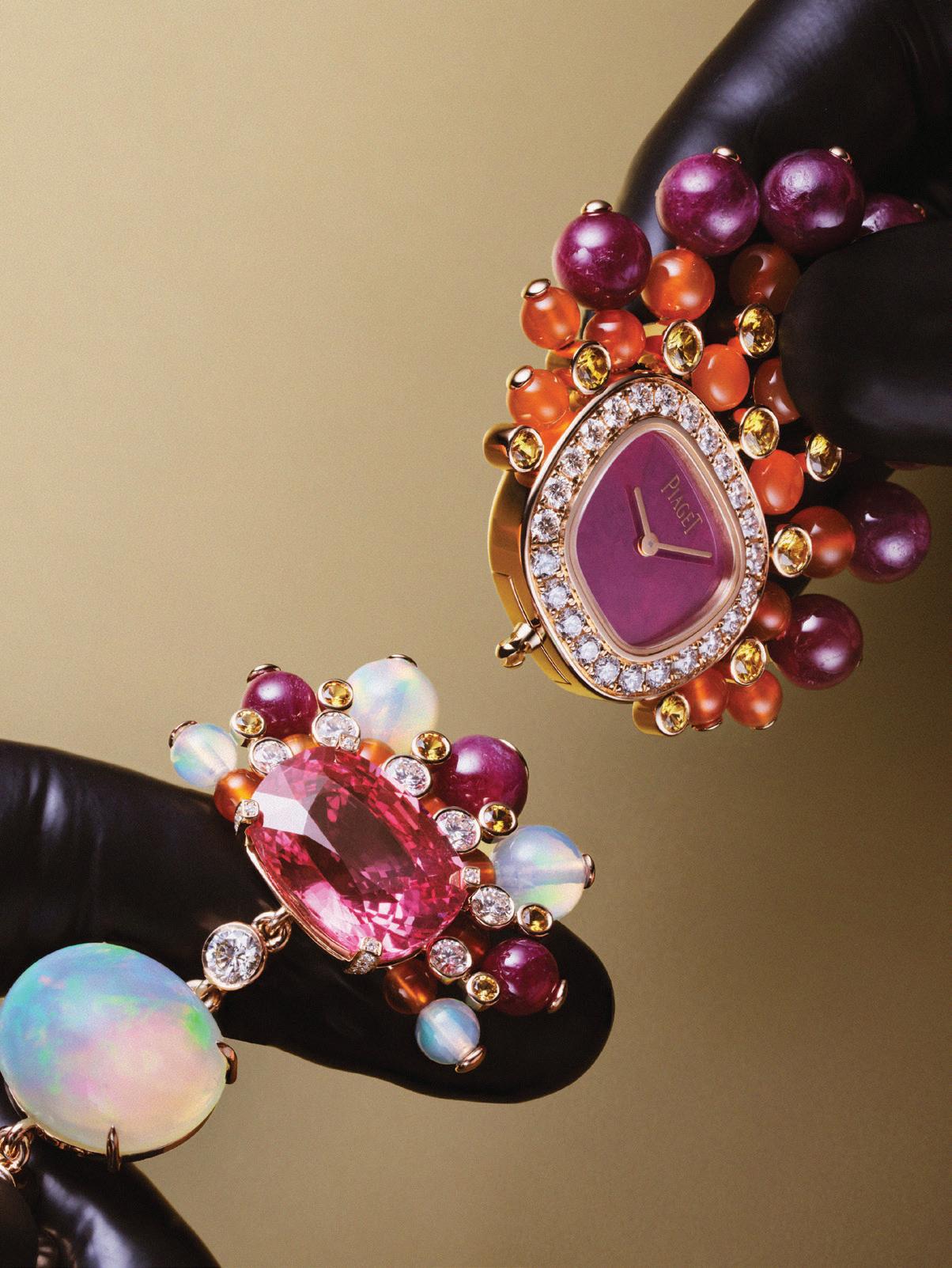
Back In Full Swing
The latest line of Piaget’s opulent sautoir timepieces signals an appreciation for unadulterated glitz
WORDS: RACHEL GARRAHAN
“Make me something that’s never been created before” demanded Valentin Piaget, third-generation scion of the eponymous Swiss watchmaker, to his design studio. In 1969, it resulted in the seismic 21st Century Collection, an avant-garde hoard of bejewelled watch necklaces and cuffs that combined audacious design, unadulterated luxury and a casual nonchalance true to the Youthquake era in which they were born.
Like a Slim Aarons image of a midcentury French Riviera pool party, Piaget’s extravagant, technicolour timetelling jewels embodied the period’s jet-setting sophistication and glamour. And as Tom Heap, head of watches for Sotheby’s London, notes: “No one around that pool was going to want to wear something worn by someone else.”
The opposite of quiet luxury, this was Pucci-couture-kaftan-style watchmaking at its most exuberant. Rejecting the staid fashion and jewelled parures of the past, it was an era that embraced modern design and unabashed opulence. Piaget combined dials created from slivers of rainbowlike opals, ocean-deep lapis lazuli and richly patterned malachite with elaborately woven, sensuously textured chains and wide openwork bracelets with dynamic fringes and tassels.
More for ladies who lunch than those juggling a day job, these gorgeous but often wildly impractical creations attracted the era’s glitterati – Elizabeth Taylor, Mia Farrow, Petula Clark and Sophia Loren among them.
Today, Piaget is paying homage to that groundbreaking period by reviving the watch pendant with its precious line of Swinging Sautoirs. First unveiled in 2023, these contemporary creations, now with added diamonds, exude the same genre-defying creativity and playfulness as their forebears and are a favourite of Jean-Bernard Forot, head of patrimony at the brand.
“The response to them has been incredible, both in terms of image and sales,” he says. “The only problem is keeping up the pace in the workshops as every necklace is entirely woven by hand – even the simplest versions can take 100 hours to create.”
Like its Richemont stablemate Cartier, Piaget is a rare thoroughbred,
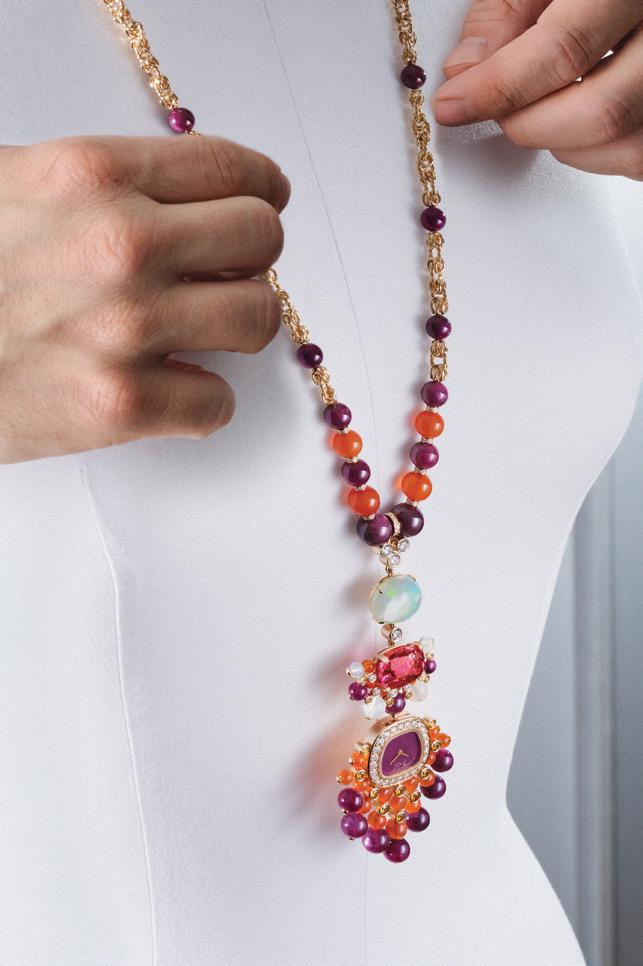
boasting integrated skills in both jewellery creation and watchmaking. Originally founded in 1874 as a movement maker, it transitioned to watch production in the 1940s. Its launch of the Calibre 9P, an ultra-thin hand-wound mechanical movement just 2mm thick, in 1957, proved crucial to its subsequent success, freeing up watch dials from technical constraint and making way for unbridled creativity.
In 1959, Valentin and his brother Gérald committed themselves to the top end of the market, thereafter only
producing timepieces in gold and platinum. They also began acquiring goldsmithing workshops in order to master the art of jewellery. The trial-and-error process of creating 1mm thick dials from rare ornamental stones was an expensive one but Piaget embraced the challenge, combining them with gold bracelets so intricately engraved that the dense network of tiny links that ensured comfort on the wrist disappeared from view.
“Piaget are the undisputed masters of the stone dial – theirs were beyond anything that the [competition] was
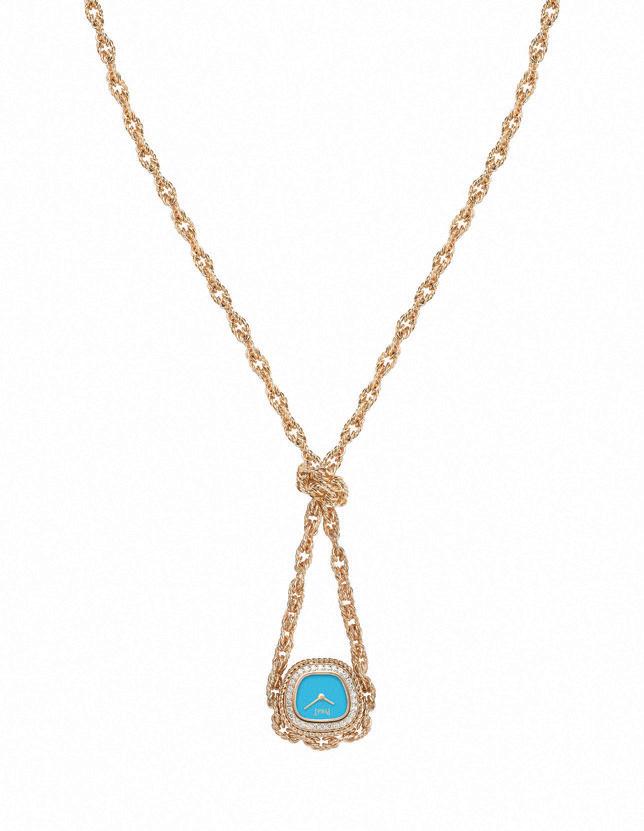
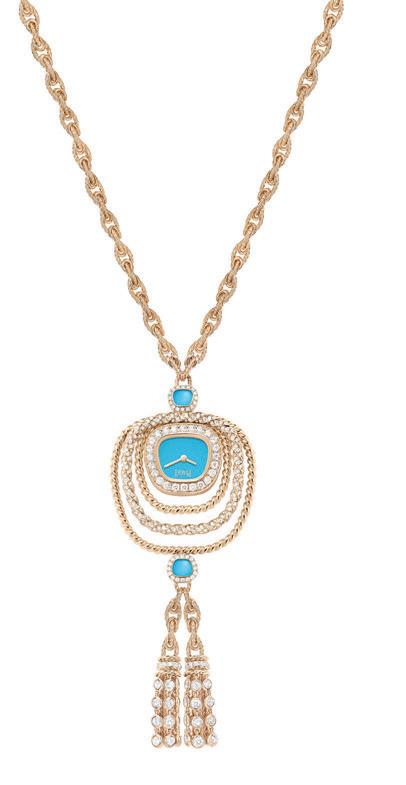
‘ Piaget are the undisputed masters of the stone dial ’
able to do,” says vintage watch dealer Daniel Somlo. Certainly they were not the only ones experimenting in modern, outrageously fashioned jewelled watches during the period. As the quartz crisis began to cast its shadow over the Swiss watchmaking industry in the 1970s, many houses realised they needed to excel in artistry and original design rather than mere time-telling accuracy.
Piaget was among those who put a modern spin on the watch pendant that had last been fashionable in the 1920s. The earlier creations often featured secret watch dials hidden beneath gem-set covers. The 1960s iterations, however, were unapologetically bold. Piaget’s beautifully realised dials were there for all to see and, just like jeweller Andrew Grima’s 1969 About Time collection for Omega, they were conceived as wearable works of art that also happened to tell the time.
Piaget’s creations graced the pages of Vogue and Harper’s Bazaar, and remained fashionable throughout the 1970s, a decade when the brand was led by Yves Piaget, Gérald’s charismatic son. But, of course, the wheels of fashion keep turning and, for a long period, Piaget’s jewelled watches fell out of favour. “Twenty-fve years ago, they were available for little more than their gold weight,” says Somlo. He believes that Piaget’s recent reprise of the Swinging Sautoirs, however, is good timing as he has seen demand for vintage versions grow considerably in recent years. “Today, they’re increasingly hard to come by and can run into hundreds of thousands of dollars,” he says. “There is a far greater appreciation for the workmanship, goldsmithing and lapidary skills that initially separated Piaget from its competition – skills that are almost extinct today in a world that relies on CNC machines.”
All of which is good news for Marcus Margulies, a veteran London watch dealer who has amassed a worldclass collection of more than 200 watches from Piaget’s heyday. “Their 1970s pieces are the most beautiful ladies’ watches I’ve ever seen,” he says. He believes that the maison should embrace its DNA still further and become even more outrageously opulent in its contemporary creations. “Just look at the couture houses and you can see there’s still a market for unadulterated glitz,” he points out. According to Heap, recognition of Piaget’s unique artistic legacy is now so widespread that at a Rolex collectors’ dinner in London last year, he spotted the brand’s watches on the wrists of more than half the attendees. It proves that even sports watch enthusiasts can still appreciate Yves Piaget’s motto: “We create watches, we don’t produce them.”
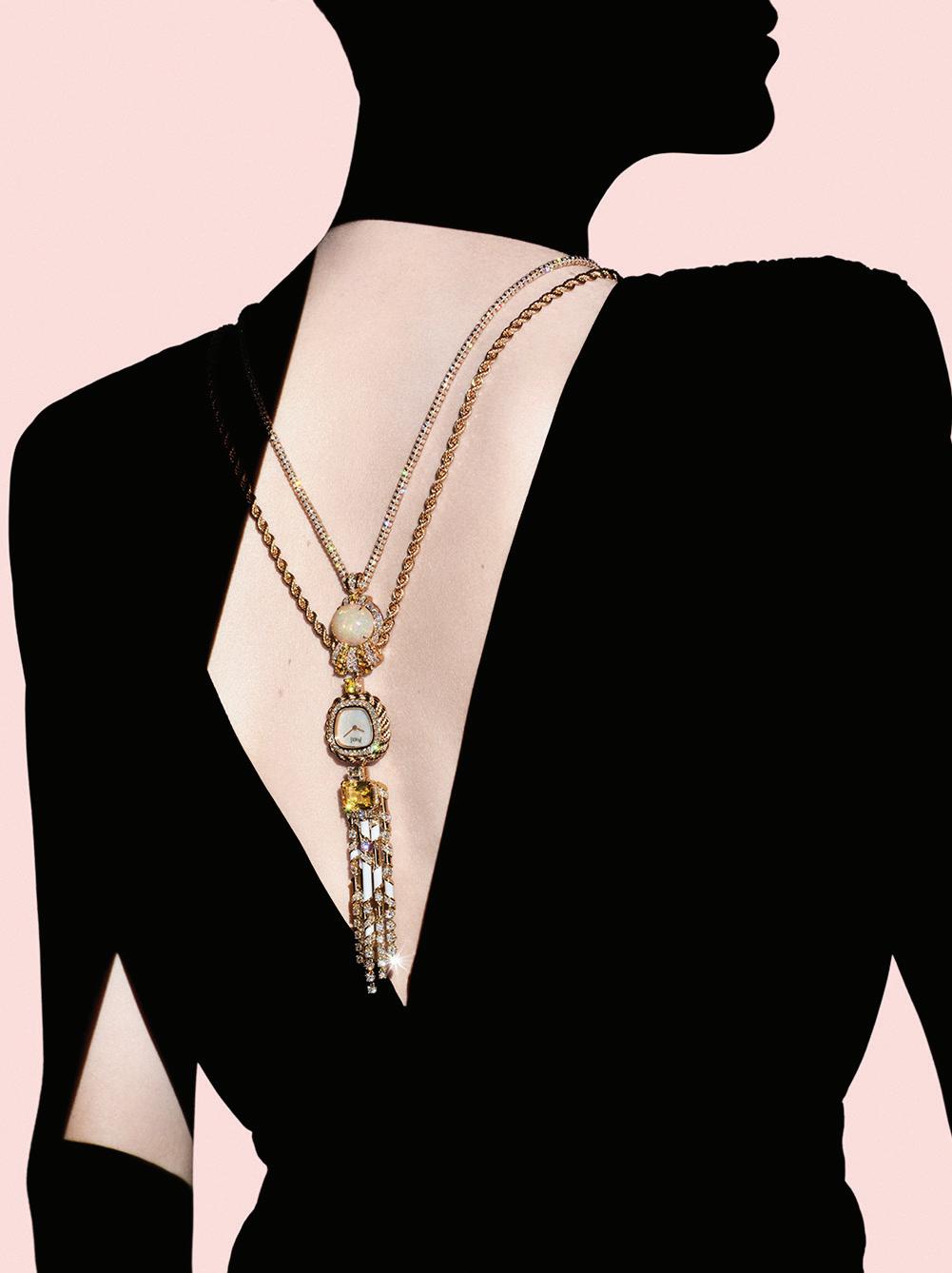

WORDS: VICKY JESSOP
Olivia Cooke on staying true to herself, the problem with dating and imposter syndrome


It’s a Wednesday afternoon and Olivia Cooke is holding forth about her guilt complex.
“I’m the most shame-filled, guiltridden person in the world. And I think that is why I like playing [morally complex] characters so much, because I get to exercise something that I would never, ever do,” she laughs.
“If I pass a stranger in the street, and they smile at me, but I don’t notice it, then I’m like, ‘Oh, she smiled. God, they’re going to think I’m a right bitch.’ So yeah, it’s really therapeutic, actually, to just be so brazen and impulsive.”
Her latest character, Cherry, certainly is both of those things. Over the course of The Girlfriend, she spits in her colleague’s coffee and takes part in several elaborate revenge schemes –one of which involves a bucket of blood and a wedding dress, à la Carrie
This is a problem, because at the same time, Cherry is also trying to ingratiate herself with the mother of her new boyfriend – the icy, composed Laura (Robin Wright, who also directs). As the pair clash, Danny (Laurie Davidson) is caught in the middle, with deadly consequences.
It’s a hell of a premise, and both Wright and Cooke milk it to the full. But there’s another element to their struggle: Laura and Danny live in ultra-rich, rarefied circles, whereas Cherry is working class, with a builder father and mother struggling to make ends meet after his death.
As Cooke puts it, the show is set “in a world that treads the boards of classism and where Cherry belongs.”
She can relate. Born in Oldham in the north of England in 1993 to a policeman father and sales rep mother, Cooke started acting at eight at an after-school drama programme. She left school before finishing her A-levels to appear in the drama series Blackout, before leaving for America.
“I think starting my career primarily in America was really good, because my accent, even though it’s a lot softer now, wasn’t so much of an identifier,” she says. “And so I could just play any sort of role, whereas, maybe I’m being pessimistic, but I do wonder about my career. If, when I was 18, [I had] just stayed in the UK, how that would have differed.
“I do enter certain circles and situations with my line of work. And
even though I’m accomplished and I’m a successful actor, I still have these quite juvenile and insecure thoughts of having only a GCSE education and not having gone to drama school.” But, she adds, there are no regrets. “It’s all swings and roundabouts, isn’t it?”
It is, and Cooke’s talent and hard work landed her a slew of increasingly big roles across the UK and Hollywood. Over the years, she’s migrated from big-budget films like Ready Player One, to shows like Slow Horses and Modern Love
Of those roles, many have involved her playing women who don’t neatly fit into a box. Alicent Hightower in House of the Dragon, Emma Decody in Bates Motel or Becky Sharp in the latest adaptation of Vanity Fair all spring to mind here – something Cooke readily admits to herself.
‘ I feel really uncomfortable with celebrity and I don’t want to be treated differently ’
“I love morally wonky characters, and so I always find it really fun to try and find the humanity and the nuance [in them],” she says. Is there some female rage there, too? “A hundred per cent. My female rage is, like, metastasising into some awful ulcer or cancer. And I get to exercise it in some small, controlled way on screen.”
There’s also the interesting case of imtimacy. Cherry is a character who feels confident in her body and the effect it has on others, and her initial flings with Danny are depicted as lustful.
“It’s such a massive part of this show. And I really wanted passionate intimacy to be shown,” Cooke agrees. “But also the fun... I do feel like that is so important for us as humans, and we’re missing it madly now. I wanted it to feel really connective.”
She pauses. “This is oversharing. I’m gonna say it, anyway: I was single for a while. From 2023 to the middle
of 2024. I was on the apps, and it was just, there’s nothing. You don’t meet people in real life anymore. We’ve lost that ability to have this frisson when you meet someone. Or even the ability to have eye contact with people. It’s sort of omitted from our society now.”
Dating is presumably even harder if you’re famous, and in the years since House of the Dragon (where she met her now-boyfriend, Ralph Davis), Cooke’s fame has blossomed still further.
There have been premieres, there have been worldwide press tours – and there has also been a video of herself and co-star Emma D’Arcy discussing negroni sbagliatos, which Cooke brands “the most inane conversation me and Emma have ever had”, and which nonetheless went viral.
Despite that, she says she’s rarely recognised on the street. “I live my life very normally,” she says, though adds that these days, she’s “maybe [more] protective of myself. Like, I won’t be such an oversharer to strangers as much.
“But I cycle everywhere, I get on the tube every day. I want to live as normally as possible. Because I just think as soon as you start to isolate yourself, that’s not really good for my job.”
And that’s the way she likes it.
“I feel really uncomfortable with celebrity, and I don’t want to be treated differently,” she adds thoughtfully. “It makes feel really icky. And I think it is also imposter syndrome. Feeling like what I’ve got is incredibly undeserved, which is something for my therapist.”
“I just try and be as un-vain as possible when it comes to my job. But then it is hard when you’ve got the other side of it, when you come out of therapy and you’ve just been crying, and then you get paparazzi, and you’re like, ‘Come on, guys, this is cruel.’”
That says, there are still positive sides to it all. For one, roles like Cherry. For the other? “I was blind drunk off three pints of Pimms at Wimbledon in the Ralph Lauren suite and it was silver service,” she says.
“You’re in this amazing Ralph Lauren suit. And I was with my partner, and we were wetting ourselves laughing. We just could not believe the extravagance of the situation, and it wasn’t lost on us or where we’ve come from at all. We were just like, ‘This is remarkable, if people from back home could see us now.’”
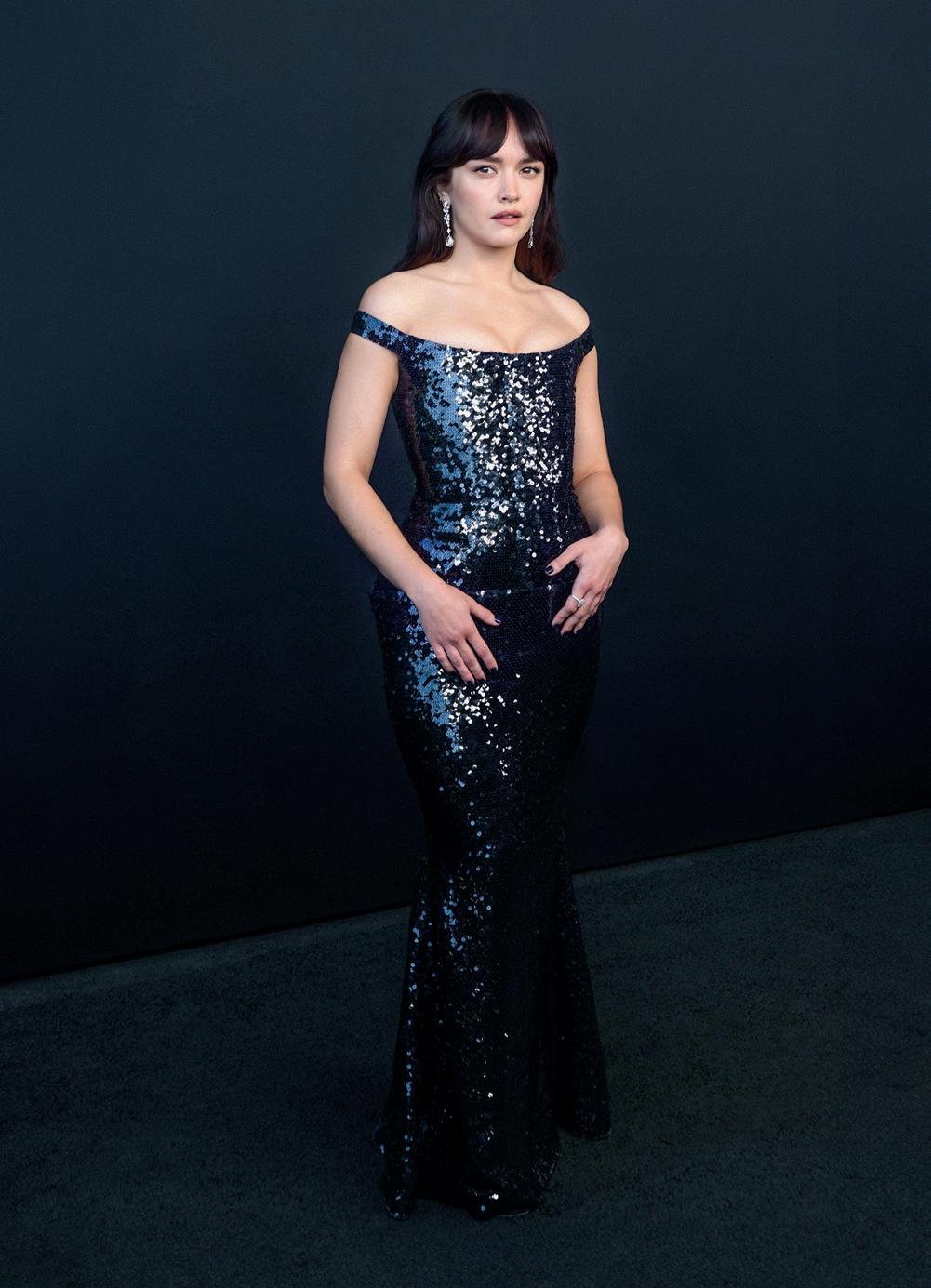
For over sixty years, Gian Paolo Barbieri was one of the most influential photographers in international fashion. A new exhibition considers his eternal appeal
WORDS: PAUL JAMES
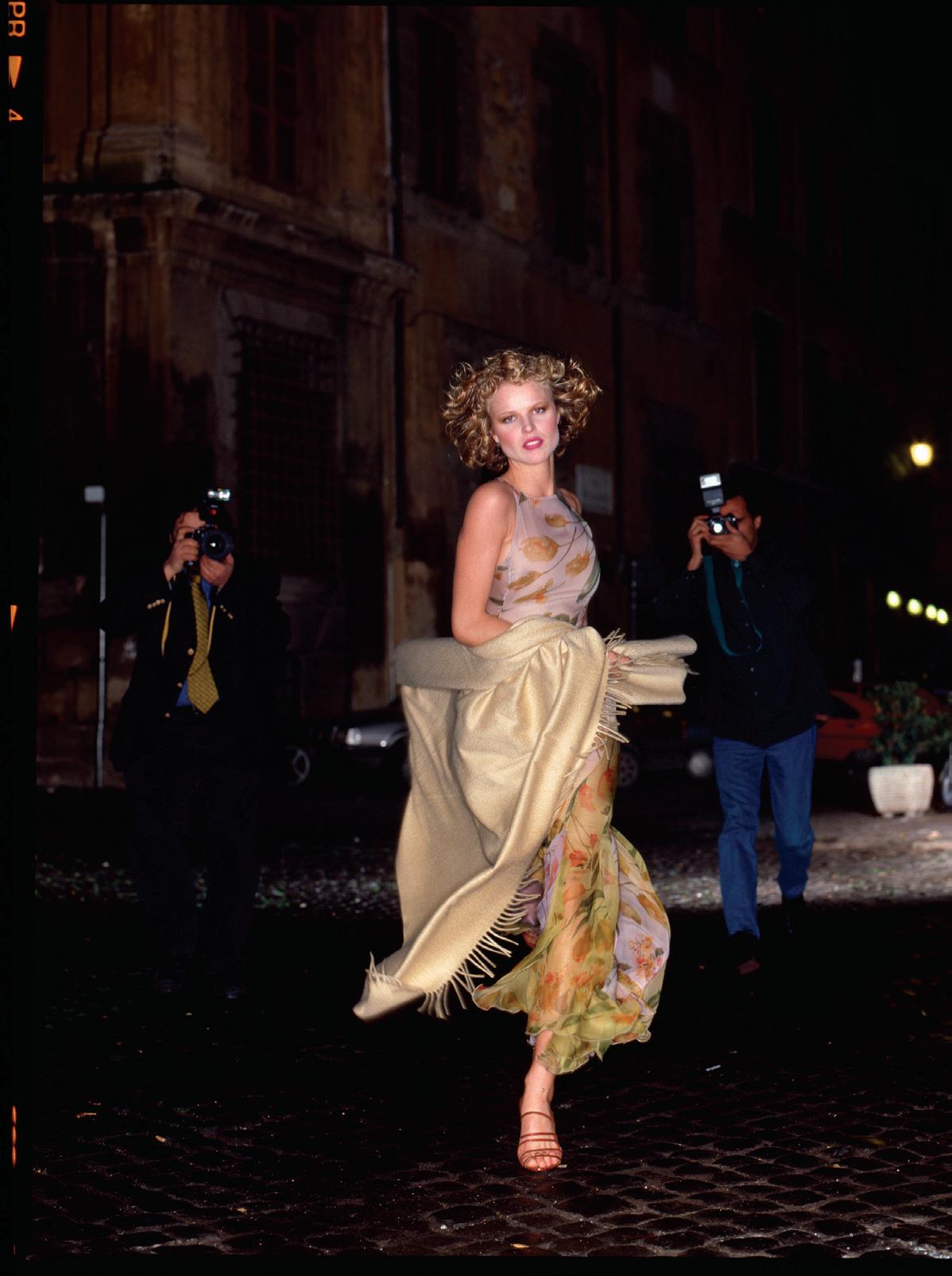
Previous page: Eva Herzigova, Rome, 1997
This page, from top to bottom: Donatella Versace and Rupert Everet, Milan, 1976; Aly Dunne in Gianfranco Ferré, Milan, 1992
Opposite page: Christy Turlington in Yves Saint Laurent, Paris, 1988

Italian fashion may have been shaped by many hands, but Gian Paolo Barbieri’s contribution was unique.
“For Valentino, Barbieri established a visual dialogue marked by elegance and imagination. Famous are the campaigns in which he recreated exotic scenarios – such as desert dunes sculpted from semolina – endowing the garments with an almost cinematic aura,” says Eugenio Calini, Co-Founder of Milan’s 29 Arts In Progress gallery, which is staging an exhibition of Barbieri’s groundbreaking photography in collaboration with Zurich Italy.
“For Gianfranco Ferré, he developed a more essential and structured photographic style, in perfect harmony with the designer’s ‘architectural’ vision. His work for Versace was bold, constructed, and ironic – a dynamic blend of glamour and provocation, resulting in strikingly theatrical visual narratives.” While for Dolce & Gabbana, Barbieri’s “baroque, sensual, and Mediterranean aesthetic seamlessly aligned with the brand’s identity, producing images rich in symbolism and physical intensity.”
So coveted was Barbieri’s creative vision within the fashion industry
that he also shot for the likes of Armani, Bvlgari, Chanel, Yves Saint Laurent and Vivienne Westwood.
“Barbieri’s unique ability to adapt his language to the creative universe of each designer – while maintaining a coherent and unmistakable personal style – is one of the hallmarks that define him as a master of fashion photography,” states Calini.
Gian Paolo Barbieri was born in 1935 on Via Mazzini in Milan, into a family of textile merchants, the fabrics they produced granting the young Gian an invaluable grounding in their visual qualities. But it was his love of film that had the biggest impact on his subsequent career and unique aesthetic.
“His first steps were in the world of cinema and theatre, where he took on various roles – actor, camera operator, costume designer – even landing a small silent part in Medea by Luchino Visconti,” outlines Calini. “This background had a profound influence on his aesthetic and narrative vision. American film noir, in particular, became a decisive source of inspiration: from it, he learnt the expressive and seductive power of lighting, capable of sculpting faces and bodies and infusing
‘ Barbieri’s unique ability to adapt his language to the creative universe of each designer is one of the hallmarks that define him as a master of fashion photography ’
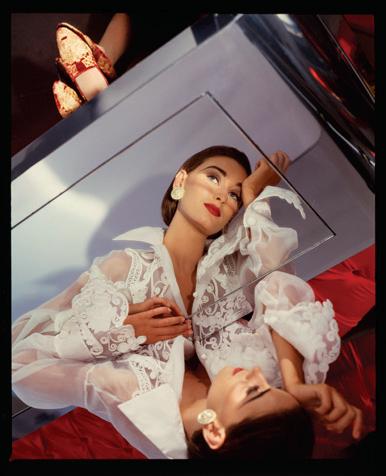
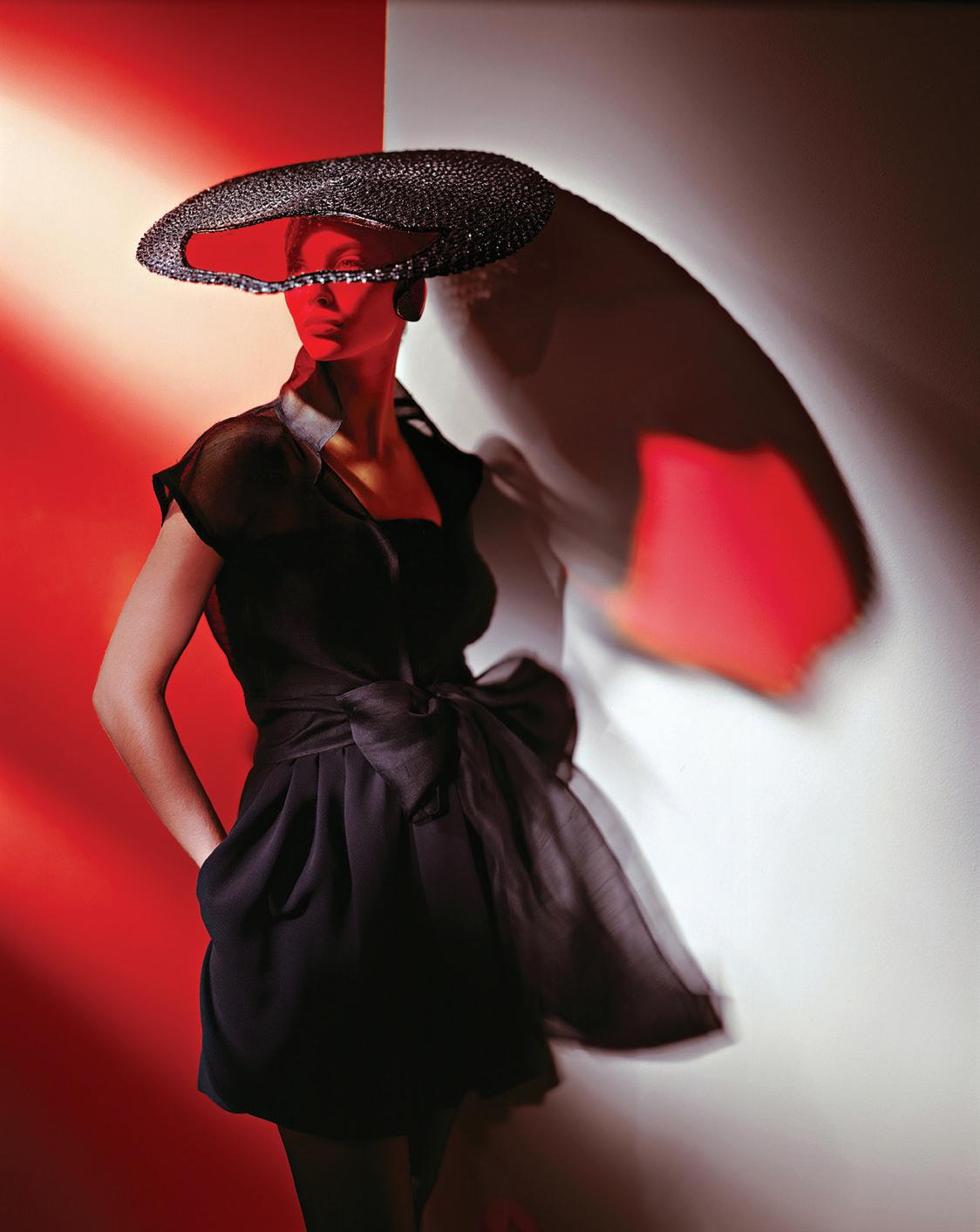
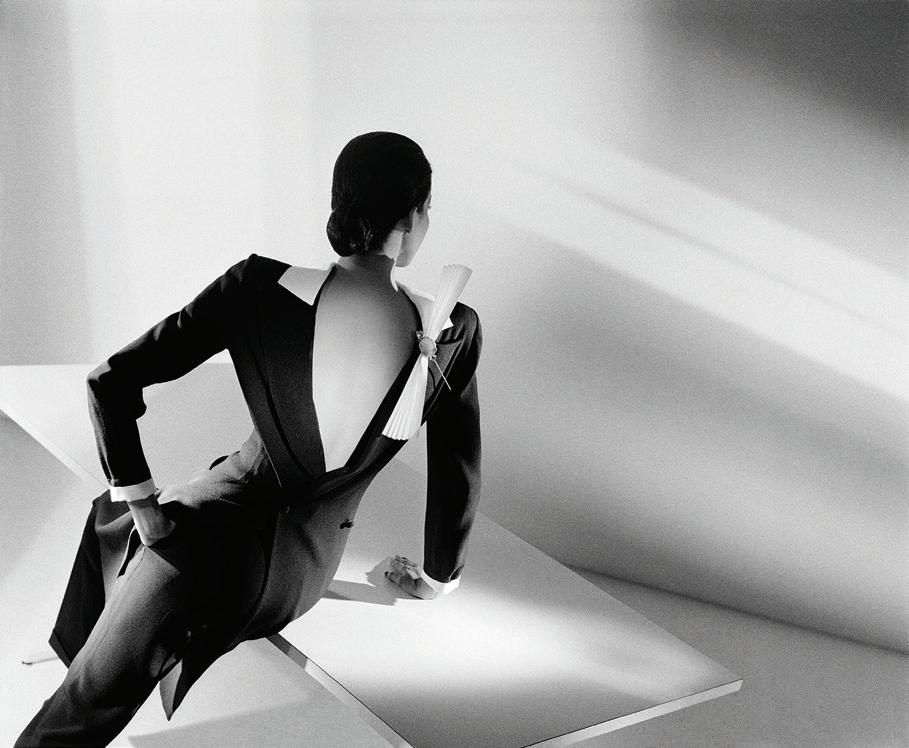
‘ Barbieri contributed to a radical renewal of fashion photography, introducing a cultivated, theatrical language ’
each scene with dramatic tension.
“Cinema also taught him a sense of movement and dynamic composition –elements Barbieri skilfully translated into photography, despite working in a static medium. Most importantly, this training enabled him to shift Italian fashion out of the confines of neutral studios and blank backdrops, transporting it into broader narrative contexts, placing it outdoors and within atmospheres rich in suggestion. In doing so, Barbieri gave fashion a new soul, transforming it into visual storytelling and cinematic vision.”
By setting his own path, Barbieri also pushed boundaries. “His fashion photography was profoundly innovative, reshaping both the aesthetic and narrative conventions of the genre. Internationally celebrated for his black-and-white images,
Barbieri elevated each photograph into a work of remarkable sophistication,” enthuses Calini. “His subjects – poised, elusive, almost otherworldly – appear suspended in a timeless space, where light carves their features and composition acquires an almost painterly quality.
“Yet it is in his use of colour that Barbieri most clearly expressed a deeply personal and ironic vision of fashion and feminine beauty. His colour photographs broke decisively with the rigid conventions of the time, liberating models from static, formulaic poses. The women in his images embody a new kind of elegance – more relaxed, sensual, and self-aware – eluding stereotypes while engaging the viewer’s imagination.
“Through this approach, Barbieri contributed to a radical renewal of
fashion photography, introducing a cultivated, theatrical language that remains uniquely his own. At once refined and playful, his work speaks of femininity with irony, visual power, and a rare emotional clarity.”
As Barbieri evolved his style, so too did he broaden his experience, stepping away from studio sets and fashion runways to immerse himself in remote, tropical worlds. “In these distant places, he collected portraits and landscapes like fragments of a threatened memory: fleeting moments salvaged from the unstoppable current of transformation, glimpses of a beauty on the verge of vanishing,” says Calini.
“For the first time, Barbieri found himself completely alone behind the camera, faced with subjects that
This page: Dalma Callado in Gianfranco Ferré, Milan, 1979
Opposite page: Laura Alvarez, Venezuela, 1976
Credits: All images © Gian
Paolo
Barbieri
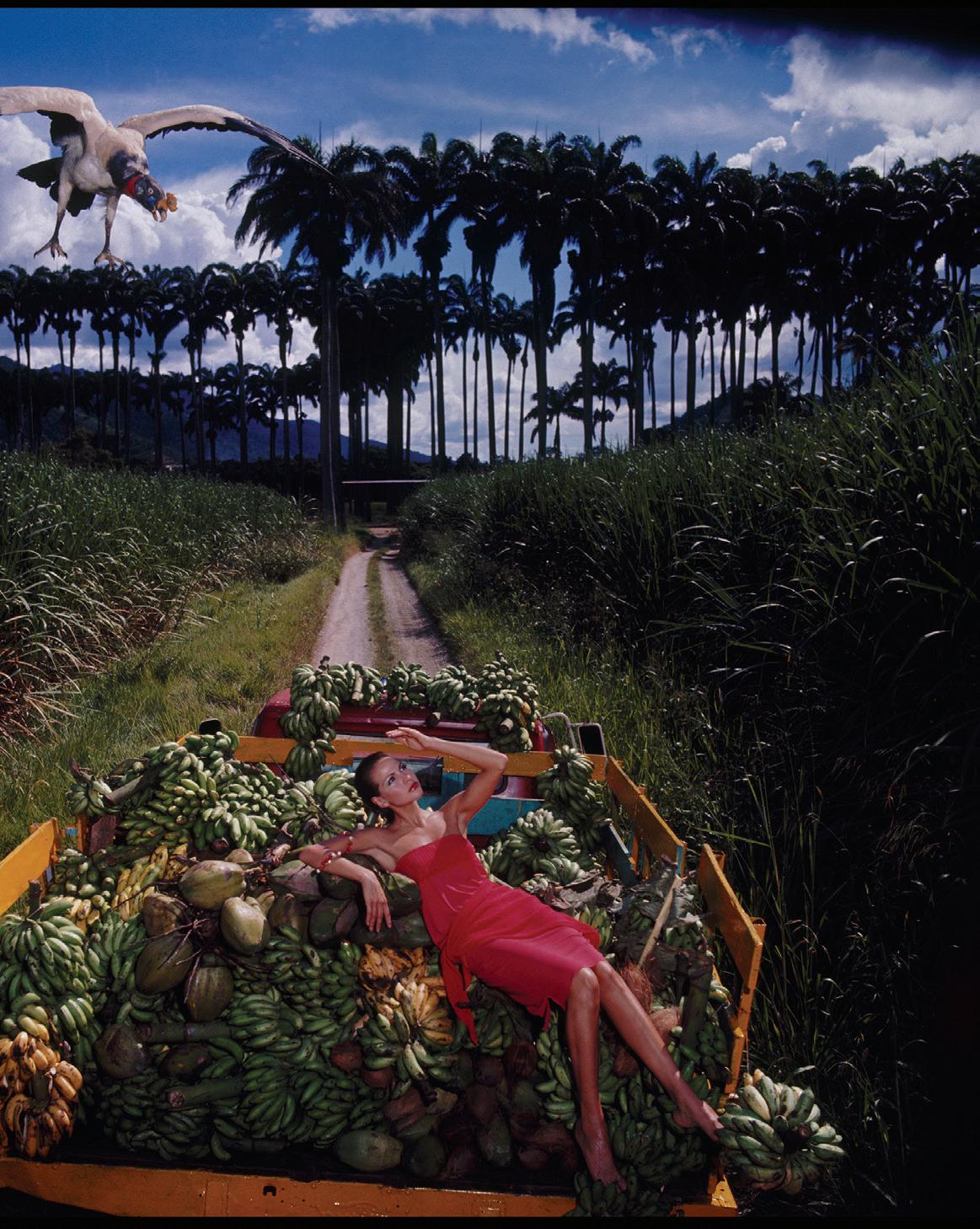
This page, from top to bottom: Maria Buccellati, Cristina Cascardo and Marpessa Hennink in Dolce & Gabbana, 1989; Yasmeen Ghauri in Gianfranco Ferré, Seychelles, 1993
Opposite page: Naomi Campbell in Yves Saint Laurent, Paris, 1988
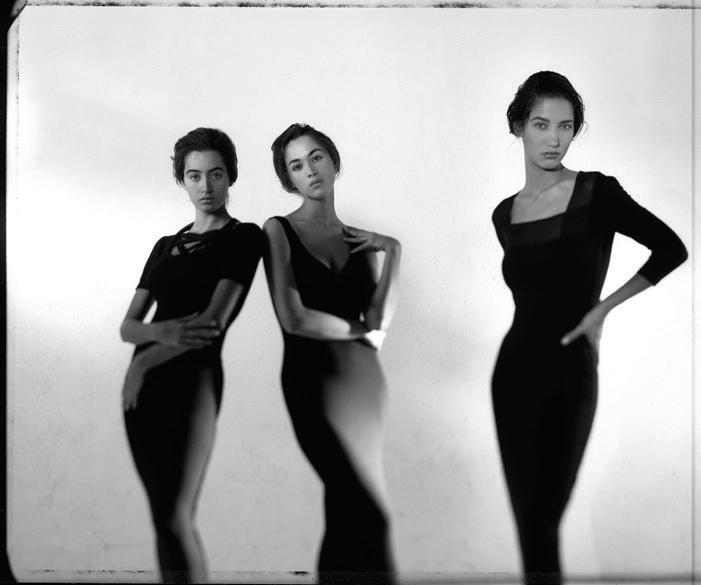
‘The way he portrayed women – strong, elegant, sensual yet never objectified – continues to resonate with today’s audiences ’
neither requested nor accepted any form of staging. The camera became an instrument of listening, rather than construction. What remained was the gaze – alert, intelligent, profoundly honest. A kind of attention that did not impose itself but, rather, respectfully accessed the inner world of whatever – or whoever – stood before it.
“Yet Barbieri did not succumb to a romantic or nostalgic vision of untouched nature. He understood well that time grants no reprieve, that every culture, every form, every language is swept away in the relentless flow of things. Rather than chase authenticity as a lost illusion, he chose to transform the void left by the irretrievable into aesthetic density – into form, into light, into evocation. His tropical images thus became thresholds between ethnography and art, between documentation and vision.”
The works that Celini selected for the exhibition were chosen to not only celebrate Barbieri’s oeuvre – “images that reveal the human and relational depth of Barbieri’s gaze” – but to invite the public to “explore the complexity of an artist who moved through genres, eras,
and visual idioms with extraordinary coherence and creative freedom.”
After battling a long illness, Barbieri passed away last December, but along with a remarkable body of work he left a legacy that will continue to resonate with contemporary audiences.
“The way he portrayed women –strong, elegant, sensual yet never objectified – continues to resonate with today’s audiences. In an era increasingly conscious of the male gaze and the politics of visual power, Barbieri’s work feels strikingly modern: aware, respectful, and subtly ironic,” says Calini.
“Also, in a time saturated with fast and ephemeral images, Barbieri’s work stands out for its artisanal precision and compositional intelligence. His sets, costumes, and lighting were all carefully constructed, yet never superficial. Even younger viewers recognise in this discipline a rare and lasting value.”
Eternal Elegance – The Timeless Photography of Gian Paolo Barbieri, staged by Zurich Italy in collaboration with 29 Arts In Progress Gallery, runs until January 15, 2026, at the Zurich headquarters in Milan
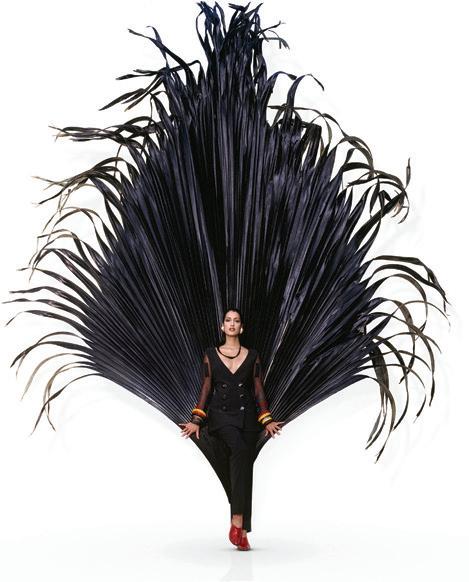
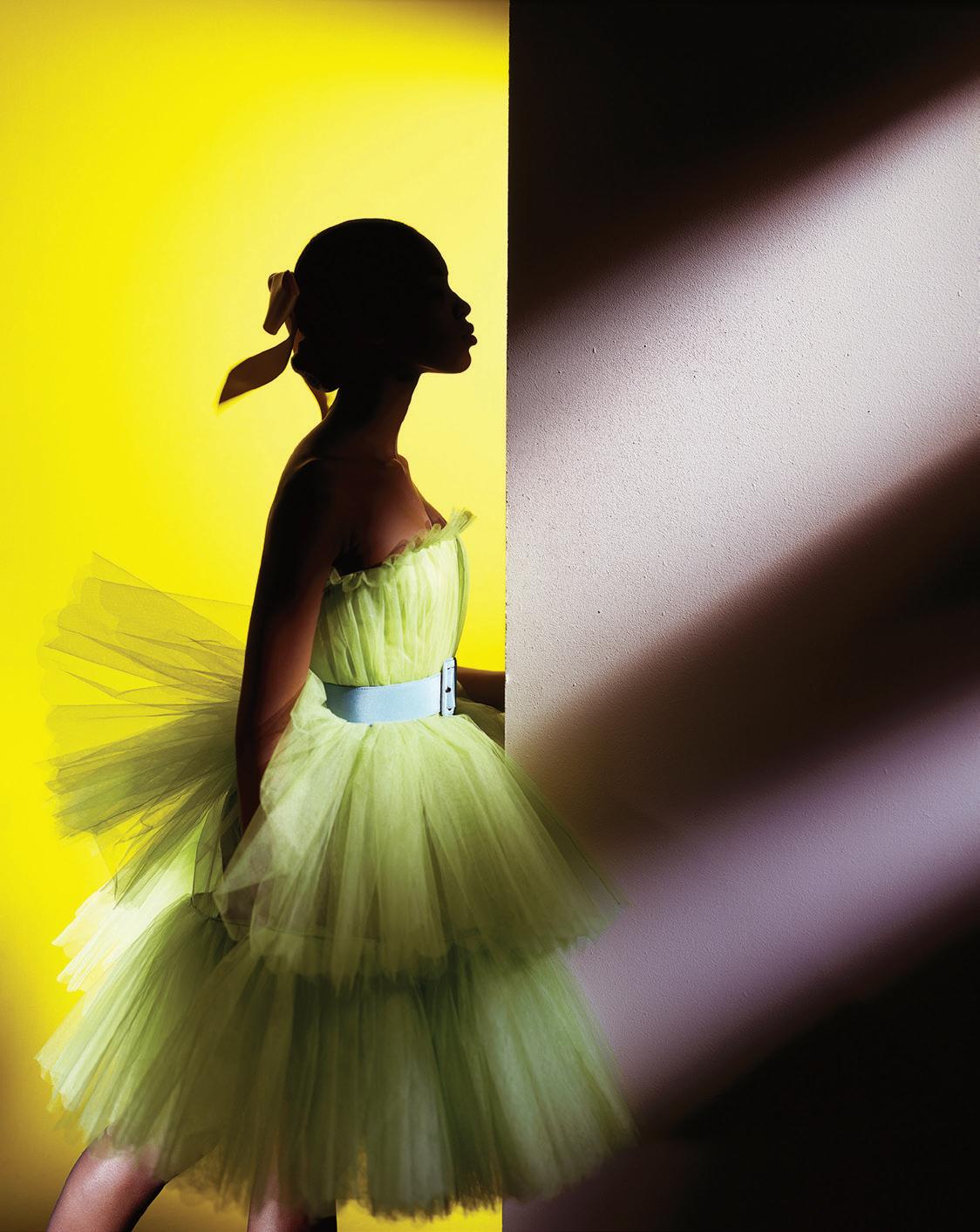
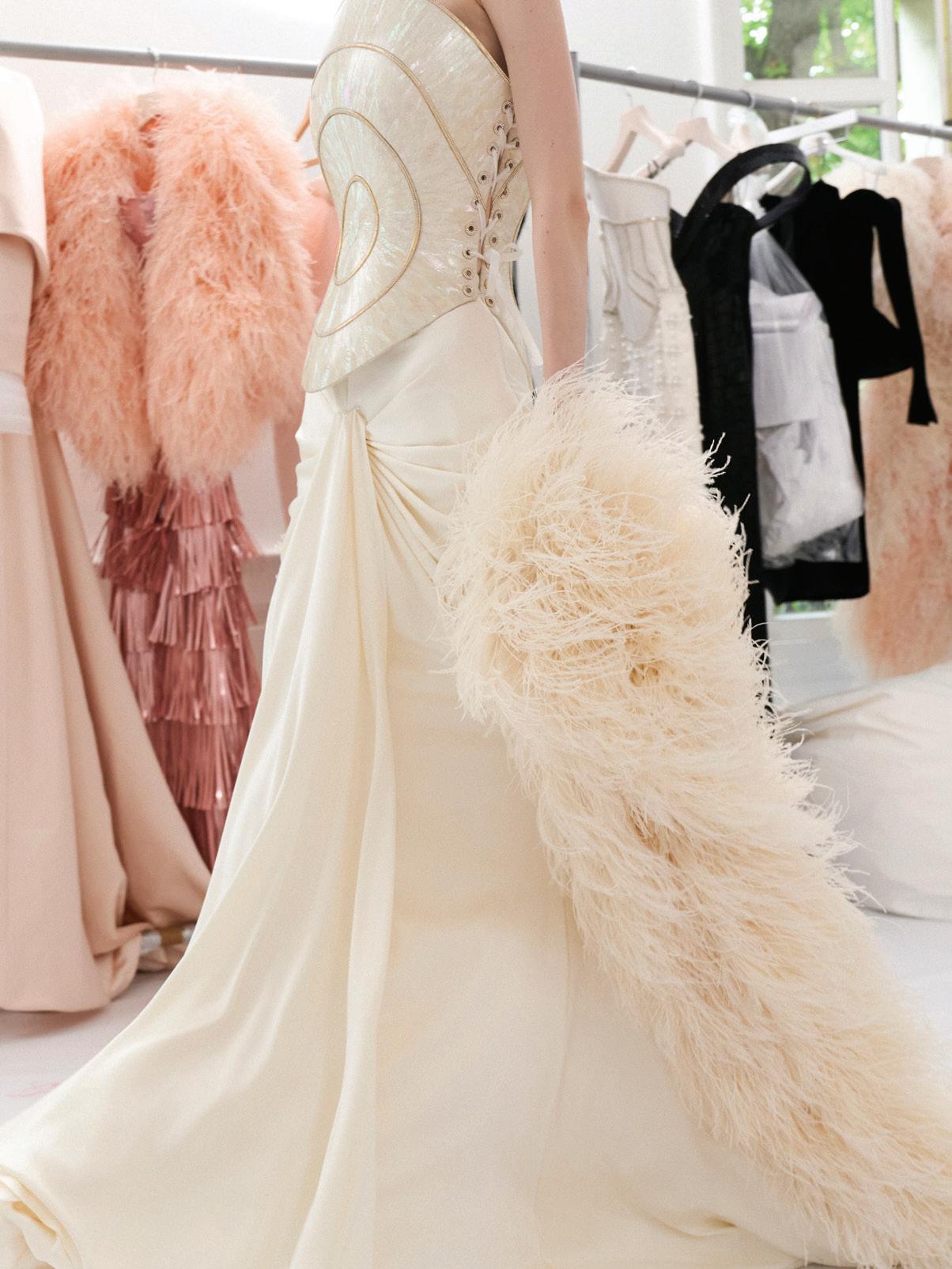
Two years on from debuting her namesake label in Paris, Tamara Ralph talks lessons learnt, the joy of motherhood, and the unwavering appeal of crafting couture
WORDS: JOHN THATCHER

Tamara
“Awhirlwind” is how couture designer Tamara Ralph describes the past two years of her life, a period in which she launched her eponymous label, opened an appointment-only salon in Paris (its location a stone’s throw from the Grand Palais and Avenue Montaigne), partnered with Audemars Piguet for a limited-edition Royal Oak and with celebrated French crystal house Daum for a five-piece crystal set, designed gowns for the likes of Angelina Jolie, Ariana Grande, Emily Blunt and Amal Clooney, and gave birth to a second daughter. A whirlwind indeed.
In June she was back where it all began, Paris, presenting her autumn/ winter 2025-2026 couture collection in the city where she debuted the first designs under her own name in 2003, following sixteen years as one half of the now defunct Ralph & Russo.
“This season I was inspired by Art Deco and its era,” says Ralph, reflecting on the show at Palais de Tokyo. “It was such a glamorous time, filled with opulence, elegance and an overall celebration of maximalism. The details were intricate and lavish and endlessly inspiring. The collection is anchored in this special moment in time, which can be seen in the soft, metallic colours, the sharp cuts and precise silhouettes, and of course in the finest of details."
Ralph often uses embellishments in her designs, the opulent nature of the Art Deco era granting her additional licence for expression, with mother-of-pearl shards, teardrop pavé crystals and pearl pendants featuring liberally across the collection. “The details themselves are so delicate that I felt the colours of the fabrics should unite seamlessly with these ornate embellishments. Combined, it evokes an overarching sense of ethereal serenity, the timeless allure of elegance reborn in a soft winter white wonderland. The essence of the collection is understated sophistication, femininity and divine artistry – a synthesis of exquisite Art Deco elegance built to last and crafted to inspire.”
Crafting is what inspires Ralph, describing each unique item as an “individual piece of art.” Does she see couture as a sanctuary for imagination? “I do. There is an art to couture – it is an old-world craft, with painstaking

‘ There is an art to couture. It's an old-world craft with painstaking technique ’
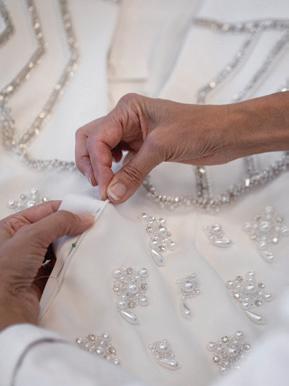

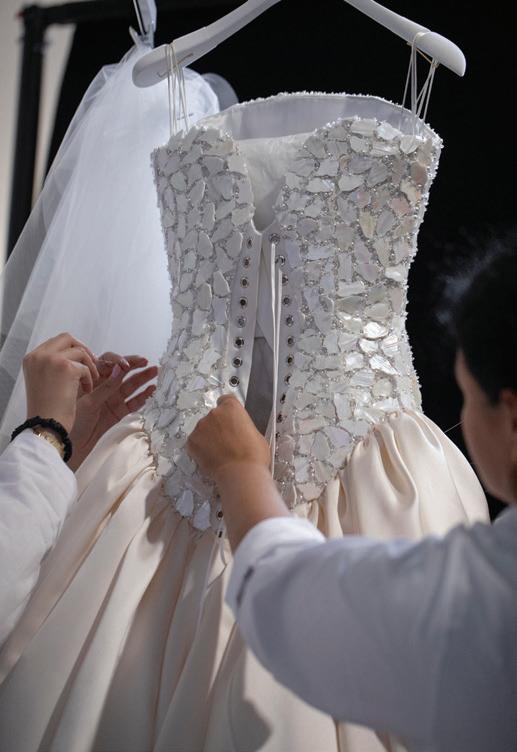
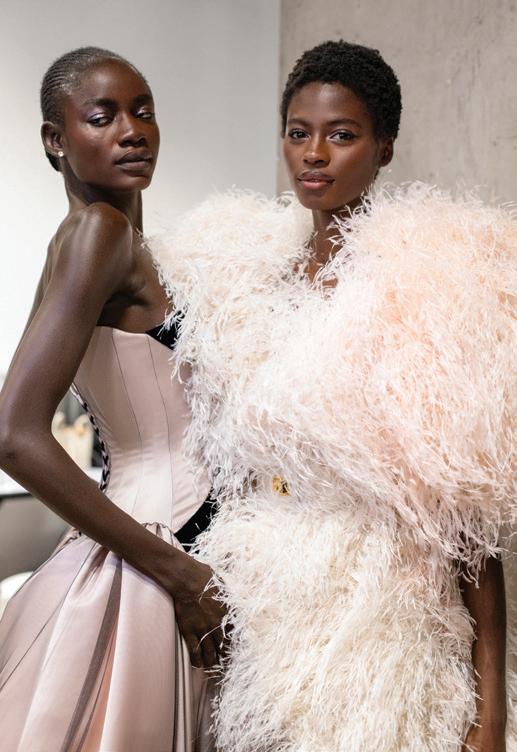
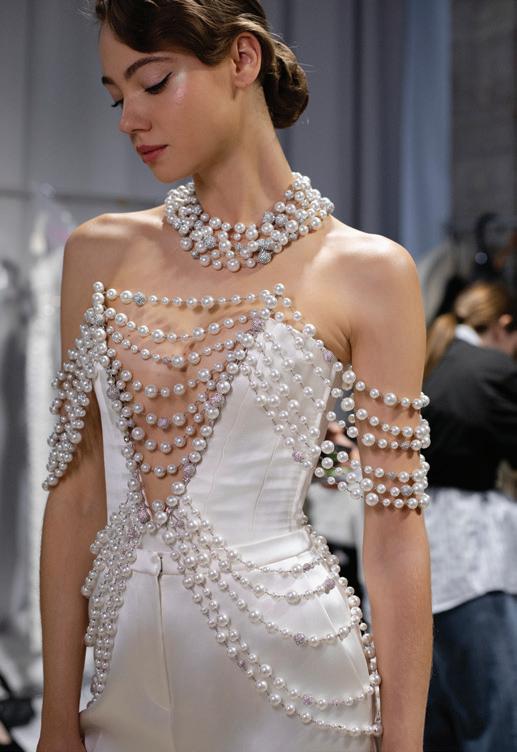
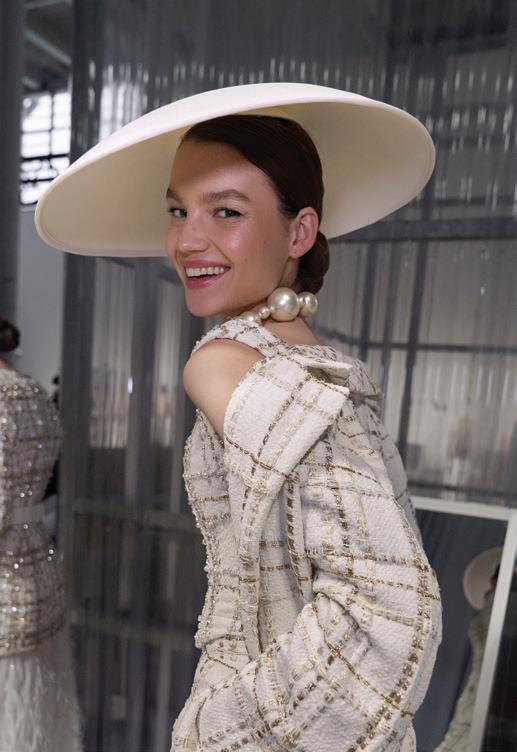
technique. This is not something that can be easily replicated nor replaced with technology. Couture is still made by hand, which makes it remarkably special. As well, it is a category in which the options are seemingly limitless and therefore you can let your imagination run wild – which I love.
“The bespoke element definitely plays a role here also, as it is quite exceptional to have something made entirely for you – and potentially even with you, as many of my clients are quite creative themselves and it becomes quite a collaborative process.
“Couture as a category really stands alone. A piece of couture often takes hundreds – sometimes thousands – of hours to construct entirely by hand, often going through many, many stages throughout its journey from sketch to final creation; there is something to be said for this.”
Having touched on the idea of technology, I ask about the role AI may one day play in couture’s creative process. “I think the concept and development of AI is interesting and has the potential of pushing boundaries creatively but, as with anything, I think finding the right balance will be of the utmost importance. It will be about embracing the power and opportunities that such innovation brings and using it to our advantage, but in a way that still protects the talent and craftsmanship within the fashion industry.
“I don’t believe that artificial intelligence can ever – no matter how impressive or advanced – replace human talent. However, it can certainly lend itself to innovation as well as streamlining the design process.”
While there’s always an air of fantasy to Ralph’s designs, these are gowns designed to be worn, not admired then stored.
“I think this is part of why my clients come to me – because I am creative and I love to push the boundaries. Equally, I do try to ensure that each piece is inherently wearable. This is the end purpose, after all,” she says.
“Of course, there is variation across markets and what is most compelling – and therefore desirable – for each region. For instance, the Middle East tends to be more eventdriven and therefore my clients there are often drawn to the more
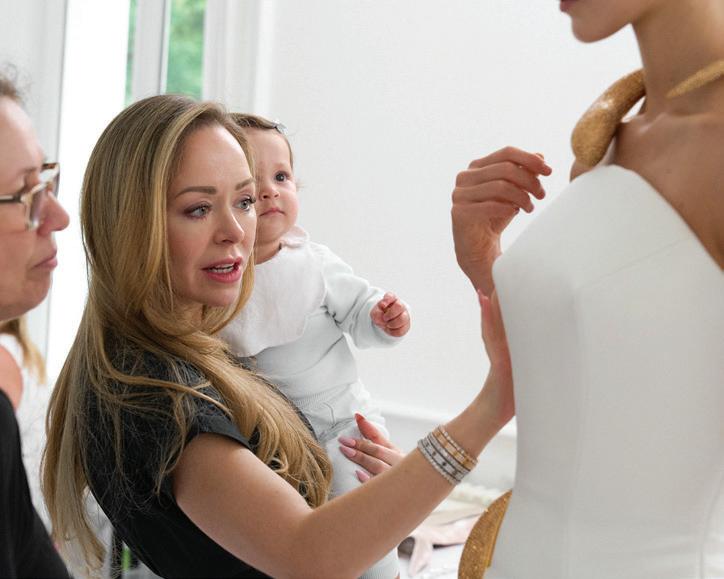
‘ I think part of why my clients come to me is because I am creative and I love to push the boundaries ’
dramatic, vibrant pieces. Whereas other markets might look for more minimalism but with exceptional tailoring. But I love this element of variation as it allows me to push my own creativity in different directions – and keeps me feeling challenged.”
Raising two young children while working to build her own business is certainly a challenge, and it’s one Ralph hopes her daughters take note of when they grow. “Becoming a mother is the single most important thing I have done in my life, and being a mother is endlessly inspiring as well as motivating.
“It has also taught me the importance of being a role model for my two daughters. I want them to be proud of me and my accomplishments, and for my work ethic to set an example for them – regardless of what path they choose to embark upon, when the time comes.”
As for Ralph’s own path, the whirlwind of the past two years has delivered lessons of its own. “There are many. But perhaps most notably I have learnt that, whilst my passion is design and more creative pursuits, it is crucial to always have a view into all facets of the business. Equally, it is of the utmost importance to ensure that you are surrounded by individuals in the business who are singing from the same hymn sheet; even if they might be experts in an area in which I am not, and vice versa, we have to have the same values and be working towards the same goals and objectives.
“I have also learnt how critical it is to lay the foundation for your brand; it is so important to establish your ethos and the essence of what your brand embodies before you further evolve and expand. The rest will follow as it is meant to.”
And what tends to follow whenever Ralph is involved creatively is typically fabulous.
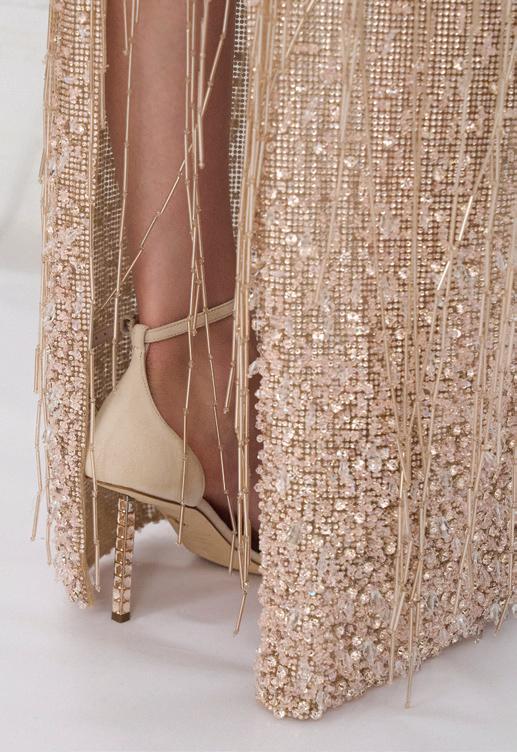

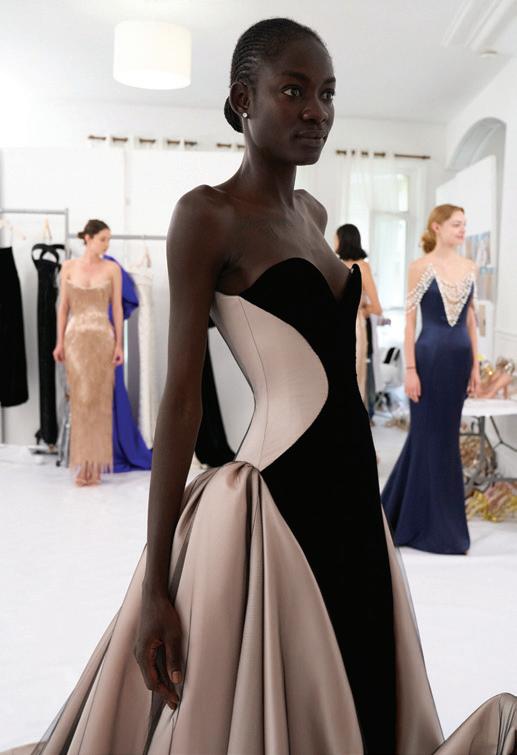
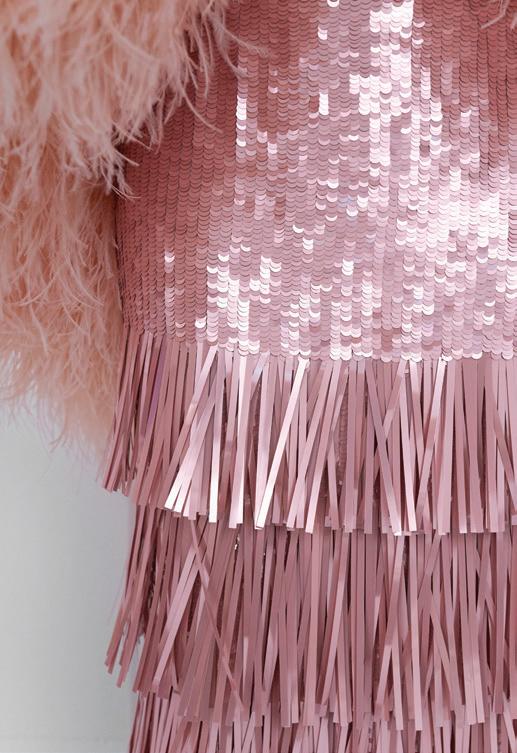

Spider Fan
The McLaren Artura Spider is fast and precise on the open road, with a thrilling roar, but switch to EV mode when you’re cruising through your community and you’ll be able to hear the birds sing
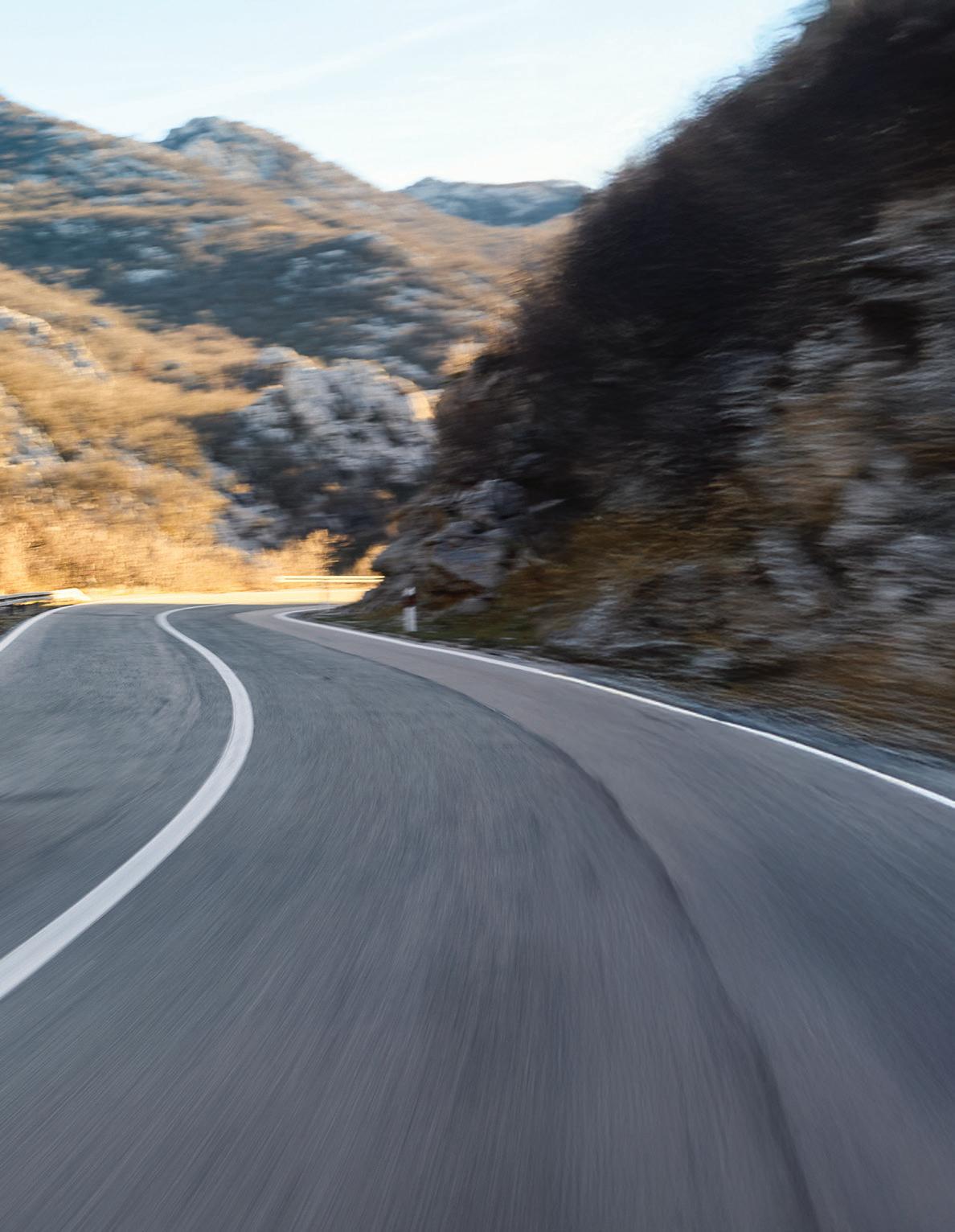

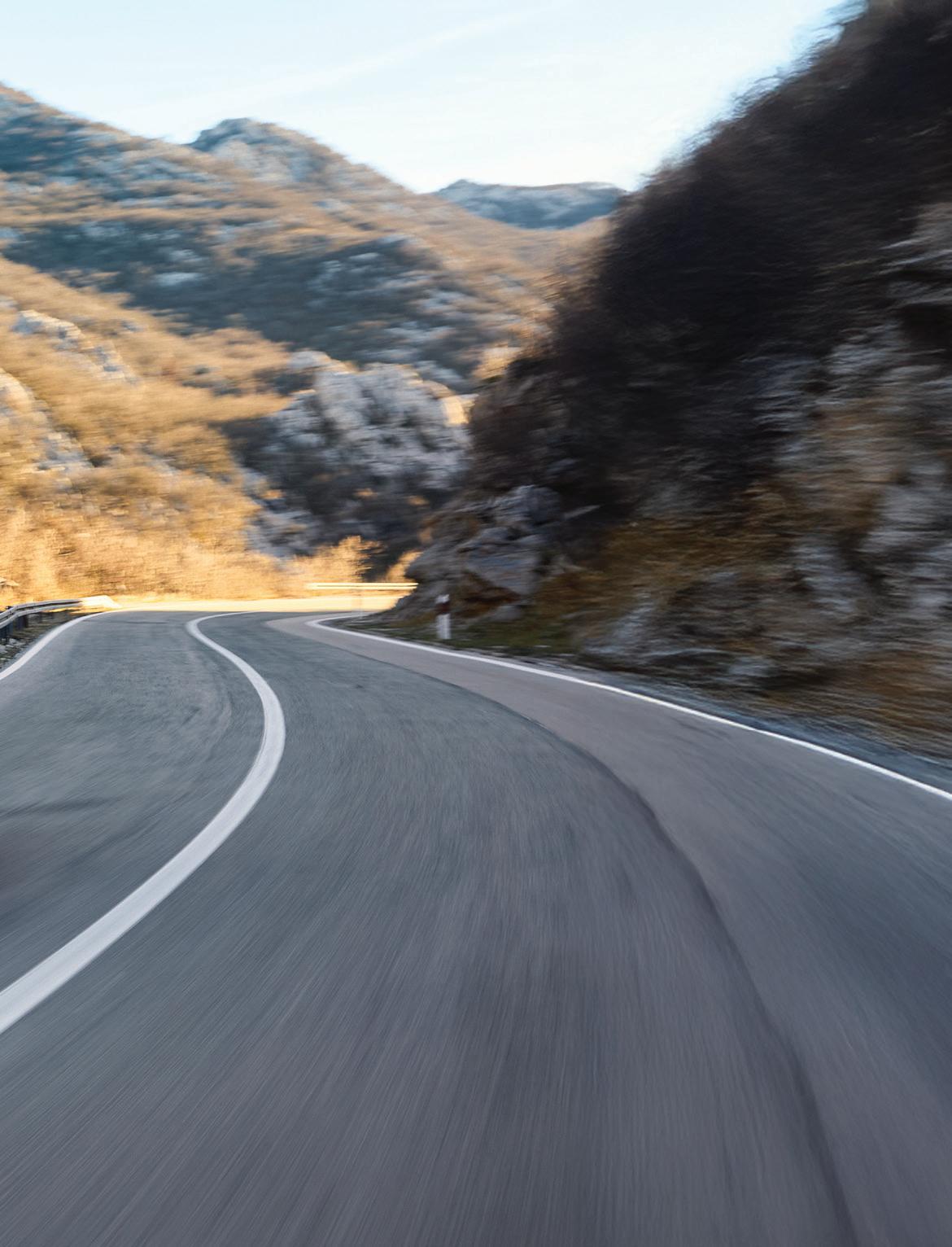
WORDS: DAVID GREEN
Supercar ownership is a minefield. Even someone craving that exotic car emotion will have second thoughts about the image of something that screams fast, loud and disruptive. That is why we have a glut of ‘sleepers’ – very fast cars, often in grey or black, that look from the outside like an estate car or SUV but are capable of warp speeds. These give the driver performance while not shouting too loudly about its capability. That’s all well and good but, although some fine products are available, little can touch the exciting, visceral appeal of a genuine laser-focused supercar. McLaren may have the solution to this dilemma with its Artura Spider. It’s a bona fide supercar with all the trimmings, but it has something up its sleeve that makes it more palatable to both owner and onlooker. This is the first convertible McLaren with plug-in hybrid power, giving this car a distinct flavour. EV mode is only intended to take you a short distance. For the most part the compact Axial Flux E-motor
‘McLaren’s sublime hydraulic steering is matched with its trademark low scuttle’
supplements the twin-turbo V6 petrol engine with torque in-fill and eliminates any turbo lag. Yet it does have a handy 33 or so kilometres of pure electric range. It doesn’t sound much, but when deployed effectively in the right place it is very useful. For instance, one of the best aspects of the Artura is to switch to silent, electric mode when driving through your gated community. It’s the acceptable face of supercar ownership without the barking, popping engine notes that could disrupt the neighbours. The difference can be startling. Irritated looks when a loud, obnoxious sports car makes its presence felt are swapped for curious smiles as a good-looking, muted convertible rolls on through. It’s also strangely satisfying to drive it this way,
safe in the knowledge that it’s ready and waiting for you to fire up the cylinders when you hit the (occasionally) open road. Care in the community aside, the main job of electric motors in this car is to complement the petrol engine and provide rapid acceleration with incredible throttle response. When you want to turn on the taps and let the Artura Spider sing, McLaren has upped the drama with a greater crescendo of sound provided by a revised exhaust design. There’s also an optional sports exhaust for those who want the maximum difference between electric and combustion sounds. The result: a supercar that is by no means the fastest in the market (although 609bhp, 3 seconds to 100km/h and a top speed of 330km/h is ample in anyone’s books), but probably one of the quickest from A to B. The power combination undoubtedly contributes to this, but it’s the sum of the Artura Spider’s parts that make this model such an absorbing proposition. McLaren’s sublime hydraulic steering is matched with its trademark low scuttle, offering fantastic sight lines out of the
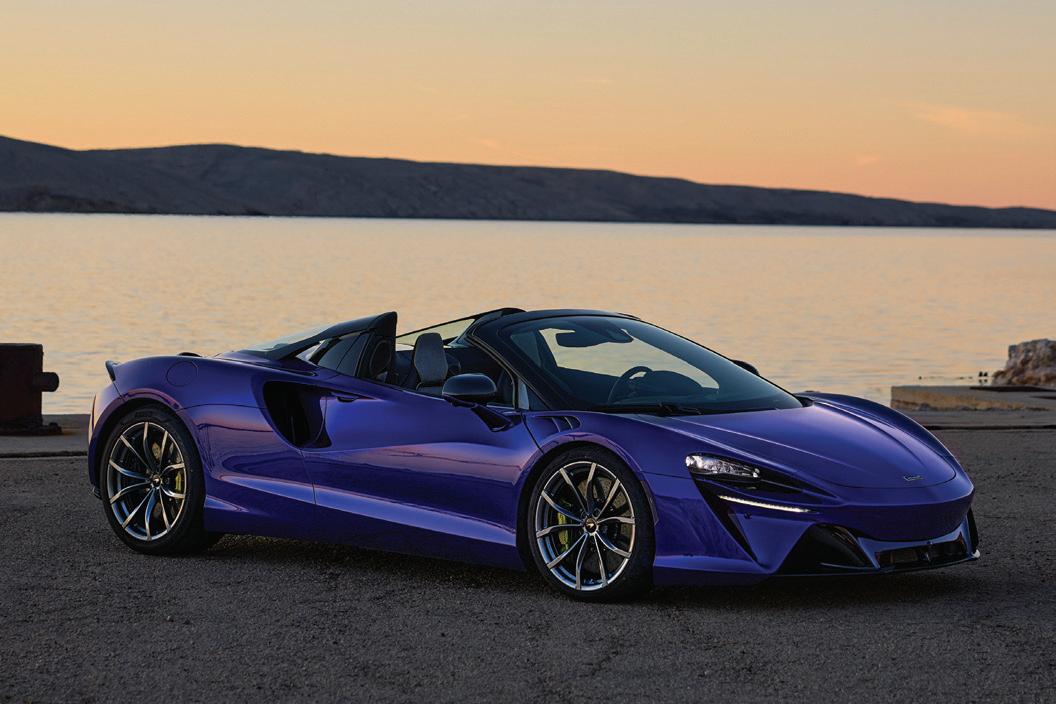

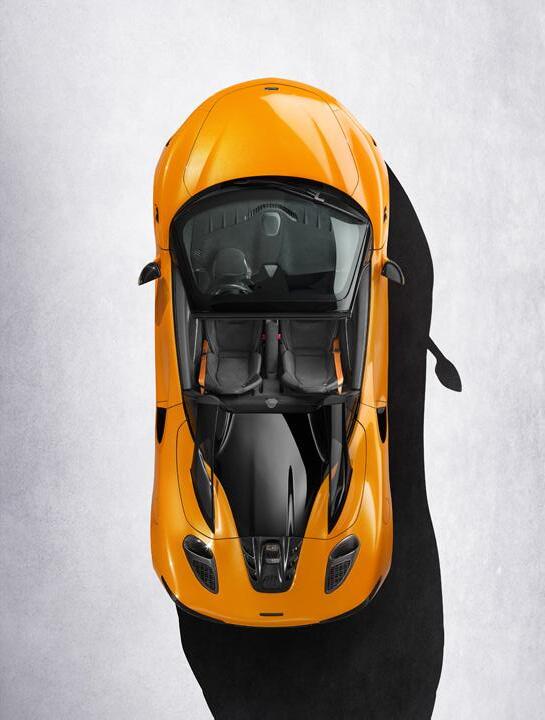
front, which maximises confidence to place the nose exactly where you want it.
It’s also petite by modern-day standards, making driving on tight, twisty roads unintimidating. The Artura’s carbon tub, now made inhouse by McLaren, means there is no compromise on rigidity from coupé to convertible. Tipping the scales at only 62kg above the coupé gives you open-air driving and all the visibility it provides without the downsides. Also the Spider’s retractable one-piece hard top operates in only 11 seconds at speeds of up to 50km/h, meaning you can change the character of this car in moments, even when you are on the move. Of little interest to almost anyone who will buy this car, it is also the most fuel-efficient convertible McLaren has made.
This is a British supercar that could be used daily without drama and without feeling like you’re trying to take a thoroughbred racehorse on a light canter. Yet ask it to gallop and I can think of few cars, even in the hypercar category, that would be able to show it a clean pair of heels. Take it on a tight, snaking mountain road and you may win the outright rosette while enjoying all the pleasures of driving a convertible.
It’s an accomplished choice and a winwin situation. Supercar ownership solved.
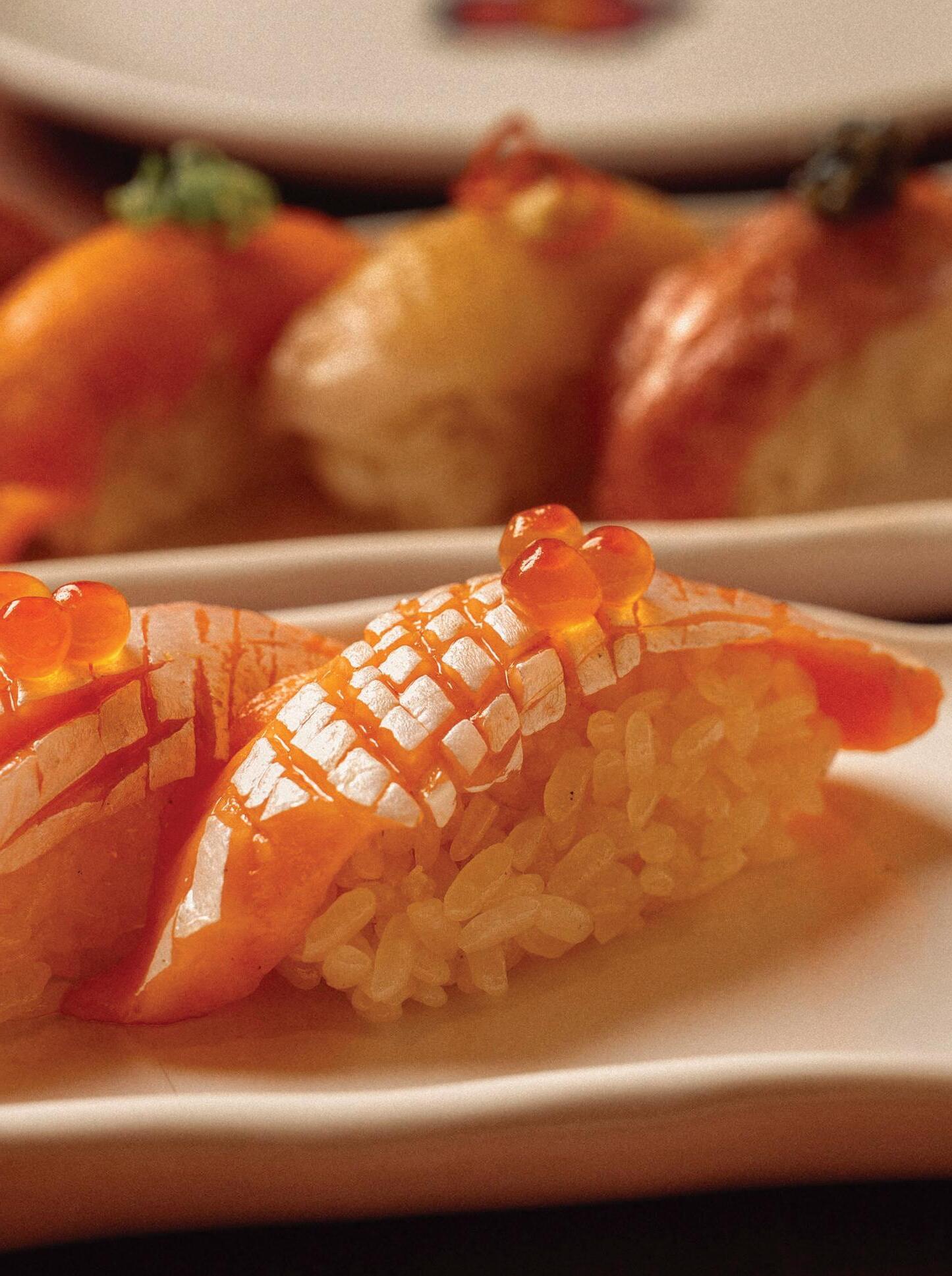
On A Roll
With the launch of yet another homegrown restaurant concept, Reif Othman’s culinary legacy continues to grow
WORDS: JOHN THATCHER
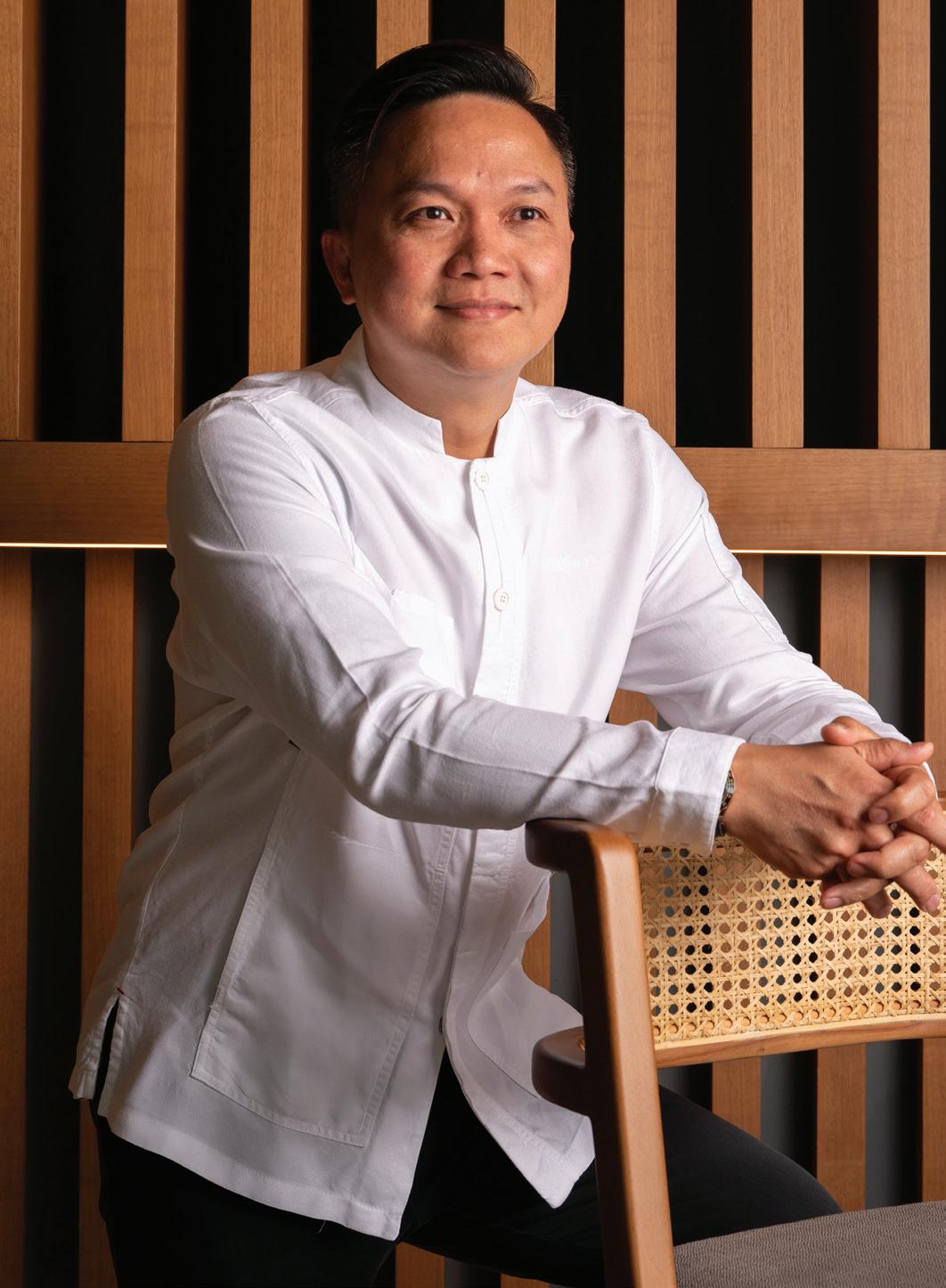
Dubai may currently feel like it’s bursting at the seams with restaurants, barely a week passing without another new opening. But there was a time not so long ago when the city’s gastronomic scene –and credibility – revolved around a small patch of DIFC, where Zuma and LPM battled for culinary supremacy barely a hundred metres apart.
Leading the charge for Zuma was Reif Othman, the highly skilled Singaporean who, in 2012, as the restaurant’s executive chef, propelled Zuma onto the list of The World’s 50 Best Restaurants. It was the first time a Dubai-based restaurant received global recognition from an industry heavyweight and if it was a big deal for the city – paving the way for Michelin et al – it was an even bigger deal for Reif, whose name was now known beyond the city’s borders.
Yet rather than use the acclaim as a springboard for success in a different city where the culinary scene was already entrenched, Reif wanted to do something different. He wanted to bring Dubai up to their level and do so by establishing his own homegrown restaurant concepts.
He began with PLAY, a chef’s table concept that acted as a precursor for his current iteration of the concept, TERO, a Michelin-selected 12-seat space at which Reif serves a seasonally driven multi-course tasting menu. Then there’s REIF Japanese Kushiyaki and Korean hotspot Hoo Lee Kow, both of which received Michelin Bib Gourmand status this year, while in April Reif launched a ramen house (SIO) and pizza joint (KONA) inside The Link at One&Only One Za’abeel.
Next up is YUBI, the region’s first homegrown handroll bar, which not only continues Reif’s obvious love for capital letters but also his flair for crafting unconventional flavour profiles. “YUBI is a creative collaboration with the talents at 7 Management, who came to me to bring their menu ideas for their bold new concept to life,” said Reif when we spoke during the week of YUBI’s opening at 25 Jump Street, One
‘ I aim to keep evolving dining to reflect creative culture, not just cuisine ’
Central. “In keeping with the street culture vibe, I set out to reimagine the handroll and how we eat sushi in the UAE – using the simplicity of this Japanese technique as a platform for bold, playful expression. Each roll is freshly crafted right at the counter, marrying the highest-grade sashimi, crisp tempura bites and unexpected inclusions like foie gras, all brought together in a dining space that feels social and dynamic.
“The ingredients are premium, fresh, and designed to surprise the moment you take that first bite, offering a modern twist on tradition.”
Reif has made an art of balancing tradition and innovation in his food. “My cuisine is fundamentally Yoshoku, which is where Japanese technique meets the West, so my plates have French, Italian and even Malay influences. I like to focus on reinterpretation as opposed to just repeating the same old styles. I try and show that tradition anchors us and innovation lifts us, making the offering fun, approachable, and distinctly mine.”
It was this desire for something new, something that he could call his own, that made Reif look beyond the already established brands like Zuma to truly make his mark on Dubai’s dining scene. But with YUBI now one of many concepts he’s involved with, what has been the biggest challenge in establishing them? “The hardest thing is expanding without losing the DNA of the brand. Dubai moves fast, opportunities come quickly, and it’s tempting to scale overnight. But I’ve always been hands-on. When I opened Reif Japanese Kushiyaki I started small and self-funded so I could control quality. That discipline is what keeps me grounded. And now, even as I scale,
I’m careful to work with partners who let me remain hands-on to ensure every plate still carries the intent and energy I started with. That’s why I’m thriving within my relationship with 7 Management, who give me the creative freedom to fully express my vision and bring my ideas to life.”
So does he now see himself more as a chef, a mentor, or a restaurateur?
“I see all three as facets of the same journey. I’m a chef first, curating flavours and experiences. But I’m also a restaurateur, building environments and brands with the support of my creative, forwardthinking partners, who understand how to shape meaningful concepts, not just open restaurants. But mentorship is just as vital. I give my teams space and trust, because raising the next chef is one of the most rewarding parts of the journey.”
Reif’s passion for food was raised in Singapore under the guidance of his mother, who used to run a street stall. “Watching her move with speed and ease, turning simple ingredients into beautiful dishes. That’s where flavour, discipline, and the joy of sharing food first started. From there, every experience just deepened that love.”
It was, however, another chef who convinced Reif to abandon his fledgling career as a financial broker for a career in the kitchen. “That was pivotal. That was the turning point.”
As for what comes after YUBI, Reif is again thinking differently.
“Expanding experiences that merge food, tech and design. Whether it’s through AI collaborations or new concepts yet to be unveiled, I aim to keep evolving dining to reflect creative culture, not just cuisine.
“I want to elevate the ecosystem. Creating homegrown brands, mentoring teams, inspiring others in the region – that’s the deeper ambition. Awards are milestones but building the next generation and having them tell their story, that’s the legacy I’m aiming for.”
As the chef who put Dubai on the culinary map, his legacy is already cemented.
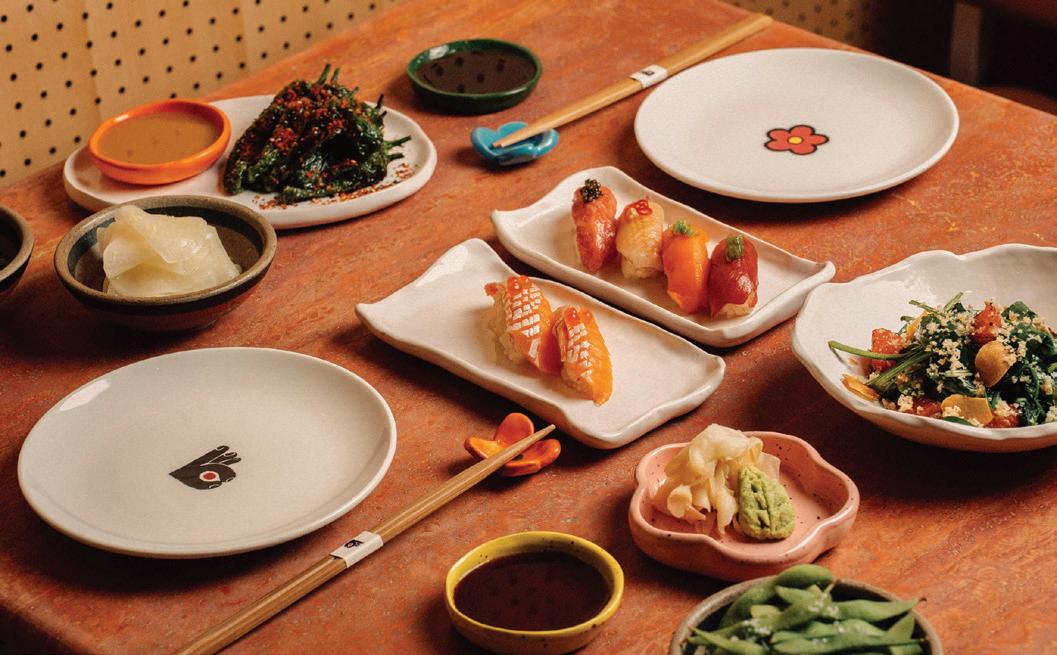
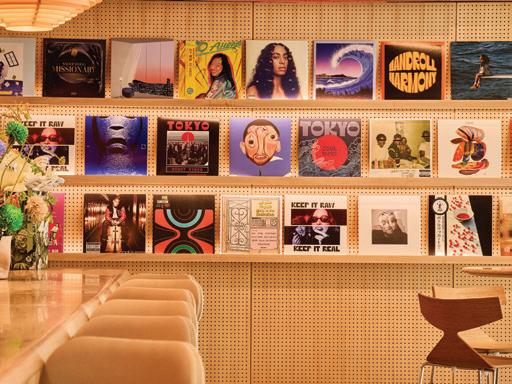
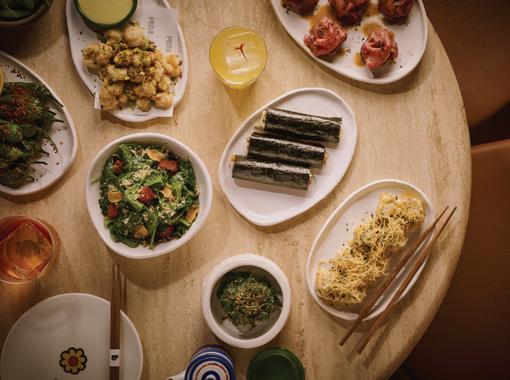
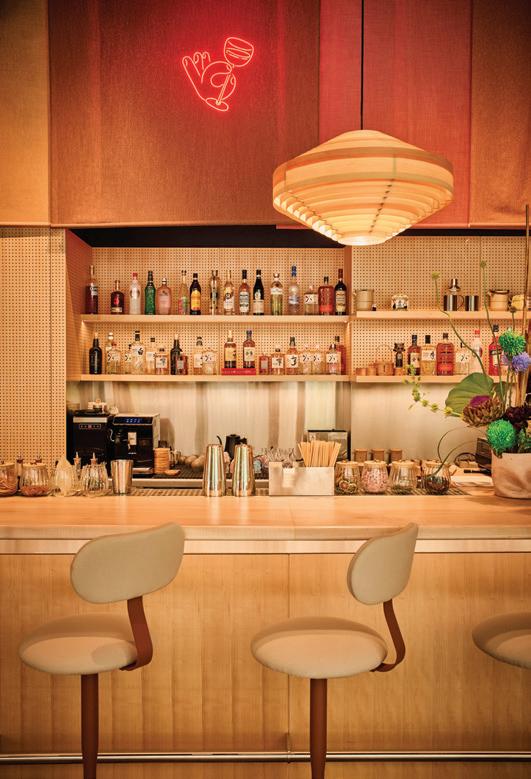
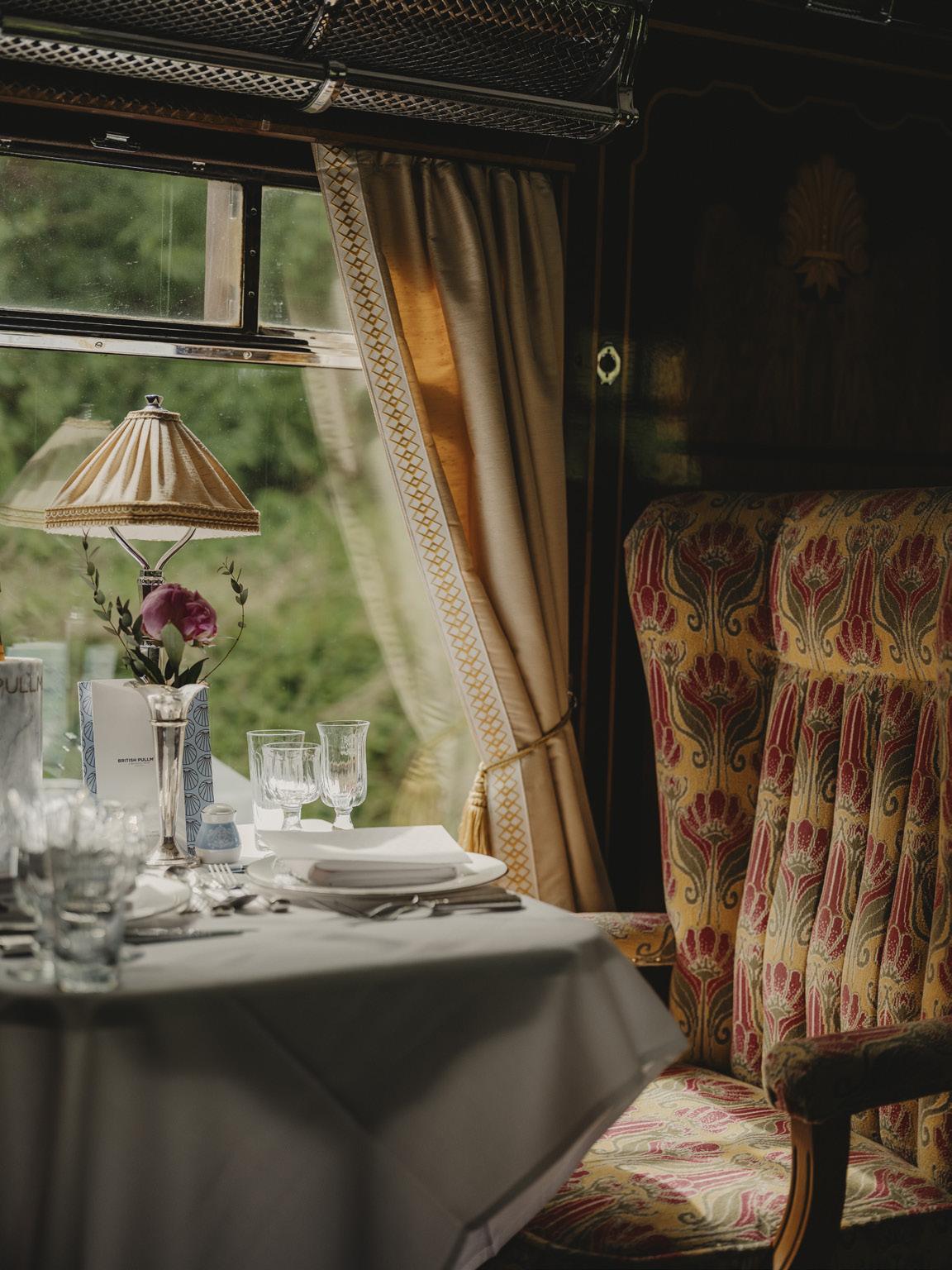
The Right Track
A daytrip to the beautiful city of Bath onboard the iconic British Pullman train is the kind of experience that makes Britain great
WORDS: JOHN THATCHER

It was like there had been a fissure in time, a sizable crack that set passengers at London Victoria a century apart, despite the gap between them appearing to be no more than the width of a train platform. On one side it was present-day 2025, grimfaced commuters visibly deflated, their weary eyes gazing up at the departures board to see just how long a delay they faced – again. On the other side of the platform it was the Roaring Twenties; a woman sporting the flapper look and a string of pearls was singing up a storm, while around her corks were popping, champagne was flowing, and dapper gents and ladies were all smiles.
And well may they have smiled. For while the commuters in 2025 were forced to face up to the prospect of a miserable few hours of hanging around Victoria station in the chill that accounts for British summertime, those in the Roaring Twenties were eagerly awaiting the signal to board one of the world’s most luxurious trains, the British Pullman, A Belmond Train, who just so happen to also operate the Venice Simplon-Orient Express.
This most iconic of British locomotives first entered service in America way back in 1874, before the company’s founder, George Mortimer Pullman, brought the business to Britain, believing its alluring patchwork countryside would be the perfect accompaniment to his beautiful train carriages. He wasn’t wrong.
Since then, the great and the good of England’s high society have travelled aboard the British Pullman, including Elizabeth II and Prince Phillip, seduced by its sumptuous carriages that retain all of their period charm: mahogany and marquetry, polished brass and handstitched fabrics, Art Deco lamps, plush carpets and mosaic bathroom floors.
In fact, every inch of this legendary locomotive exudes the glamour of a bygone era, the golden age of travel – the level of artistry, the depth of detail both extraordinary. This is nowhere more apparent than in the ornate woodwork. Unique in each individually designed carriage, the elaborate marquetry is the work of A Dunn & Son, an English studio that dates to 1895, which in between times also designed panelling for ocean liners including the Titanic. The studio is now run by Albert’s greatgranddaughter Cheryl and still adheres to traditional methods dating back to the 1700s. Once a year, this intricate
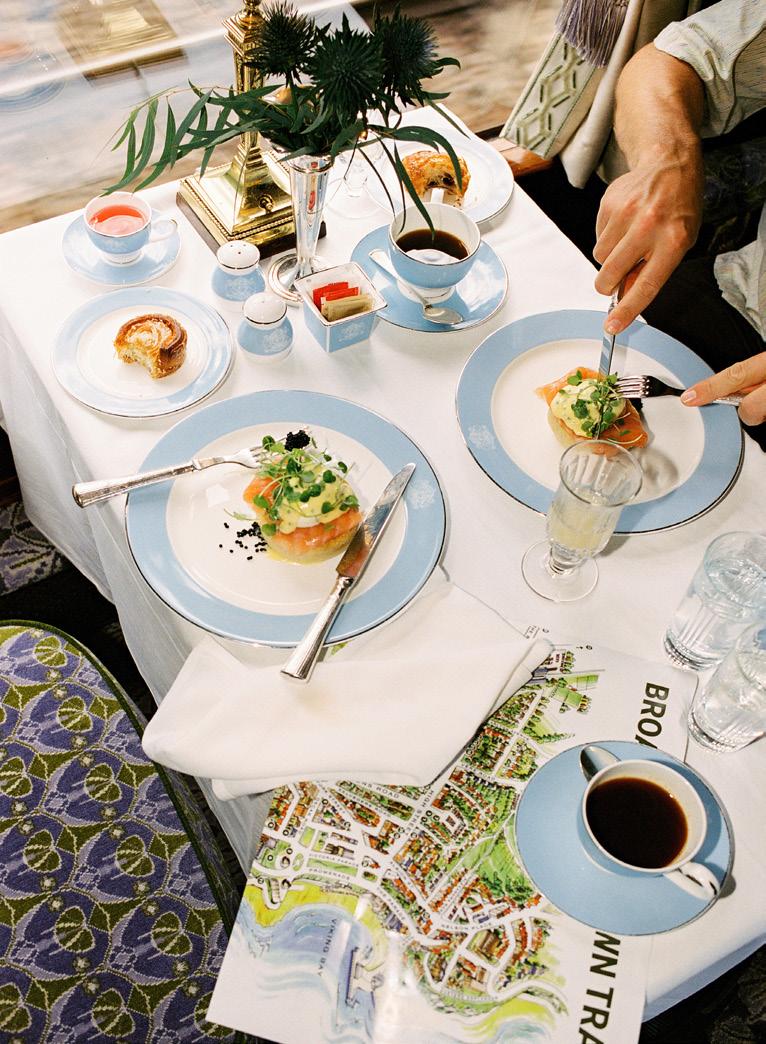
‘ Bath is the only city in the UK to be designated a World Heritage Site in its entirety ’
wood panelling receives the finest French polish, applied by skilled artisans from a firm that was established in 1884. This is a train steeped in tradition. Settled very comfortably into our carriage – the beautifully attired Minerva, which dates to 1927 – dreary Victoria grows ever distant by the time we’re handed a sprightly Bellini at the start of the onboard silver service, kickstarting a daytrip to the beautiful city of Bath, the only city in the UK to be designated a World Heritage Site in its entirety. By the time the train has rolled past Edwardian-era houses, quaint little villages, meandering rivers, steep valleys,
sheep-studded farmland and, most notably, the Westbury White Horse, carved in white chalk into a hillside in 1778, we’ve enjoyed an excellent brunch of warm pastries, homemade granola and eggs Benedict, making a walk around Bath as much a necessity as it is a pleasure.
Particular previous visitors to Bath have left a lasting impression on a city – which sits in a valley, embraced by verdant hills – that’s also unique for being home to the only naturally occurring hot springs in Britain. It was this geothermally heated water that drew the Romans, the most famous of those visitors, who saw it as both
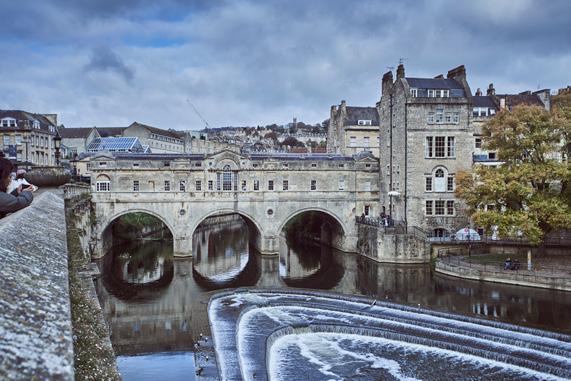

medicinal and sacred. To make the most of it, they built a large bathing complex that remains one of the bestpreserved Roman bathhouses in the world, the centrepiece of which is a large, open-air pool filled with warm spring water, from which steam rises. You can walk on the original Roman paving stones that surround it (taking a quick dip is not permitted, sadly) before perusing the countless artefacts that the Romans left behind, now housed in the museum’s galleries.
It was, however, the Georgians – the people who lived in Britain during the long reign of four consecutive kings named George – who constructed the city’s outstanding architecture, which has been used as a period-setting backdrop for the likes of Bridgerton, Persuasion and Vanity Fair. The sweeping Royal Crescent is the city’s pin-up, but almost everywhere you walk boasts an arresting

sight – Queen Square, the Assembly Rooms, pretty Pulteney Bridge that leads to the magnificently grand Great Pulteney Street, and my personal favourite, The Circus. A group of elegant townhouses divided into three curved sections to form a perfect circle, at its centre is a huge tree, adding natural beauty to manmade charm.
At the turn of the nineteenth century Bath was home to Jane Austen and the city remains proud of its esteemed literary heritage. There’s a permanent museum dedicated to her, while this year Bath has celebrated the 250th anniversary of her birth with gusto – fans of Bridgerton should pencil in a visit on December 13, when the city’s splendid Pump Room plays host to the Yuletide Jane Austen Birthday Ball.
The British Pullman day trip grants you a little over three hours in Bath, more than enough time to take in its architectural grandeur – including its imposing Abbey – and lose yourself for a few minutes down
quaint little side streets, where you’ll likely find the best of its independent shops.
You probably won’t have time to decide between the city’s two traditional but different tasting baked treats, the Bath Bun (sweeter, dense) and the Sally Lunn Bun (larger, brioche-like), which is just as well, as by the time you’ve walked your brunch off it’s time to board the train again, where a fine four-course dinner – white linen, heavy cutlery, fine China, polished glassware and prime ingredients sourced from across the UK – awaits. But not before the cork has been popped on a bottle of chilled Champagne to welcome your return.
With the last of the petit fours eaten and the final sip of wine enjoyed, the British Pullman glides gracefully into Victoria station, back to the present day, back to forlorn figures on the concourse, back to normality. But the golden age of travel had delivered a golden day
This page, clockwise from left: Pulteney Bridge, Roman Baths, British Pullman rolls through the countryside

Access to the Extraordinary
Why the Centurion Card has become synonymous with tailored excellence and personalized travel
Introduced in 2008 in the Middle East, the American Express Centurion is a globally recognized icon. More than a Card, it is a way of life, offering its members access to experiences that are as unique as they are transformative. Over the years, Centurion Membership has become synonymous with tailored excellence, setting a new benchmark for personalisation and privilege.
Such an unparalleled level of customised service is made possible by Centurion’s dedicated Concierge Service Team, each in-the-know team member an expert in travel, lifestyle and operating at the highest levels of luxury. Imagine receiving an itinerary that has been crafted just for you, one that offers you a pathway to a once-in-a-lifetime experience in an untouched paradise, a private tour of an iconic site, an escape to a fairytale resort, or an exclusive invitation to dine at some of the most sought-after restaurants in town.
Centurion Membership turns travel into a mosaic of significant experiences. What makes Centurion’s Concierge Service Team stand out is its ability to foresee what is most important to its Members. Their preferences are already understood, and they are remembered. It’s an intuitive approach that ensures that every trip becomes effortless, every moment remarkable, and every memory long-lasting.
Such experiences are not just an evening out; they are opportunities curated to inspire a deeper connection to the real meaning of luxury. Owning the Centurion Card is an access to that unique privilege.
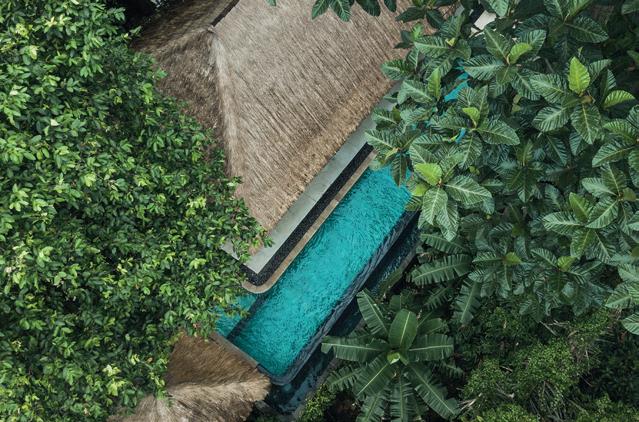
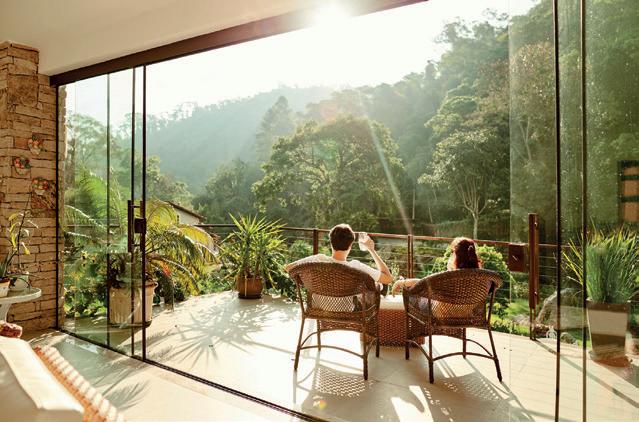
‘ Centurion Membership turns travel into a mosaic of significant experiences ’
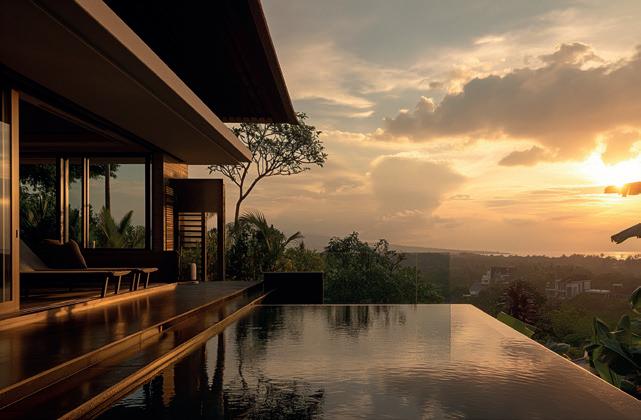
Celebrate In Style
Why Nujuma, a Ritz-Carlton Reserve and The St. Regis Red Sea Resort are a cause of celebration this festive season

The brilliant blue of endless sky, the gentle breeze that brings with it instant renewal, pellucid waters rich in vibrant coral reefs, sunsets that tug at your heartstrings. The Red Sea delivers myriad gifts during the festive season, the grandest of them all an opportunity to make memories at two of the world’s most remarkable resort hotels.
An architectural masterpiece, Nujuma, a Ritz-Carlton Reserve elevates luxury to a whole new level; each of its striking, shell-inspired villas – whether perched elegantly above turquoise waters or nestled into soft white sand – is a work of art that perfectly captures the breathtaking beauty of its natural surrounds. A harmonious haven of tranquillity, underpinned by interiors enhanced with local artistry, vibrant textures, rich colours and natural materials. Here, guest experiences are crafted with equal care: explore the untouched
beauty of the Red Sea with the resort’s marine specialists, learn of native wildlife and ecosystems from the resident naturalist, and hear the stories of the stars that surround you.
The resort’s anything, anywhere approach allows for bespoke dining, curating menus inspired by the region for your private pleasure, tables set elaborately in the privacy of your own villa, beneath the stars or on the beach, soundtracked by gentle waves.
Such personal attention extends to the beautiful Neyrah Spa – sea-facing treatment rooms and alfresco cabins, vitality and lap pools, private and shared yoga pavilions – where attentive therapists blend global expertise with regional roots to set guests on their own pathway to self-discovery, arriving eager for serenity, departing enchanted.
At The St. Regis Red Sea Resort, it’s the storied brand’s iconic butler service – which dates to the opening of its first hotel in New York City
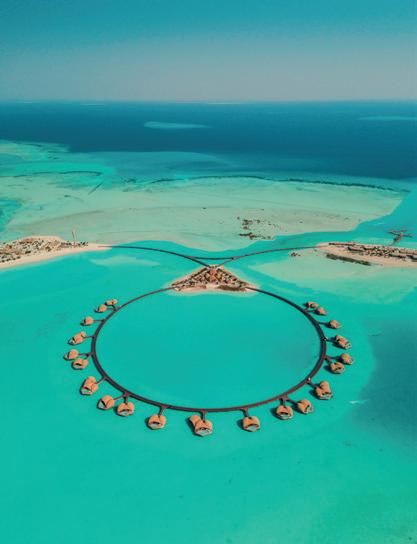
This page, from top to bottom: Nujuma, a Ritz-Carlton Reserve
‘ Every detail is thoughtfully chosen, every experience crafted to delight’

in 1904 – that ensures guests enjoy an elevated experience. Able to anticipate your every need, St. Regis butlers deliver personalised attention throughout your stay, fashioning festive adventures to evoke wonder and joy.
Villas here are exquisite. The pick of them, the Presidential Dune Villa, spans two wings and comprises four en-suite bedrooms – one a master suite replete with an outdoor shower – and everything from a kitchen to staff quarters and a media room. A vast outdoor sundeck and private pool provides a spectacular setting to soak up the natural beauty that surrounds you.
Likewise, the resort’s trio of restaurants have been designed for guests to pair each meal with a side order of breathtaking views that span
the pristine island and beyond. For something a little more personal, the resort’s private chefs are on hand to craft the ultimate festive feast in a setting of your choosing.
And whether you choose to indulge, unwind at the fabulous St. Regis Spa, or immerse yourself in the natural beauty of the Red Sea – snorkelling, diving or kayaking through mangroves – the legendary St. Regis service makes everything seamless.
With every detail thoughtfully chosen, every experience crafted to delight, and every moment intended to be remembered forever, the festive season comes alive amid the unparalleled elegance of these superb Red Sea resorts.
stregisredsearesort.com; nujumareserve.com
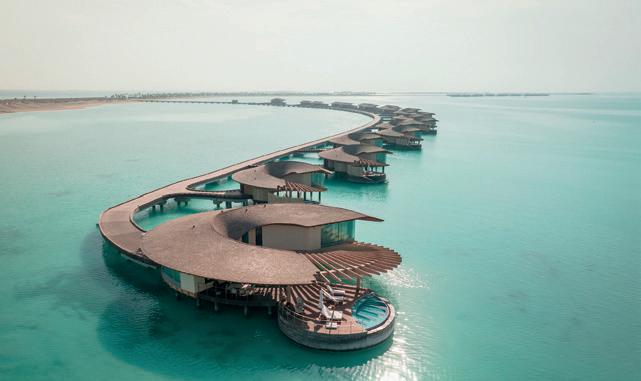
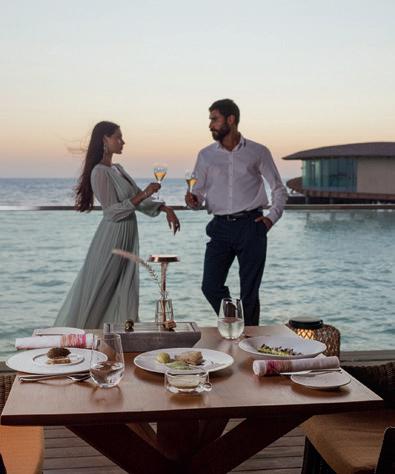
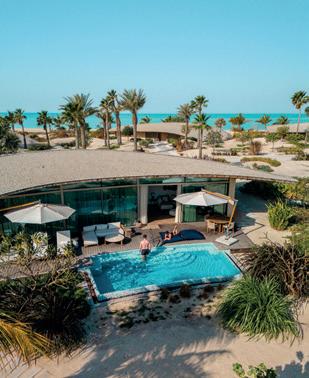
This page, from top to bottom: The St. Regis Red Sea Resort

Riccardo Pozzoli
CREATIVE DIRECTOR, PERSOL
The best piece of advice I’ve ever received is that cultivating passion in everything you do is the surest way not to lose direction. Passion for your family, for your work, and for life itself creates an energy that keeps you grounded even when circumstances change. Whenever I’ve faced moments of doubt, reconnecting with that passion has always pointed me the right way.
My family is my greatest achievement. Building businesses, publishing books and collaborating with inspiring brands are milestones I’m proud of, but nothing compares to creating a life together with my wife and raising our two children. It’s the achievement that gives meaning to all the others and the one I hope will leave the deepest legacy.
A lesson I learnt the hard way was that everything eventually passes. Joy and success, just like pain and setbacks, are
never permanent. Learning this has been difficult, because in the middle of a challenge it feels endless, and in moments of happiness you wish they could last forever. Accepting that all things are transient has helped me face difficulties with more calm and enjoy good times with more gratitude.
I wish I could sing in tune. I love music: I play the drums and strum the guitar, but when it comes to my voice, I can’t hit a single note properly. It would be fun to match the rhythm I feel with a melody that people could actually enjoy listening to.
I’d like to be more perseverant. I often get excited about new ideas and projects, but I also tend to lose interest too quickly. If I could cultivate more patience and endurance, I believe I could bring even more of those ideas to their full potential.
My idea of perfect happiness is a slow morning by the water, my children laughing nearby, my wife by my side, and no urgency to be anywhere else. It doesn’t need grandeur: presence, nature, and love. For me, that’s as close to perfection as it gets.
If I could tell my younger self something I’d say be patient. Don’t rush to prove yourself. Everything takes the time it needs and sometimes what looks like a detour is the real path. Trust the process, and don’t be afraid of vulnerability: it will make you stronger.
The living person I most admire is my wife. For her strength, resilience, and generosity of spirit. She has the rare ability to light up a room and to comfort those around her at the same time. Admiration, in my case, is not for someone distant but for the person I get to share life with every day.
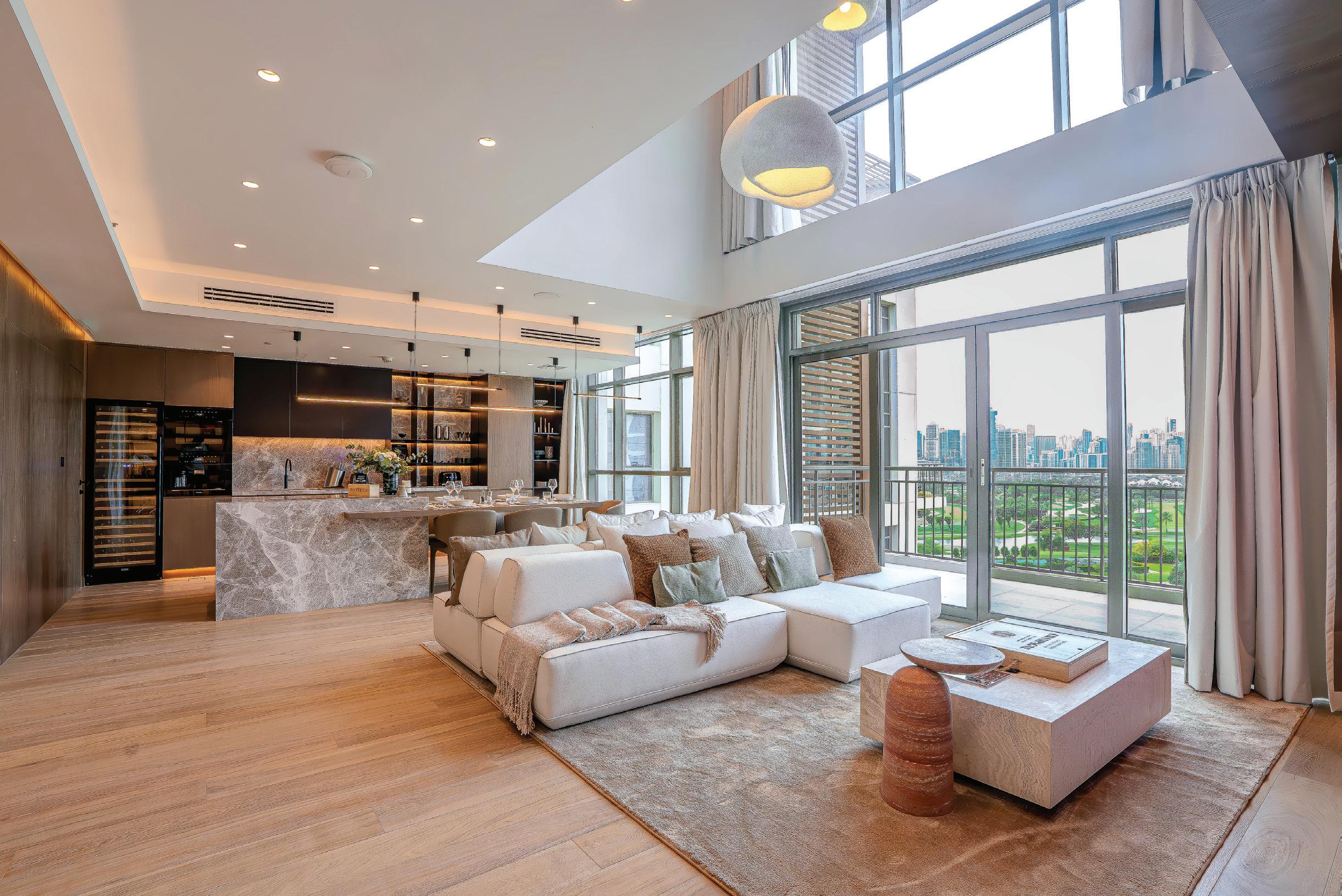
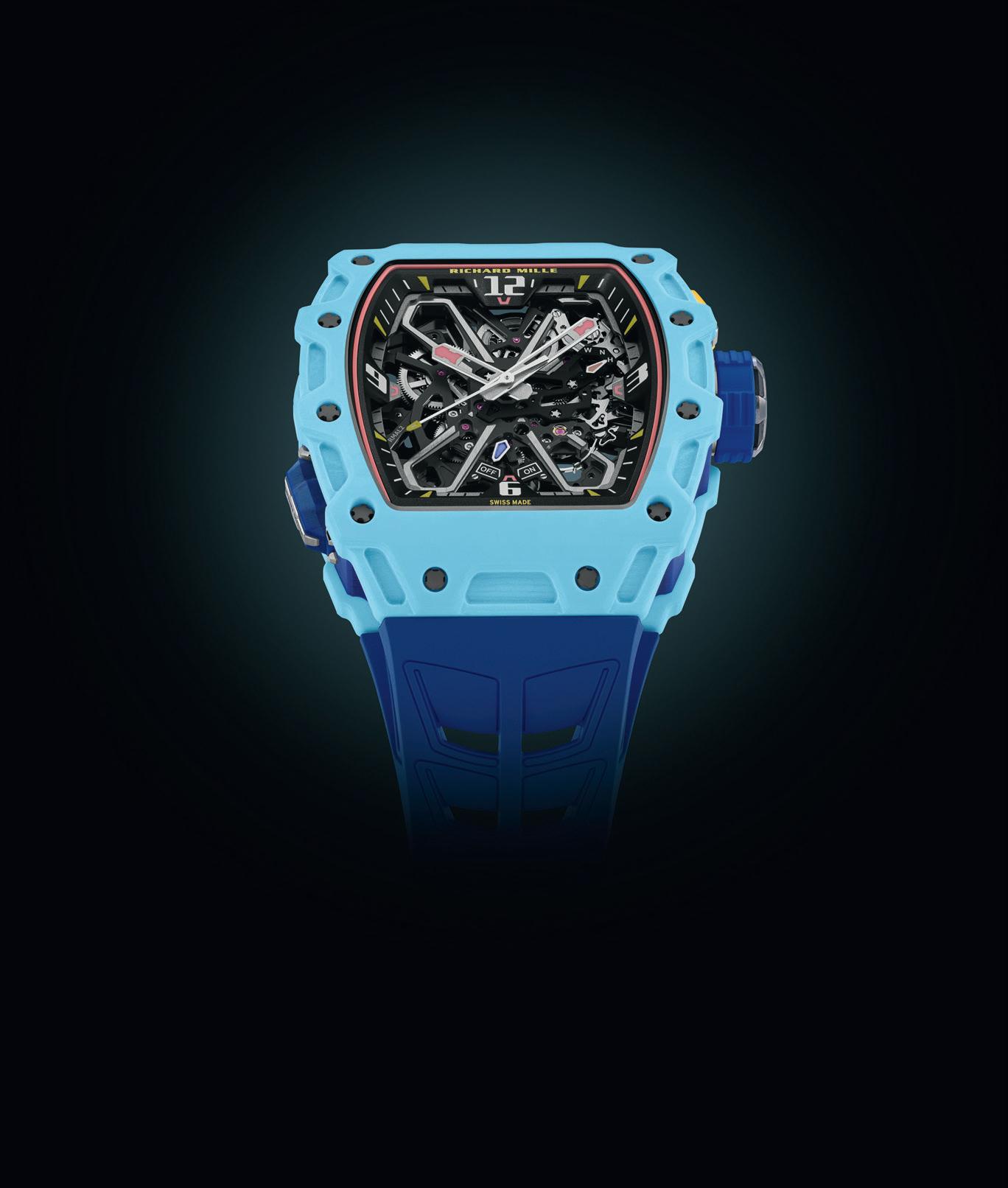
RM 35-03 Rafael Nadal
Skeletonised automatic winding calibre
55-hour power reserve (± 10%)
Baseplate and bridges in grade 5 titanium
Function selector
Patented butterfly rotor
Case in Blue and Pastel Blue Quartz TPT®
